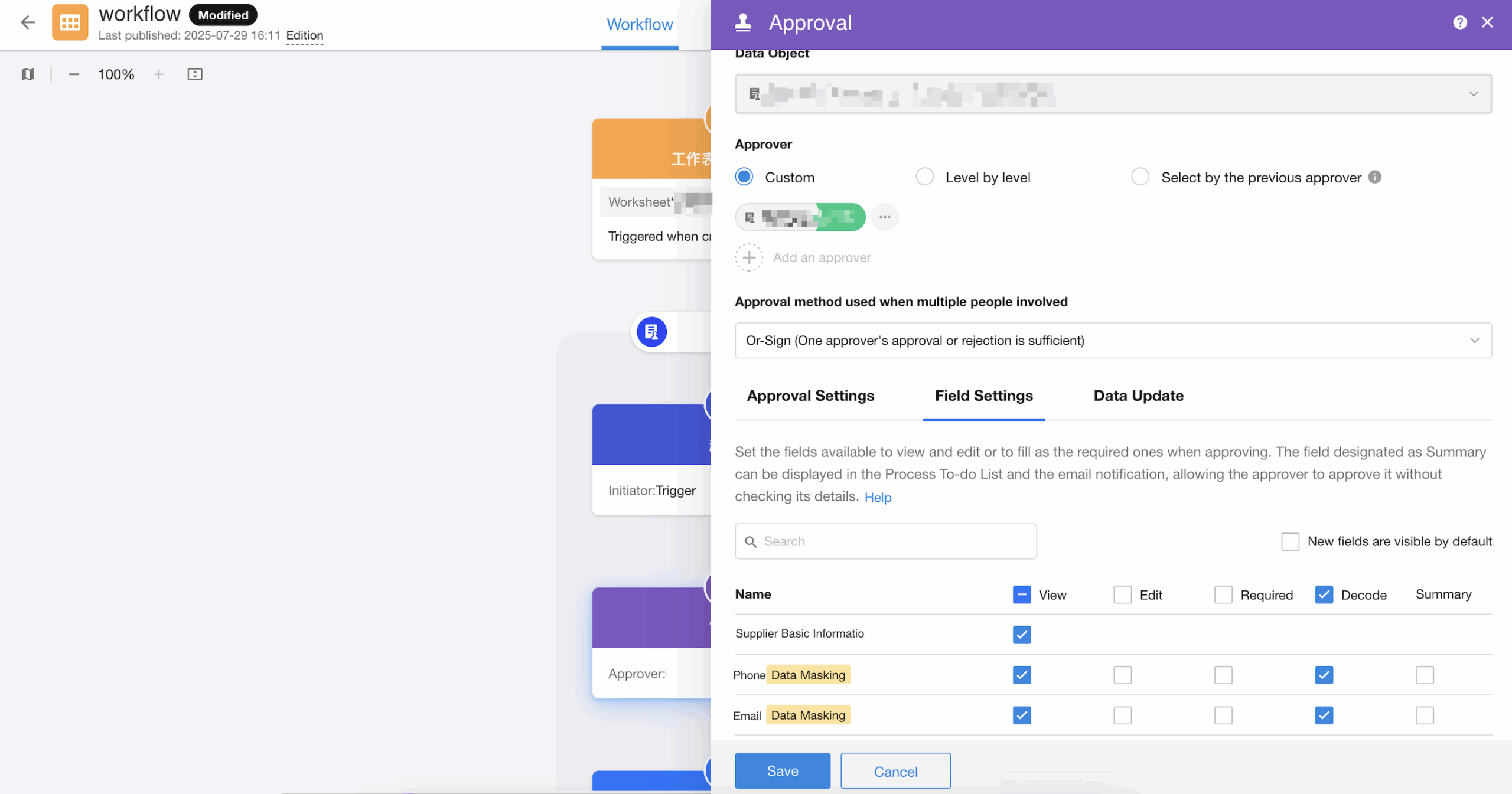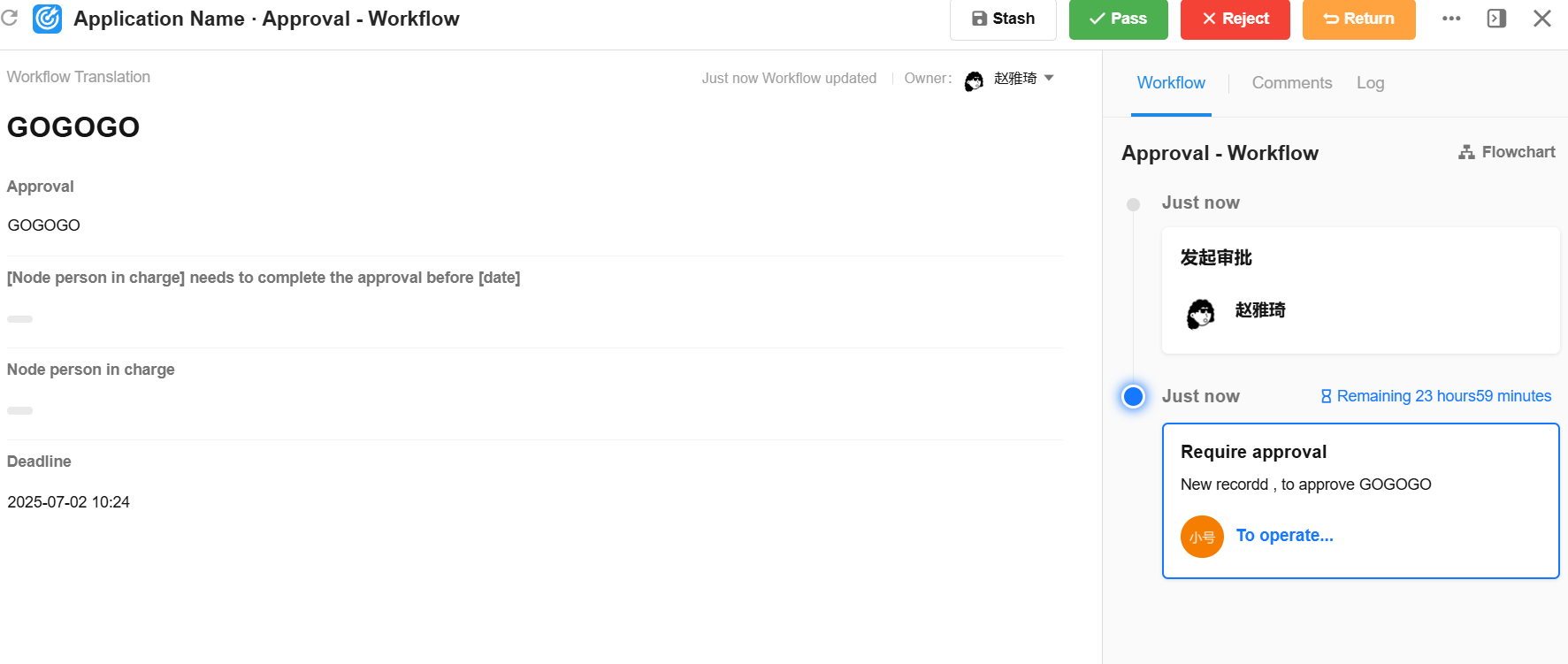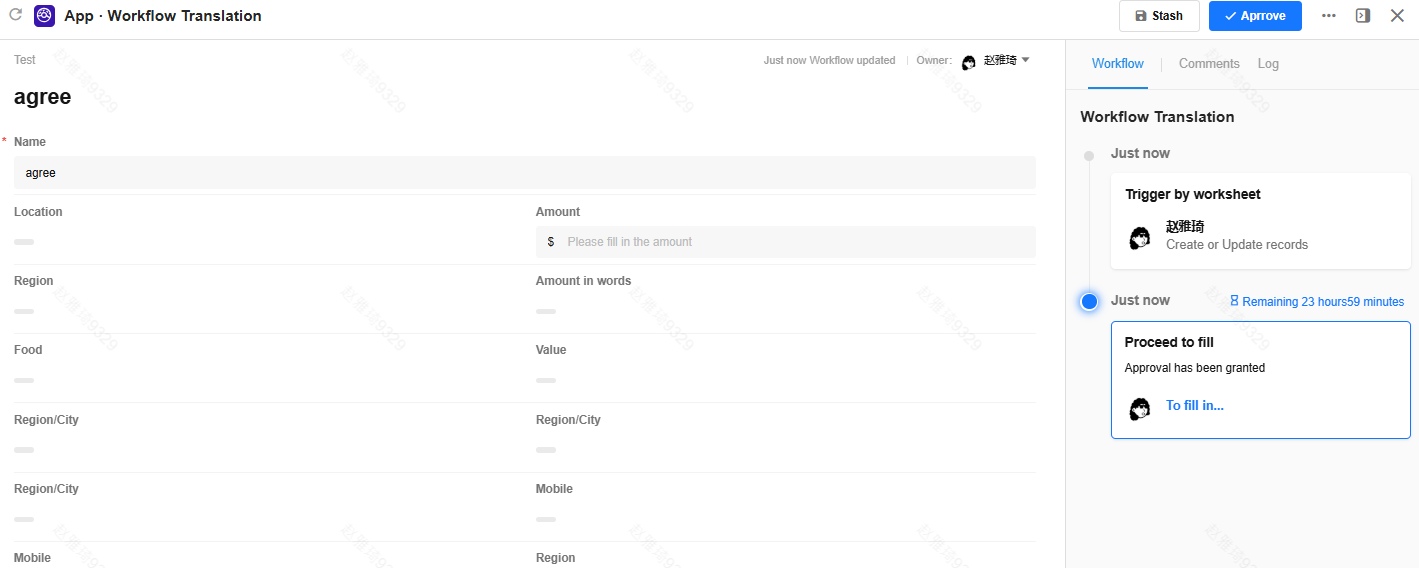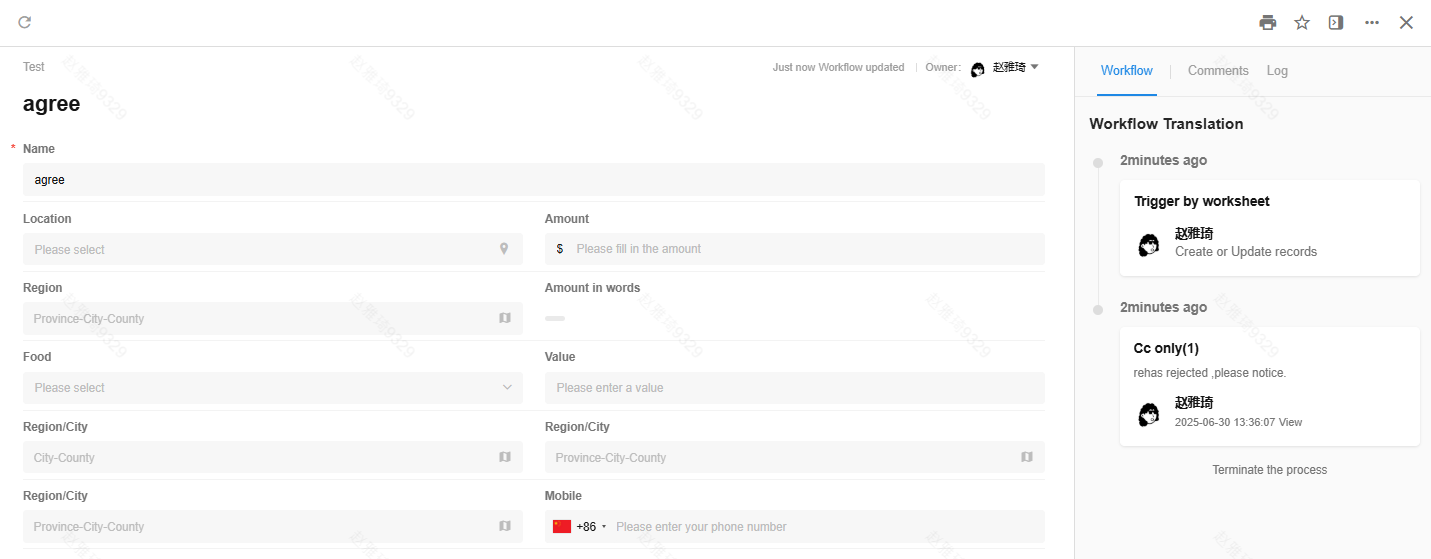What’s New
- New Right-Side Toolbar (AI Assistant Mingo)
- Granular Authorization for Application Keys & API Documentation Enhancements
- Multi-Position Support for Members
- Table/Gallery/Kanban Views: Grouped Record Display
- Business Rule-Based Record Locking
- Application Import & Upgrade: Support for Overwrite & Update
- Form Editor Layout Optimization
- Number Charts: Custom Background Options
AI Capabilities
New Right-Side Toolbar (Featuring AI Assistant Mingo)
In this version update, the original right-side message panel has been upgraded to a brand-new right-side toolbar. Messages are now just one of the available tools within the sidebar, paving the way for additional features such as Favorite, Calendar, and more to be added in the future for improved accessibility.
The new toolbar also integrates AI Assistant Mingo, serving as the central entry point for AI capabilities. Users can invoke Mingo at any time to assist with app building or data entry. (Currently, only the Help Q&A function is supported. More existing AI features will be integrated and expanded in upcoming updates.)
In addition, the toolbar now displays frequently used apps, enabling users to switch between applications more efficiently.
Preview of the new sidebar interface:
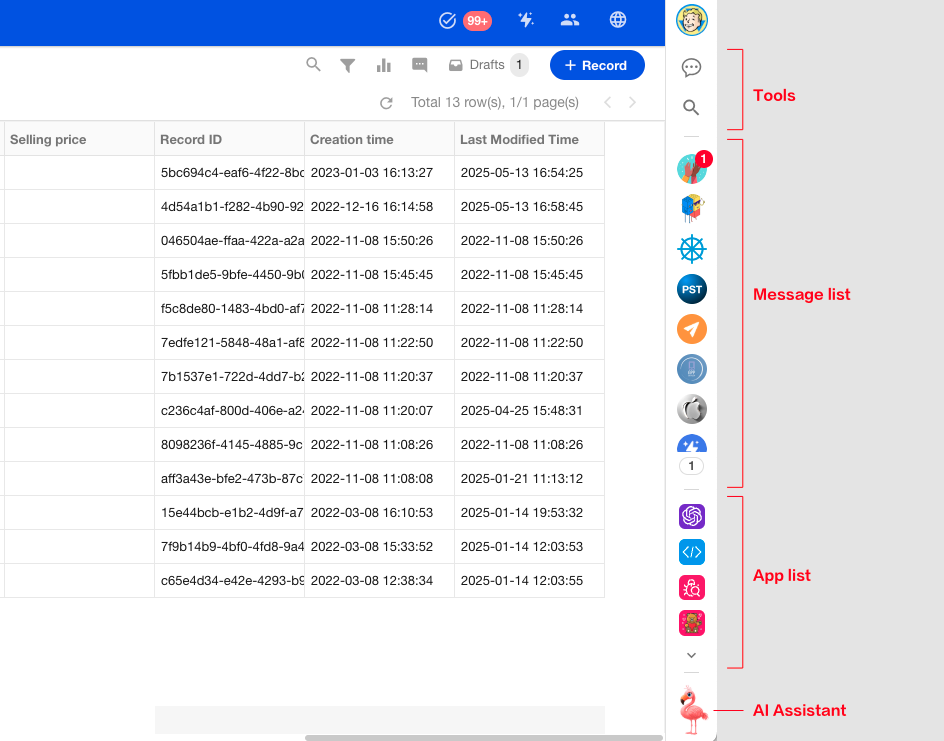
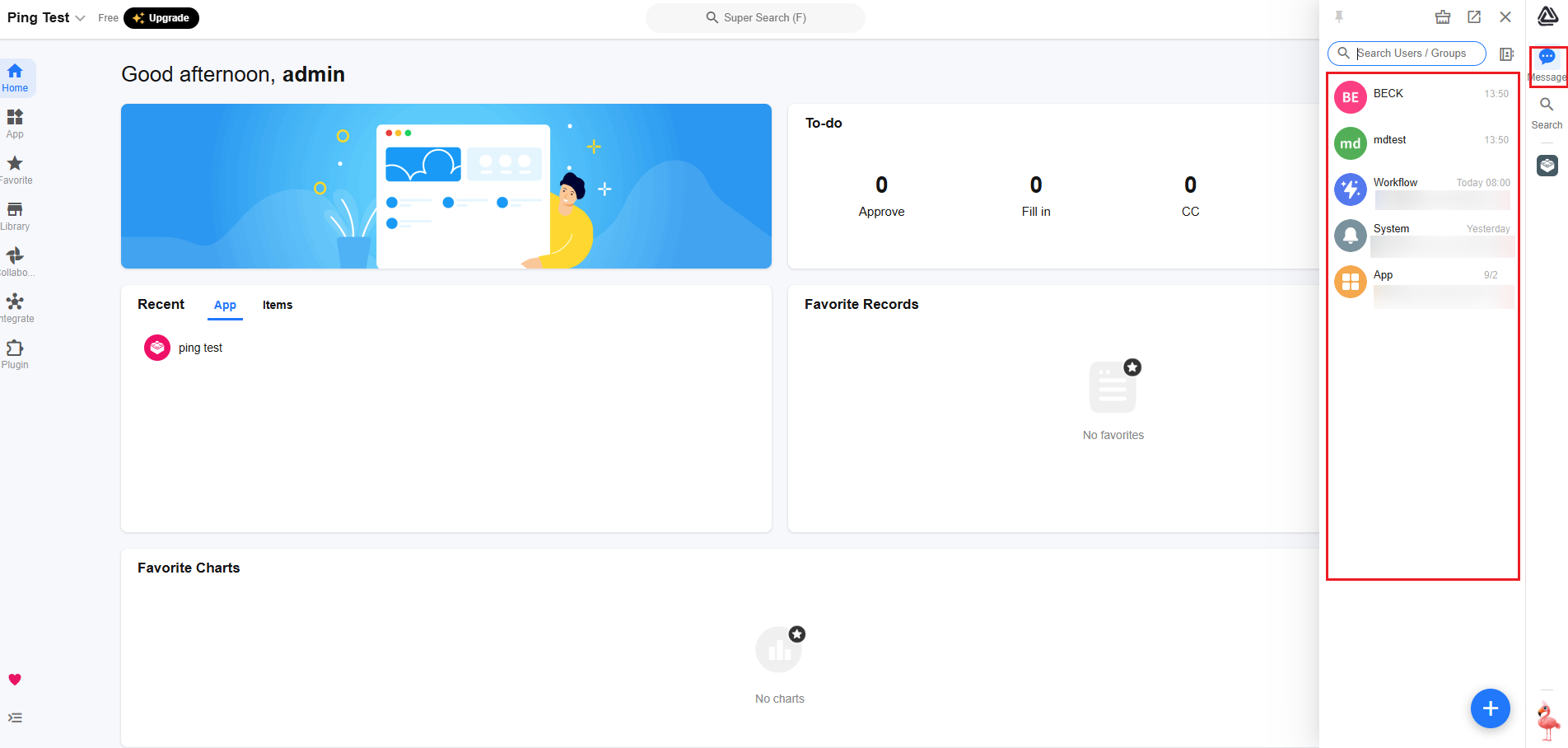 |
| Message List |
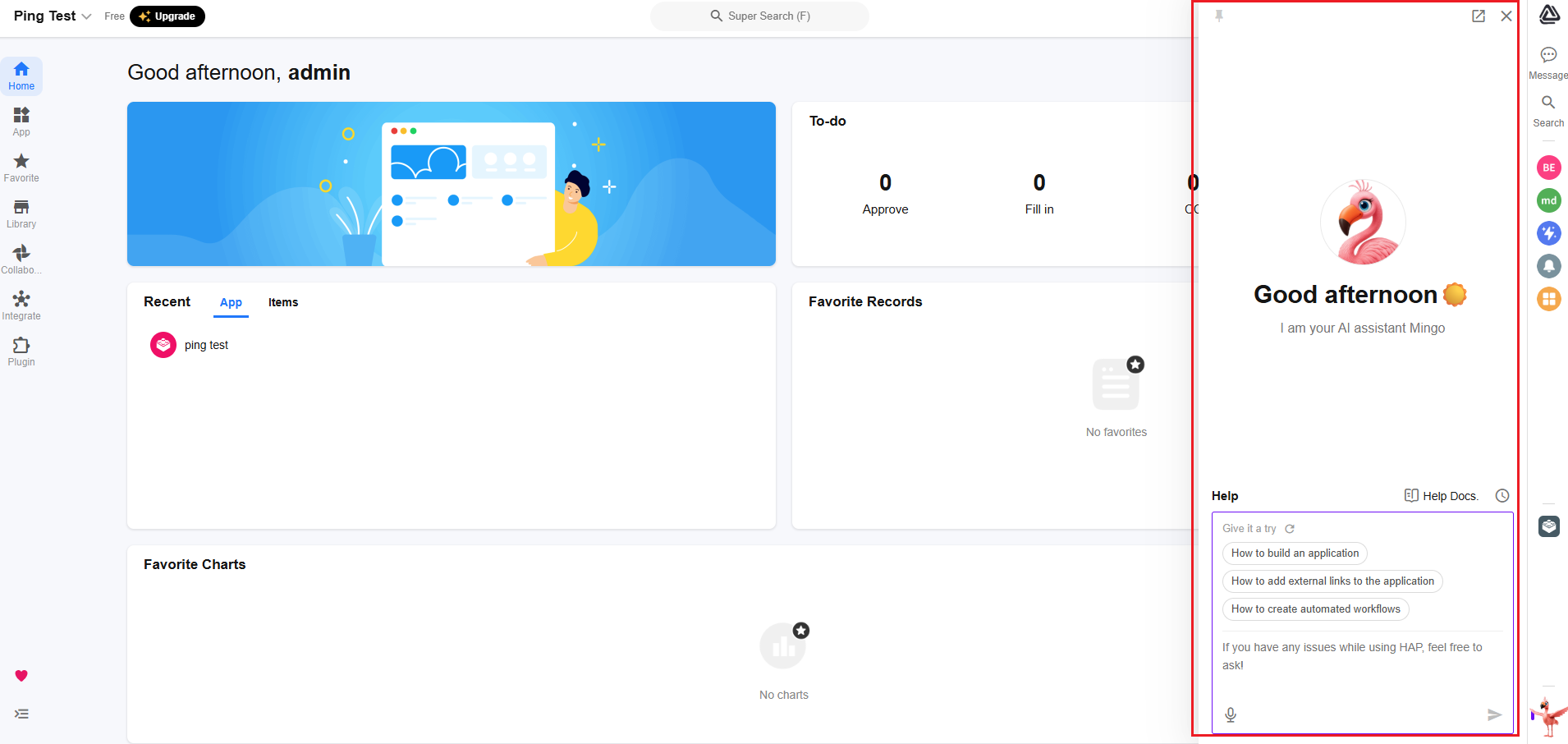 |
| Talk to AI Assistant |
Conversations with AI Assistant Mingo
Users can now manage their interactions with Mingo more efficiently:
- Open conversations in a new tab for easier viewing and continued discussion.
- Delete or rename past conversations for better organization.
- Share conversations with others as needed.
- Regenerate or edit the previous conversation to refine your prompts or results.
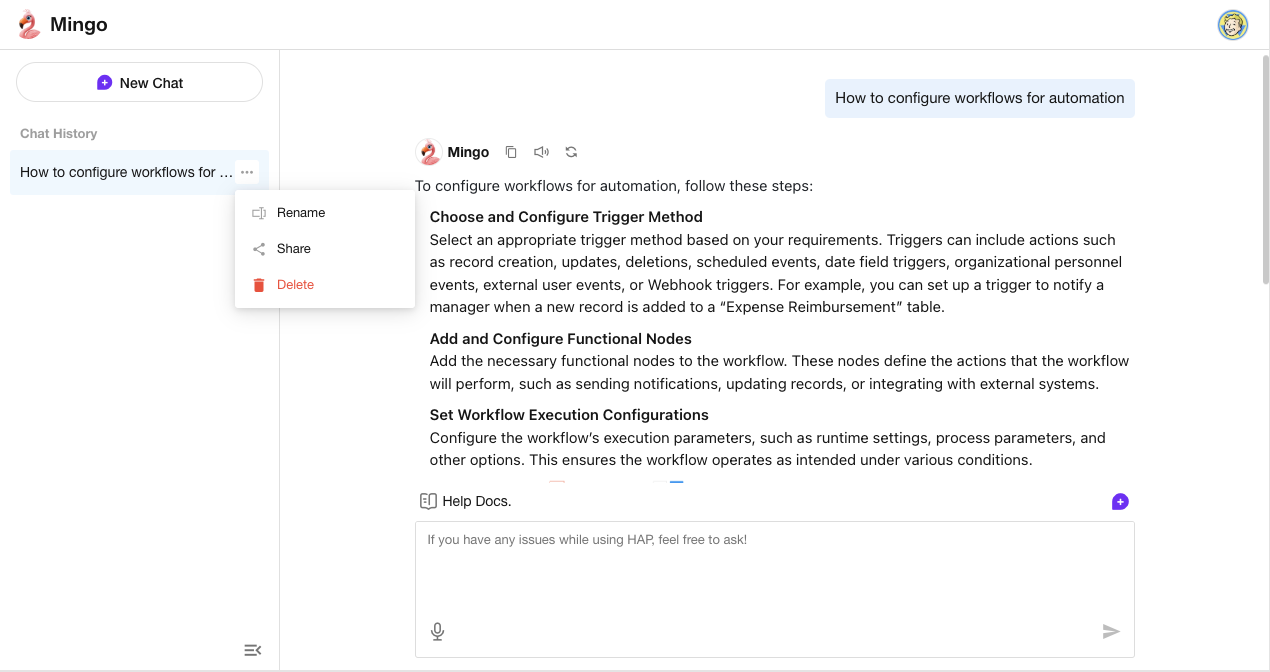
Application
Granular Authorization for Application Keys
With this update, application API keys now support fine-grained permission settings, including:
- Create, delete, update, and view permissions for worksheet data
- View access permissions for worksheet views
These enhancements improve data access control and API security.
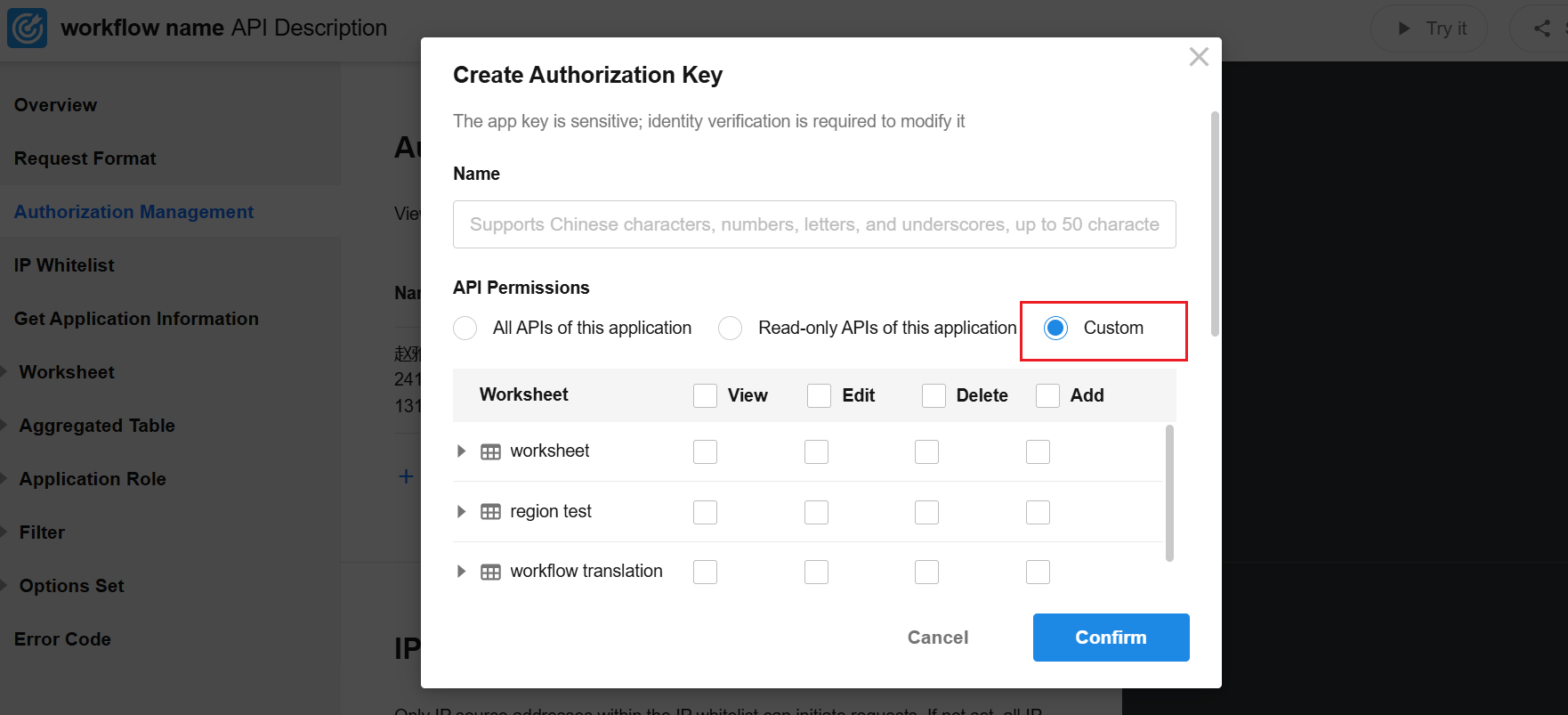
New View Information Table in API Documentation
A new View Information Table has been added to the API documentation.
- Users can now see all views within a worksheet.
- View aliases can also be configured for easier reference.
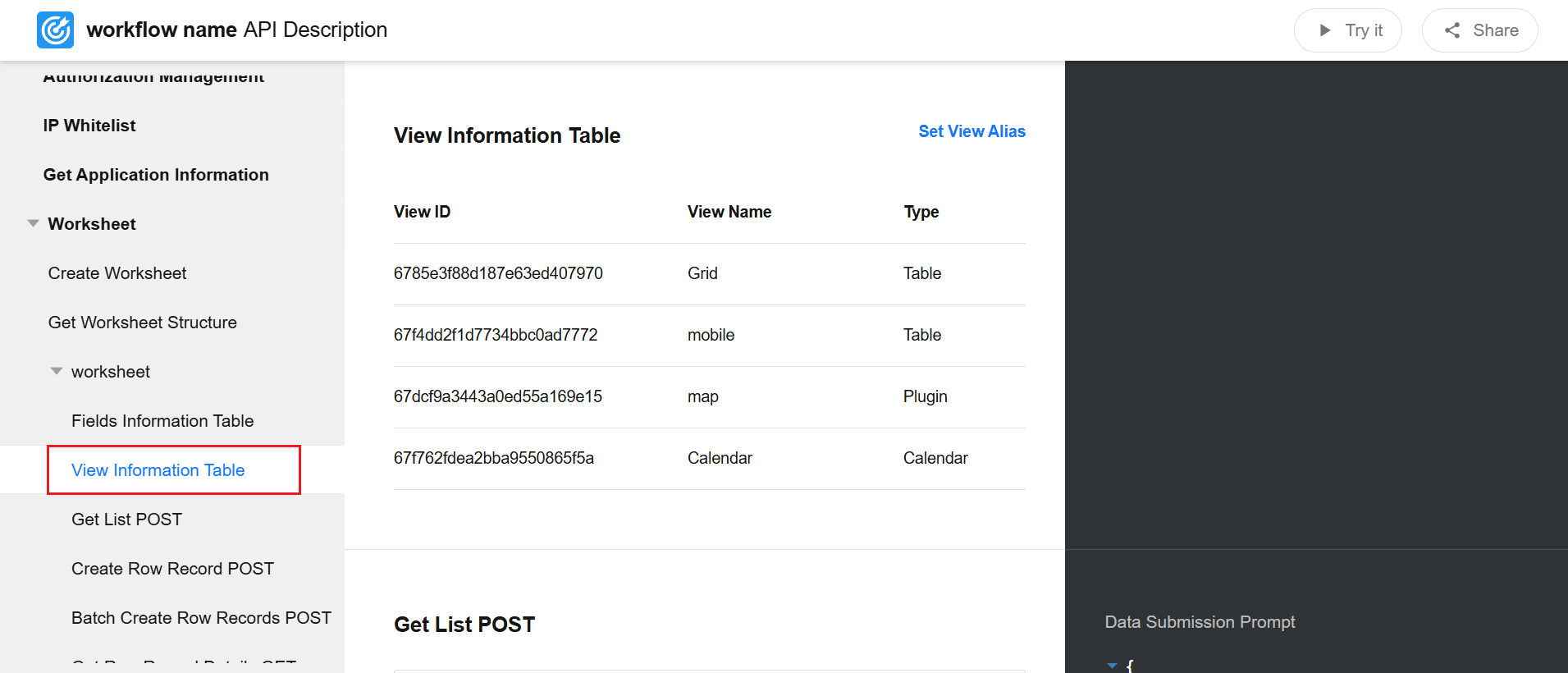
New Filter Generator in API Documentation
The field information table page now includes a Filter Generator:
- Users can configure filter rules
- The generated JSON can be directly applied to the filters parameter in APIs.
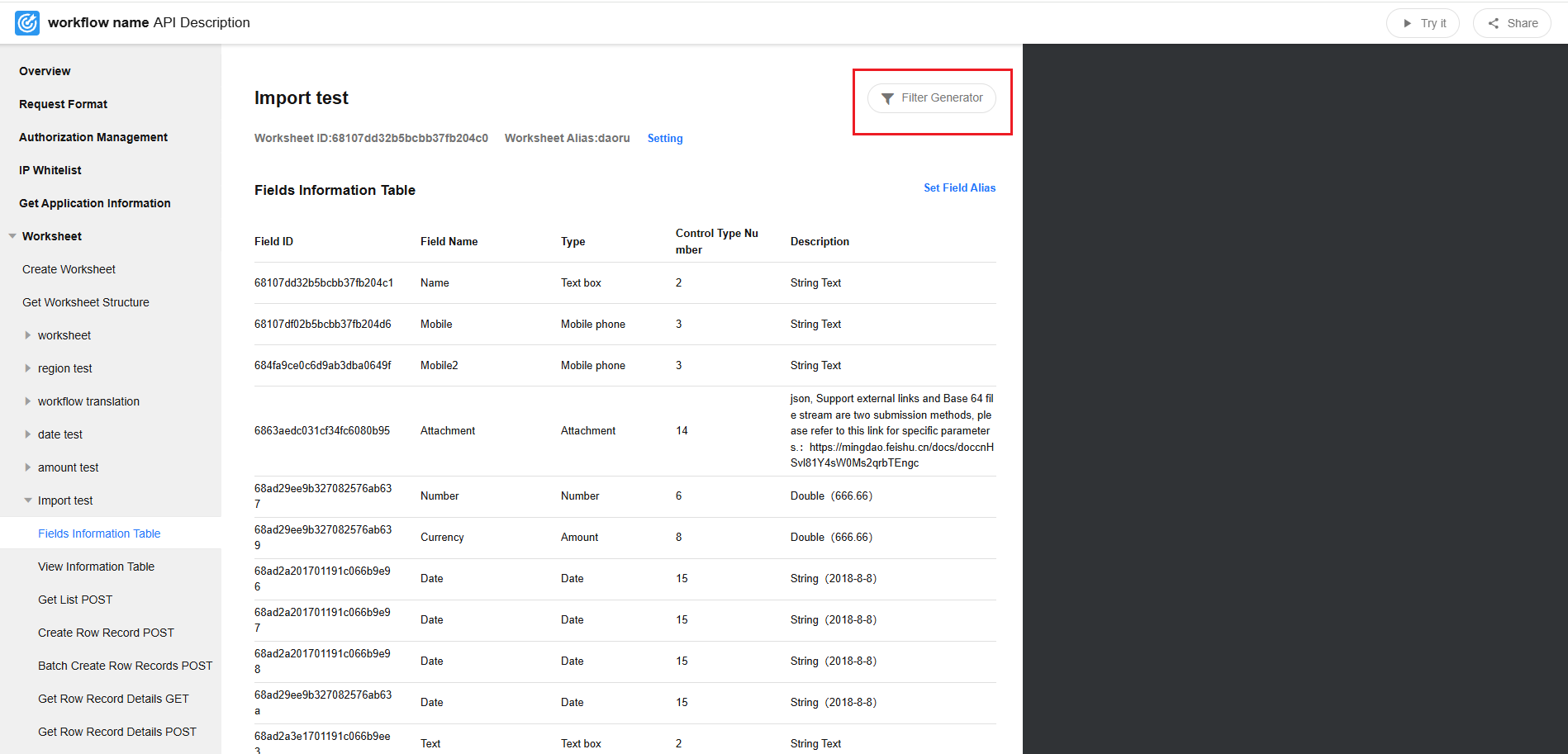
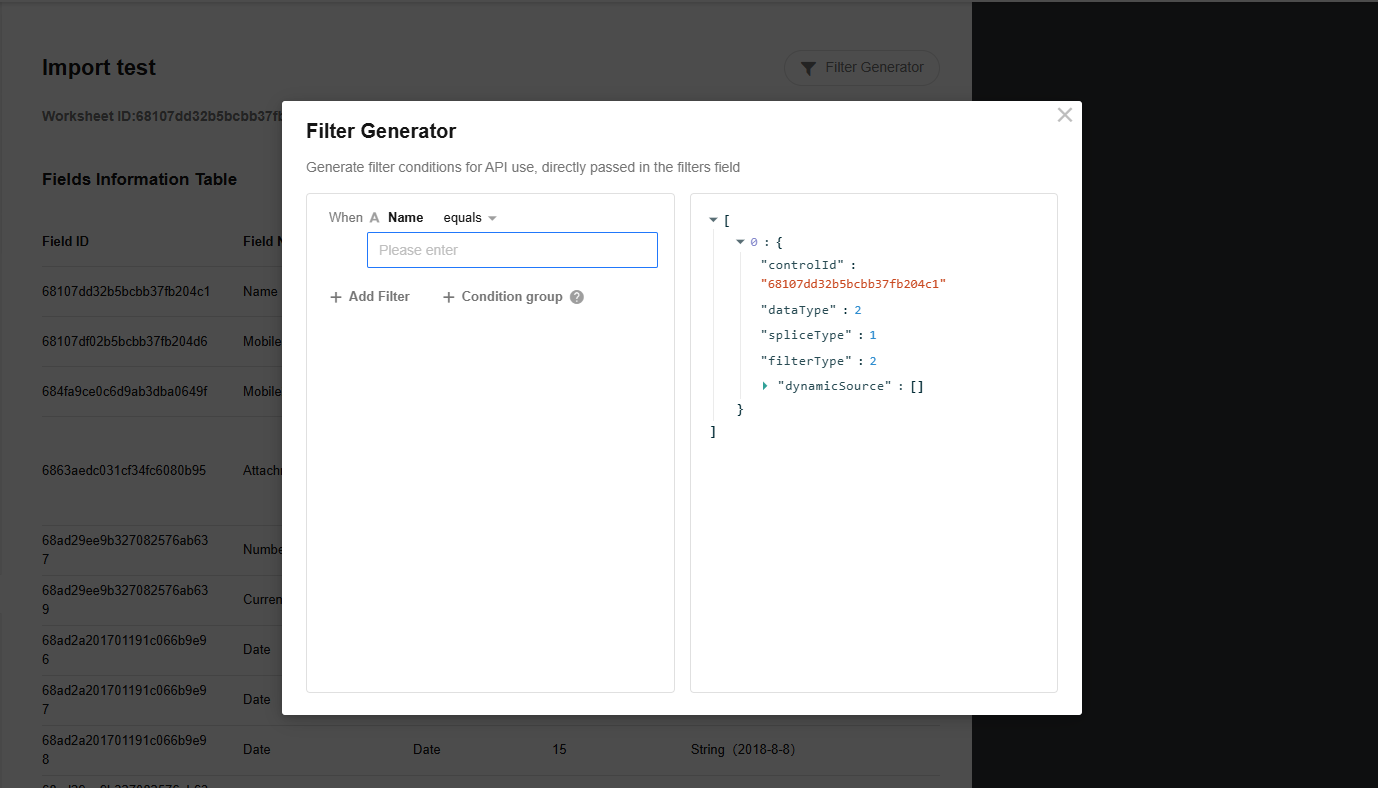
Application API: Create Worksheet API Now Includes Title Field
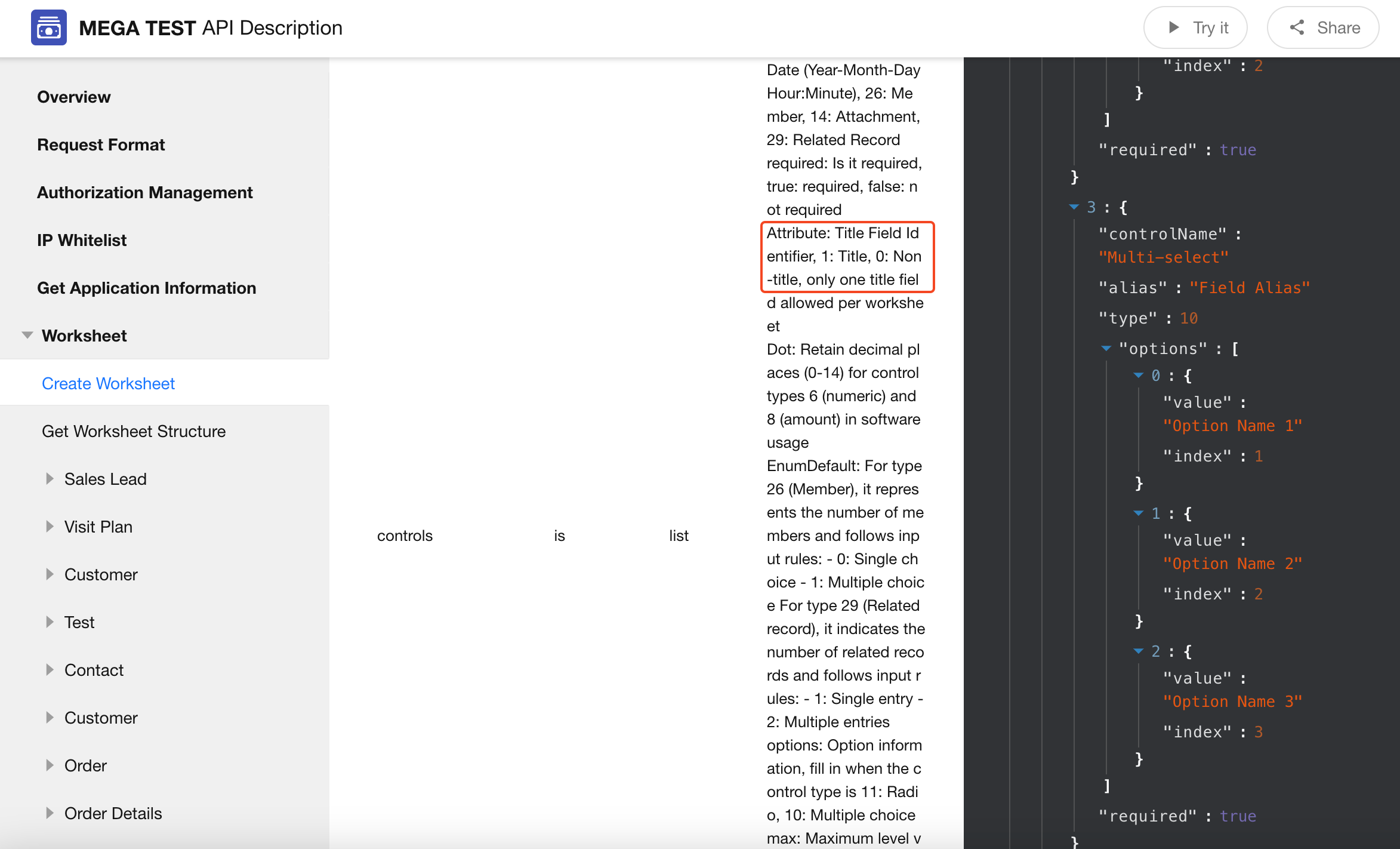
Application API: Physical Deletion for Delete Record
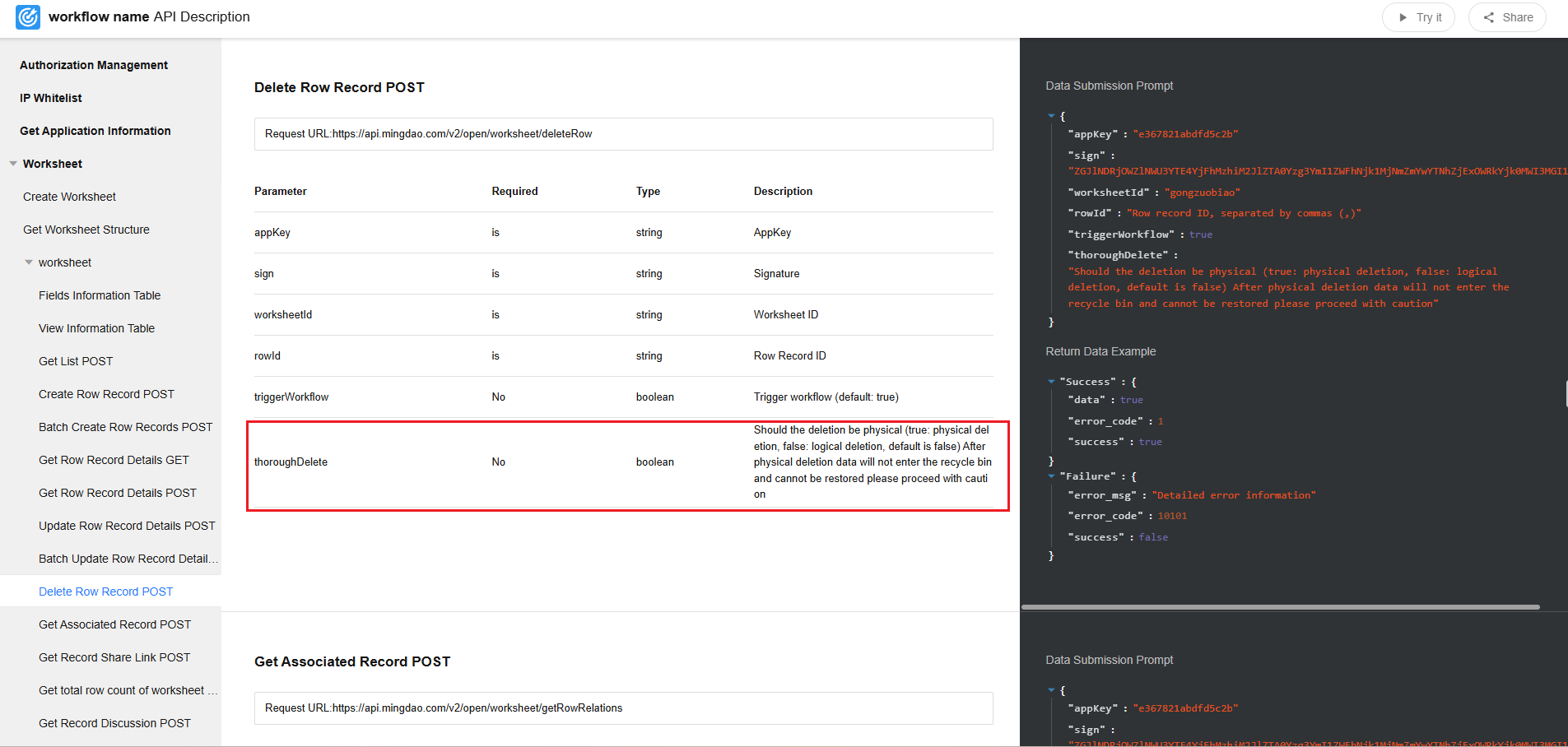
Application API: Get List API Now Includes keyWords Parameter
The Get List API now includes a keyWords parameter, allowing fuzzy keyword searches for data retrieval.
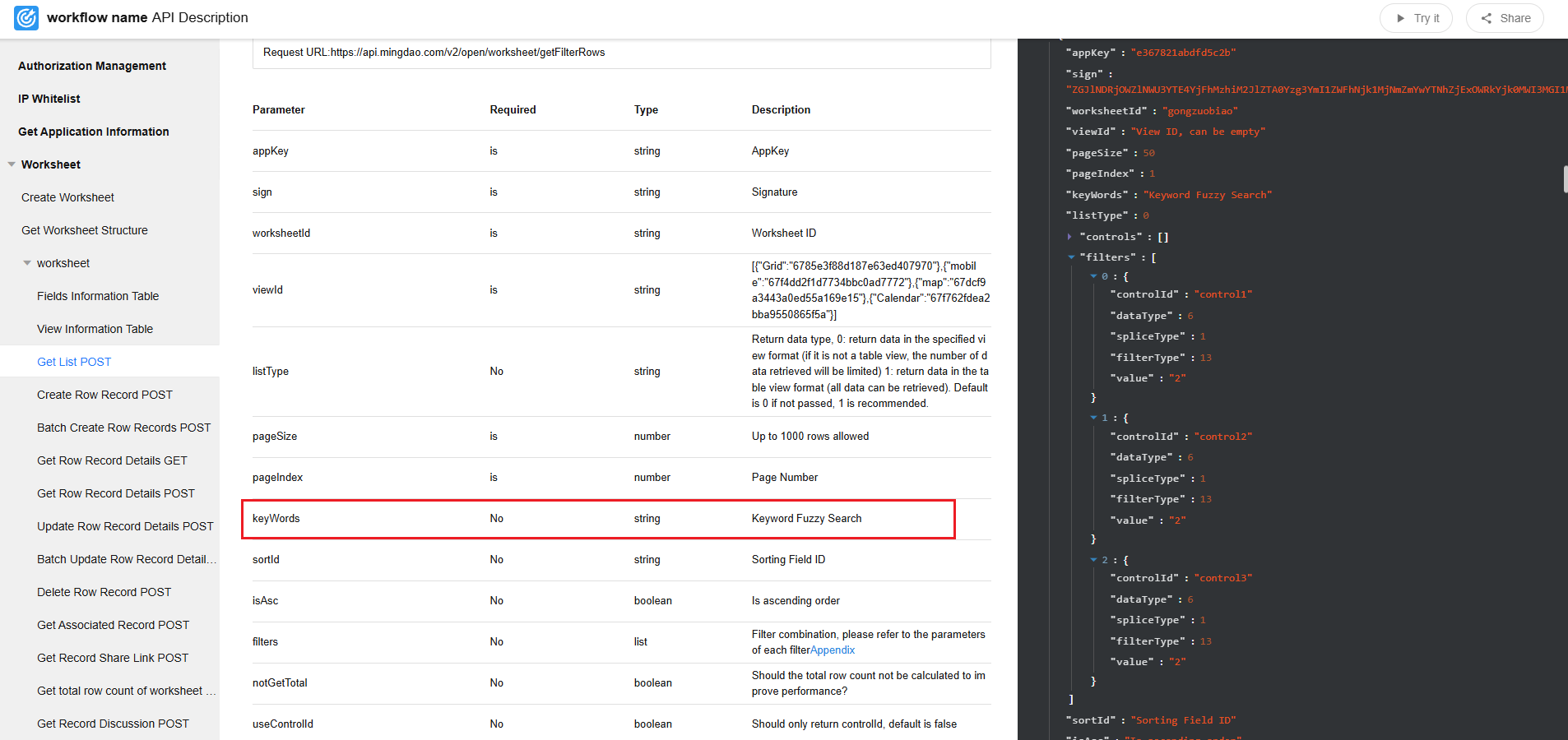
Workflow Translations in Application
Workflow-related translations have been added to the application language settings, including: Approval nodes, Fill in nodes, CC nodes, Interface Push nodes.
 |
 |
| Approval node | Fill in、CC node |
|
 |
| Interface push-popup |
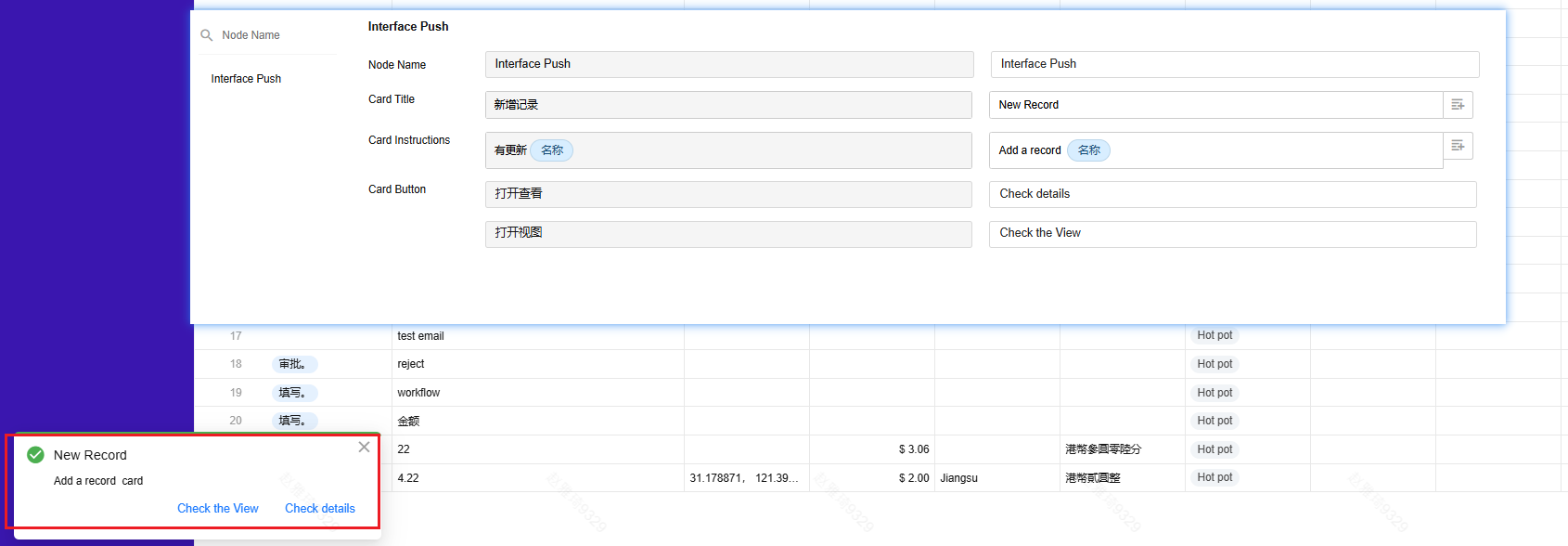 |
| Interface push-card like popup |
Application Import & Upgrade: Support for Overwrite & Update
- Added an Overwrite & Update option for application import and upgrade, ensuring that the upgraded app structure is fully aligned with the source app.
- The upgrade details page provides a clear comparison between source and target data, offering greater transparency into the changes applied during the upgrade.
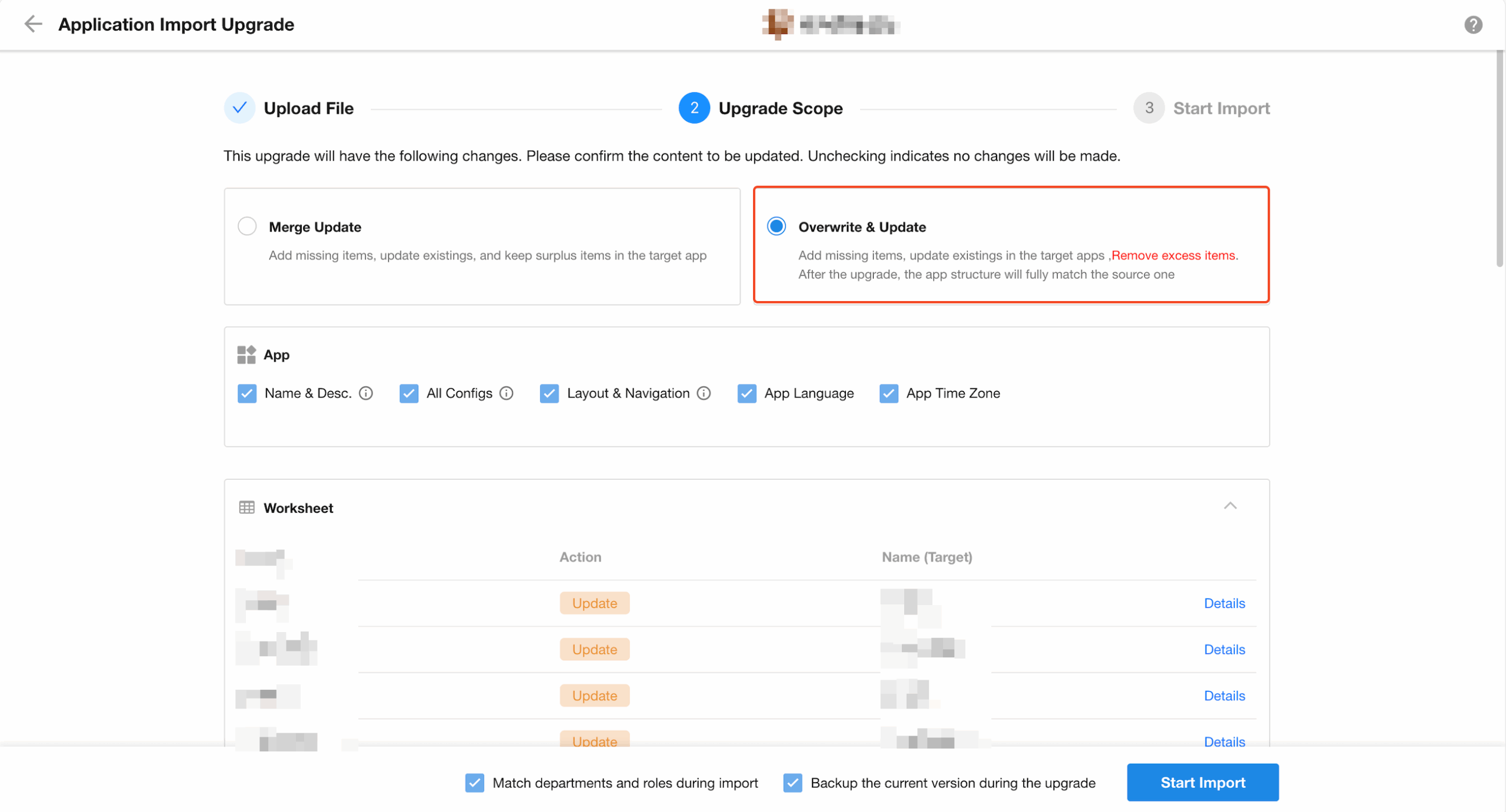
Worksheet
Record Edit Lock
A new Edit Lock feature is now available in the Edit Form > More Settings section. This feature is available for Professional Edition users.
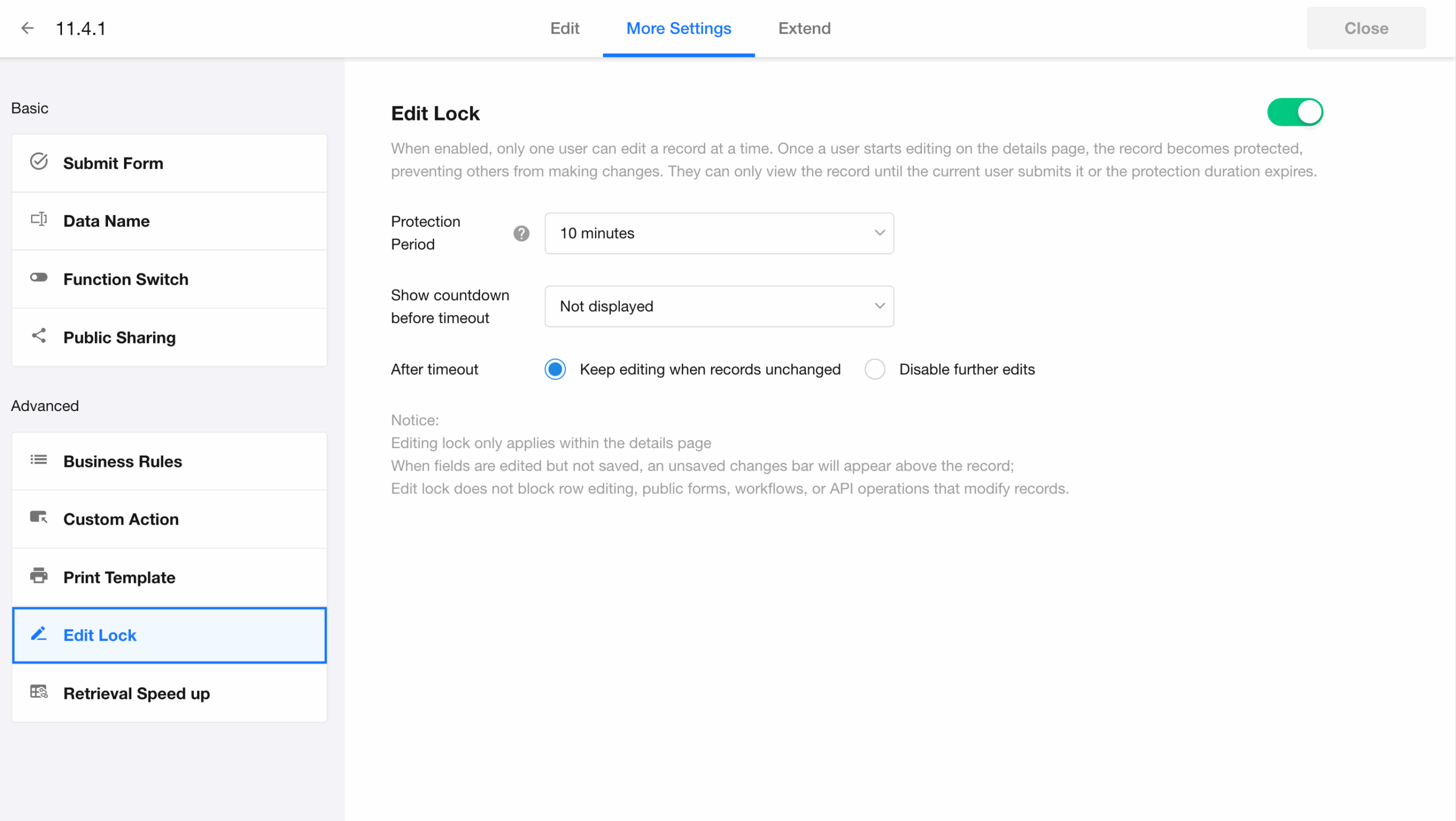
Edit Lock Behavior
When a user begins editing a record from its detail page, the record enters a locked state. During this period:
- Only the current user can make changes.
- All other users have read-only access to the record.
- The lock is automatically released once the user submits the record or remains inactive beyond the configured timeout period.
Other users attempting to access the record will see a lock notification.
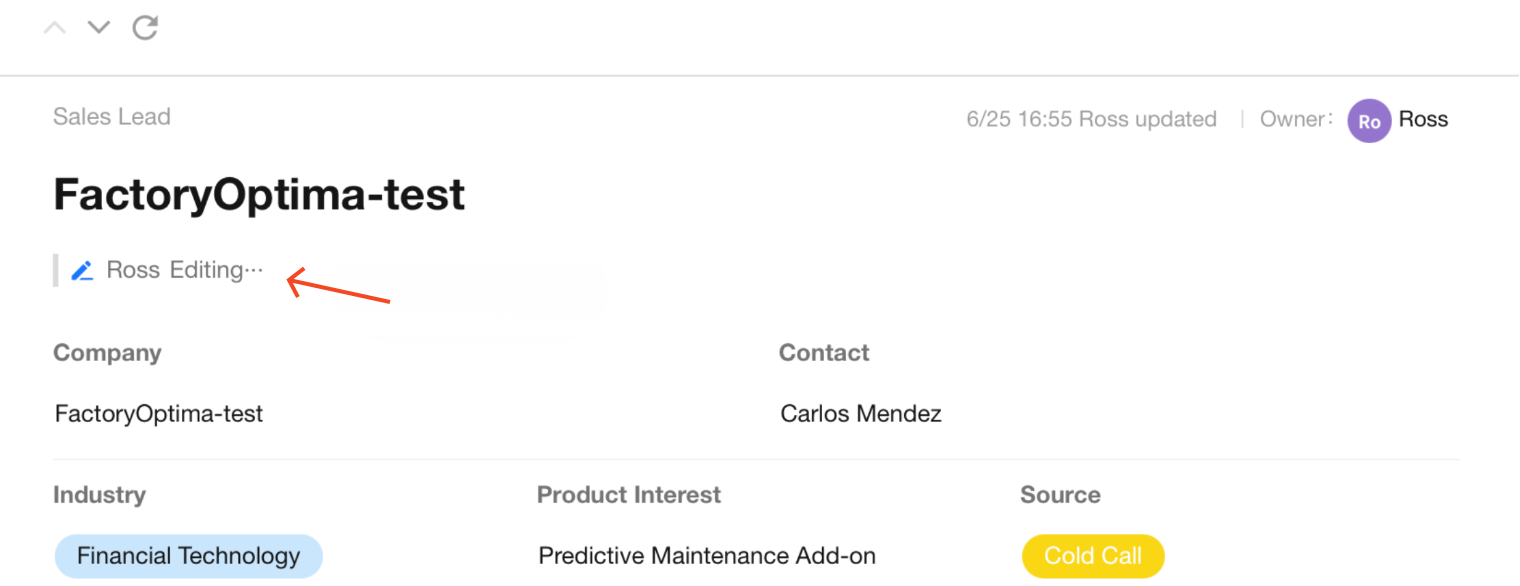
Lock Timeout Settings
You can define how long the edit lock remains active without user interaction.
Key behaviors include:
a. Countdown Reminder Before Timeout
- You can enable a countdown prompt to appear before the lock expires.
- Clicking “Got it” will dismiss the prompt only; it will not reset the countdown.
- Only further edits will refresh the countdown timer.
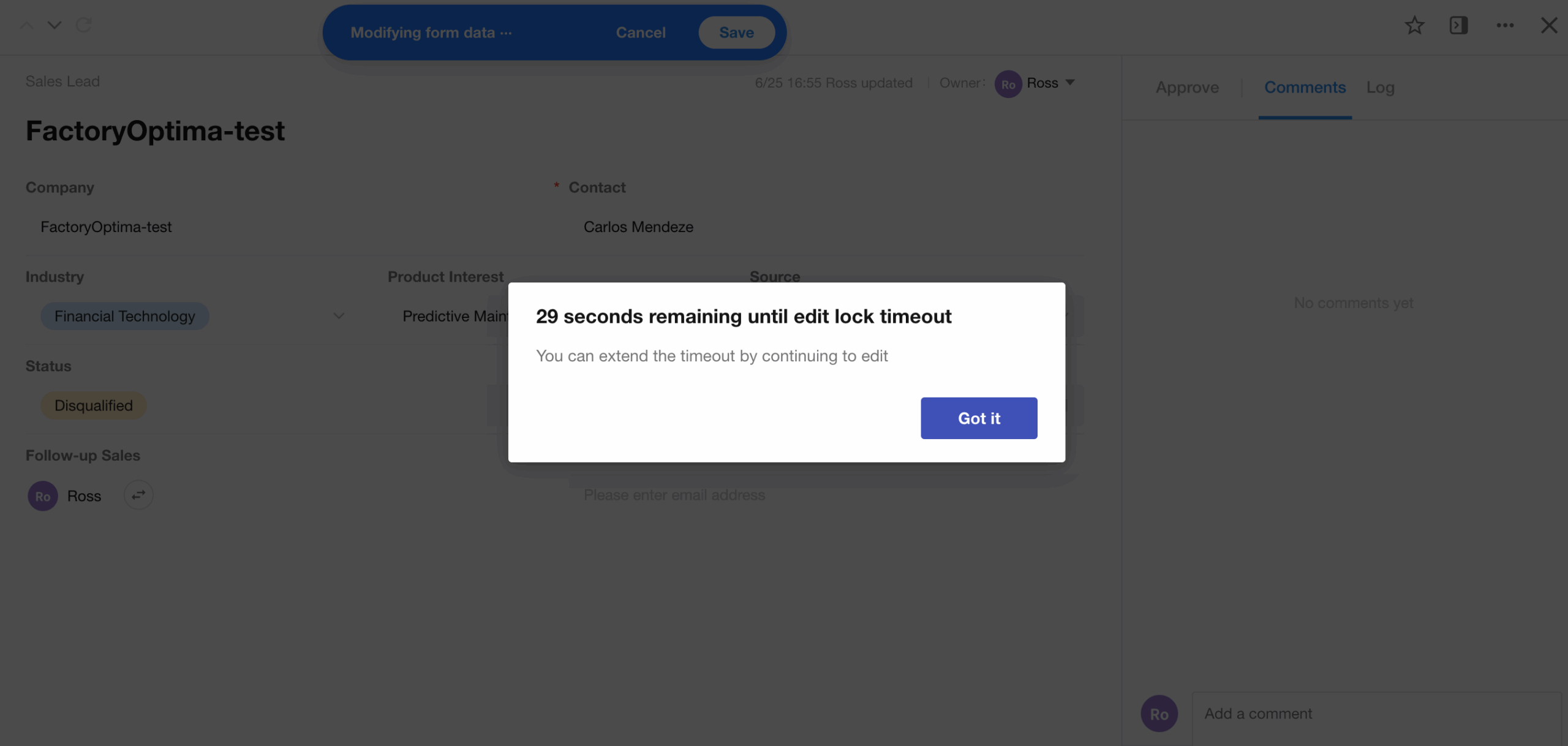
b. Timeout Behavior
After timeout, the system will display a pop-up. There are two possible configurations:
- Keep editing when records unchanged
- When enabled, clicking “Keep editing” will check if the record was updated or if others are currently editing.
- The user can continue only if no updates occurred and no other user is editing the record.
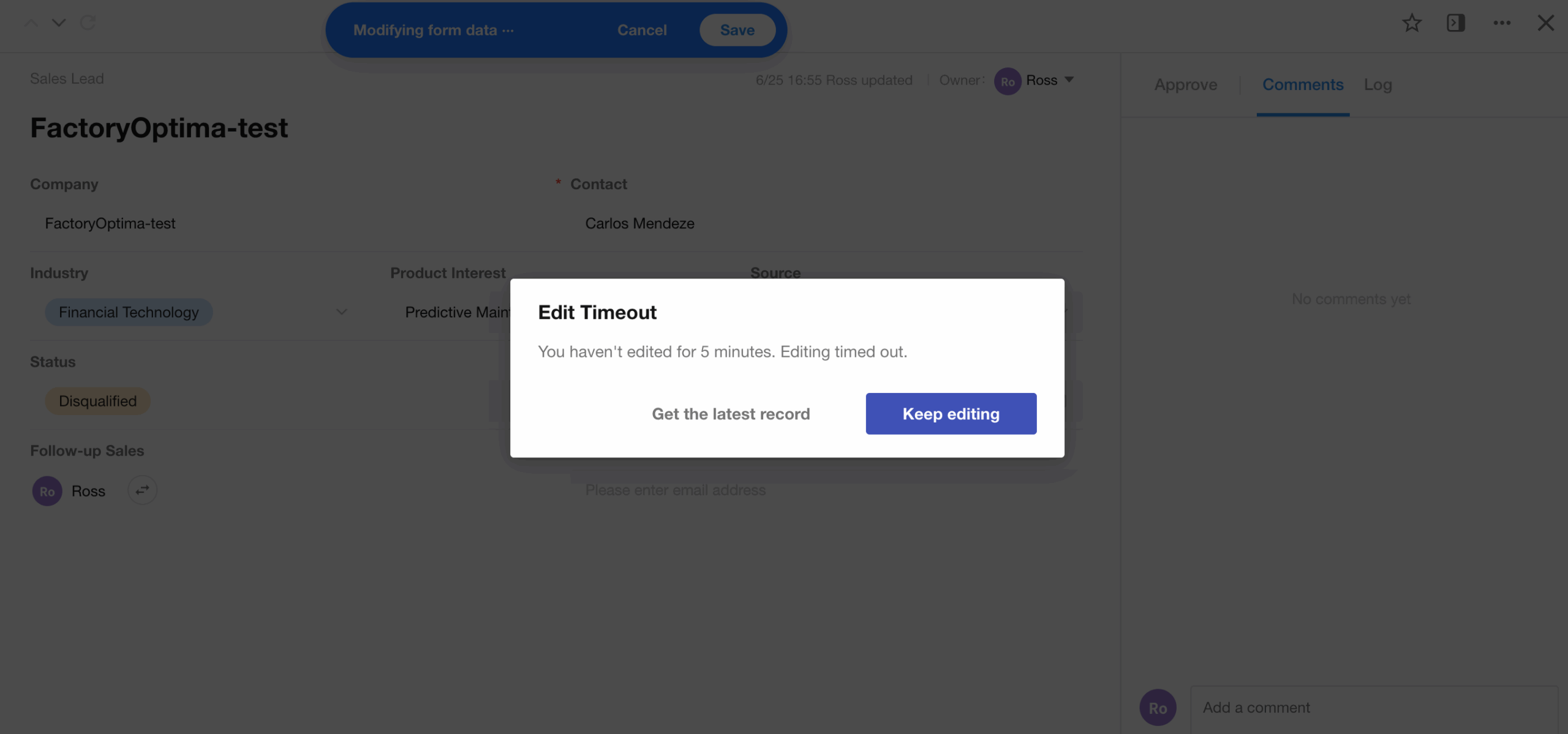
- Disable further edits
- When this option is enabled, editing is blocked completely after timeout, regardless of record changes.
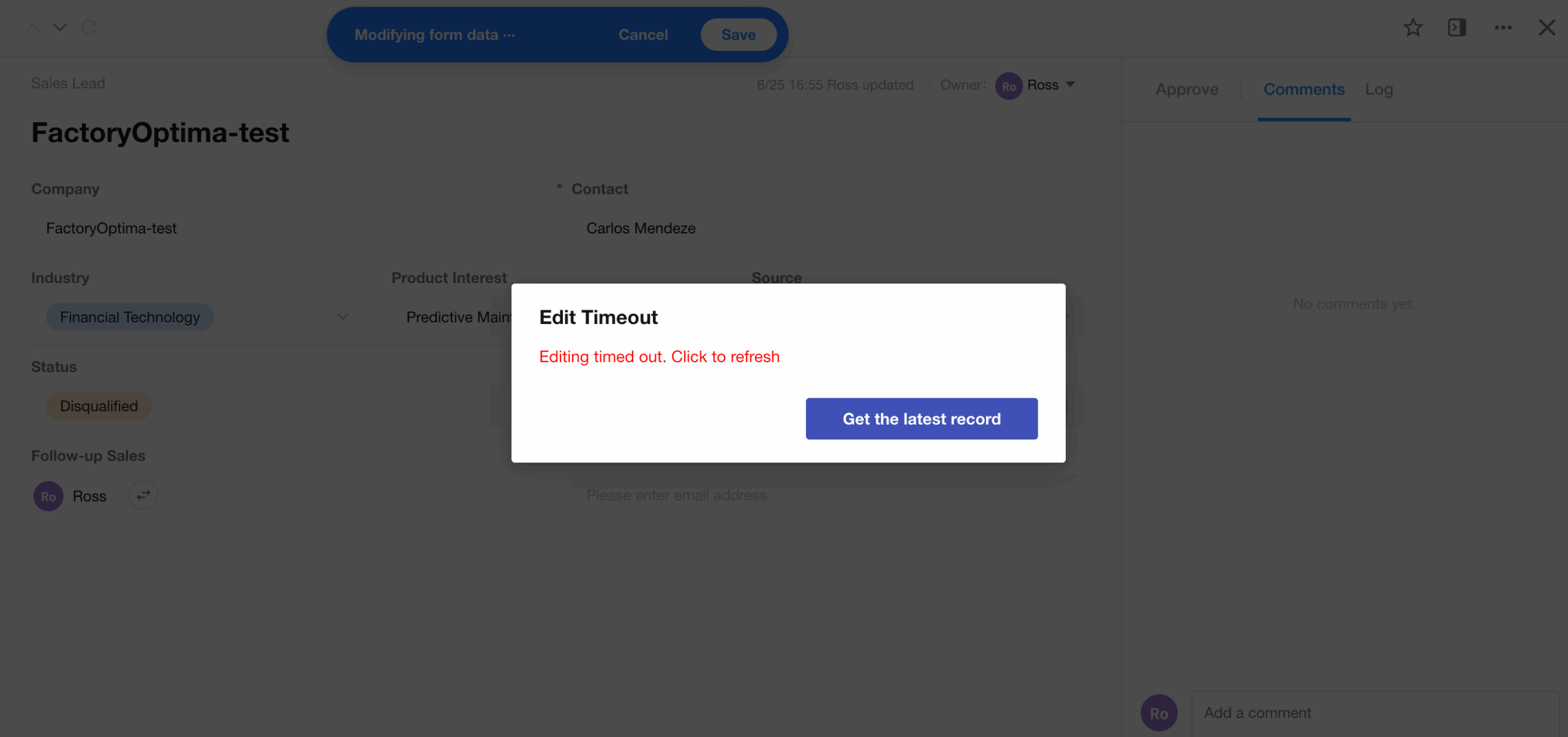
- When Does the Edit Lock Take Effect?
The edit lock is activated when:
- A user enters the record detail page and starts editing
- A blue banner appears at the top indicating: “Modifying form data…”
Note: Edit lock does not apply to edits triggered by workflows, APIs, inline editing, public forms, custom buttons (Fill).
- What Actions Are Blocked by Edit Lock?
While the edit lock is activated:
- Other users cannot edit it from the detail page
- Edits via custom actions (Fill) or interface push (Fill) are also blocked
Not affected: inline editing, backend operations via workflow, import/update, APIs, public forms.
- Shared Lock Across Devices
The edit lock is shared across devices logged in with the same user account.
Record Locking/Business Rule-Based Locking
A new system operation: Lock Record has been introduced. Once a record is locked, it cannot be edited or deleted through any method.
- A lock icon and lock description will be displayed on the record detail page.
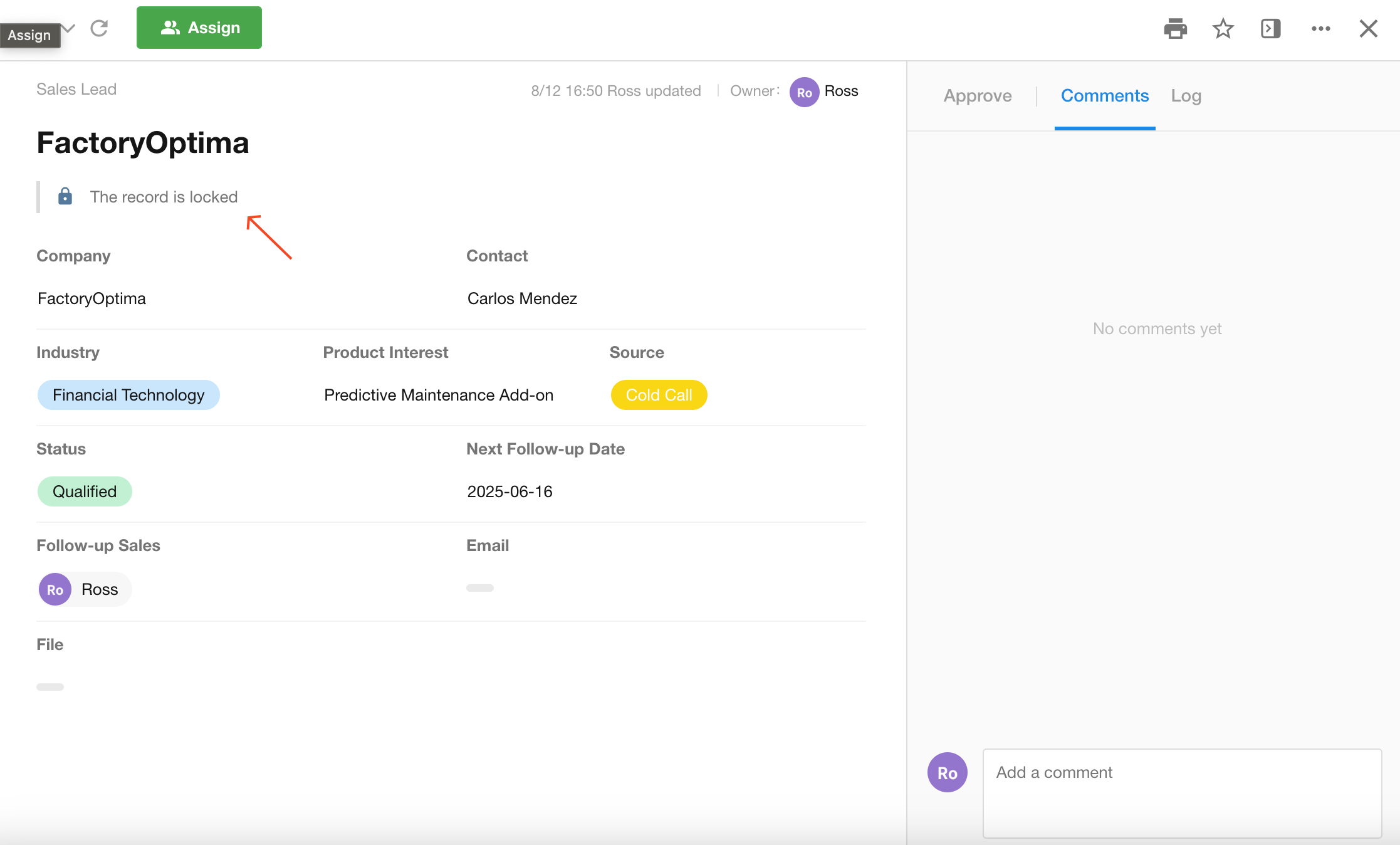
Application administrators can manage the lock status in the following ways:
- Click the lock icon directly to unlock the record
- Use the “More Actions” menu on the record detail page to lock/unlock
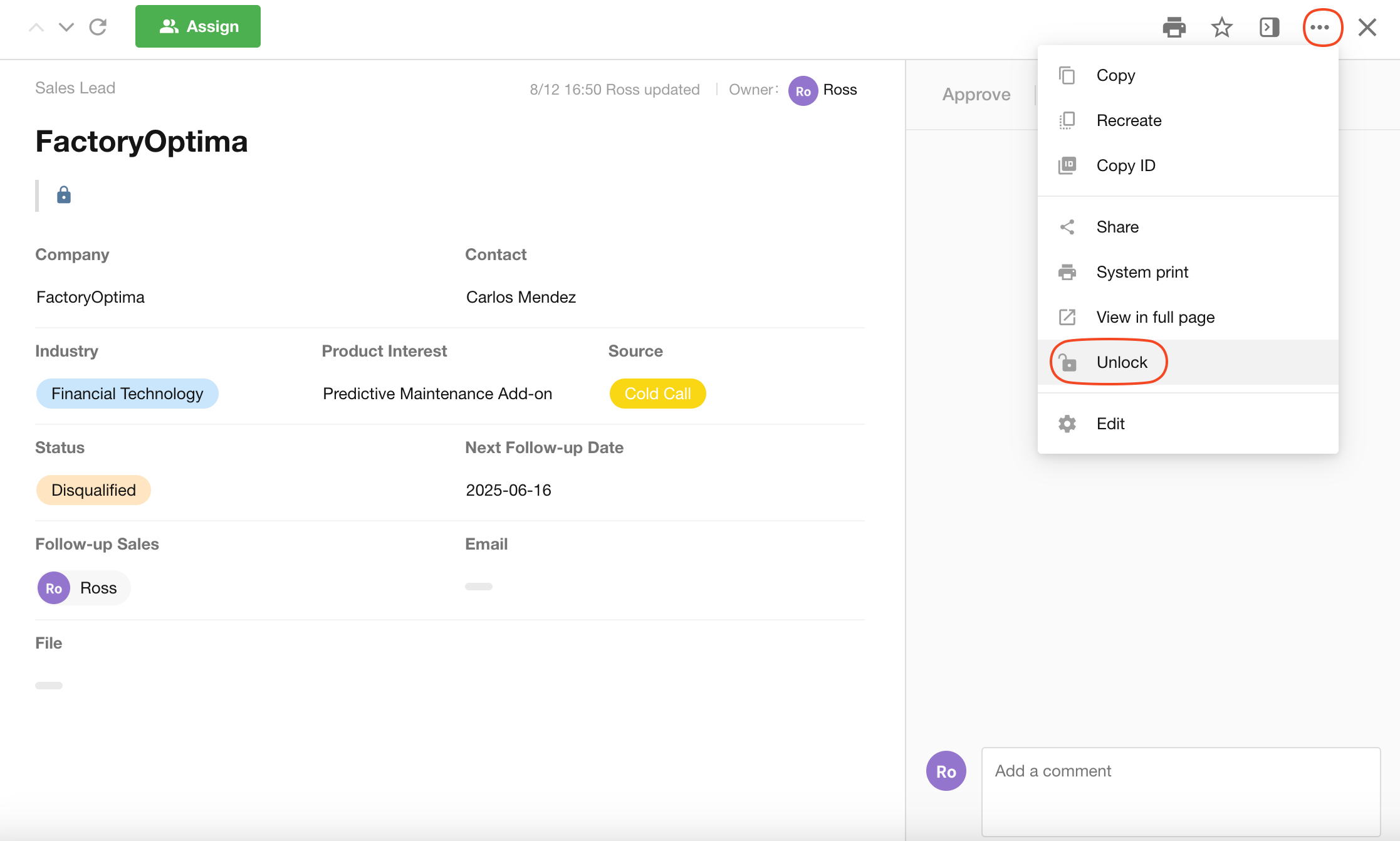 |
- Bulk lock/unlock records (up to 1,000 records per batch)
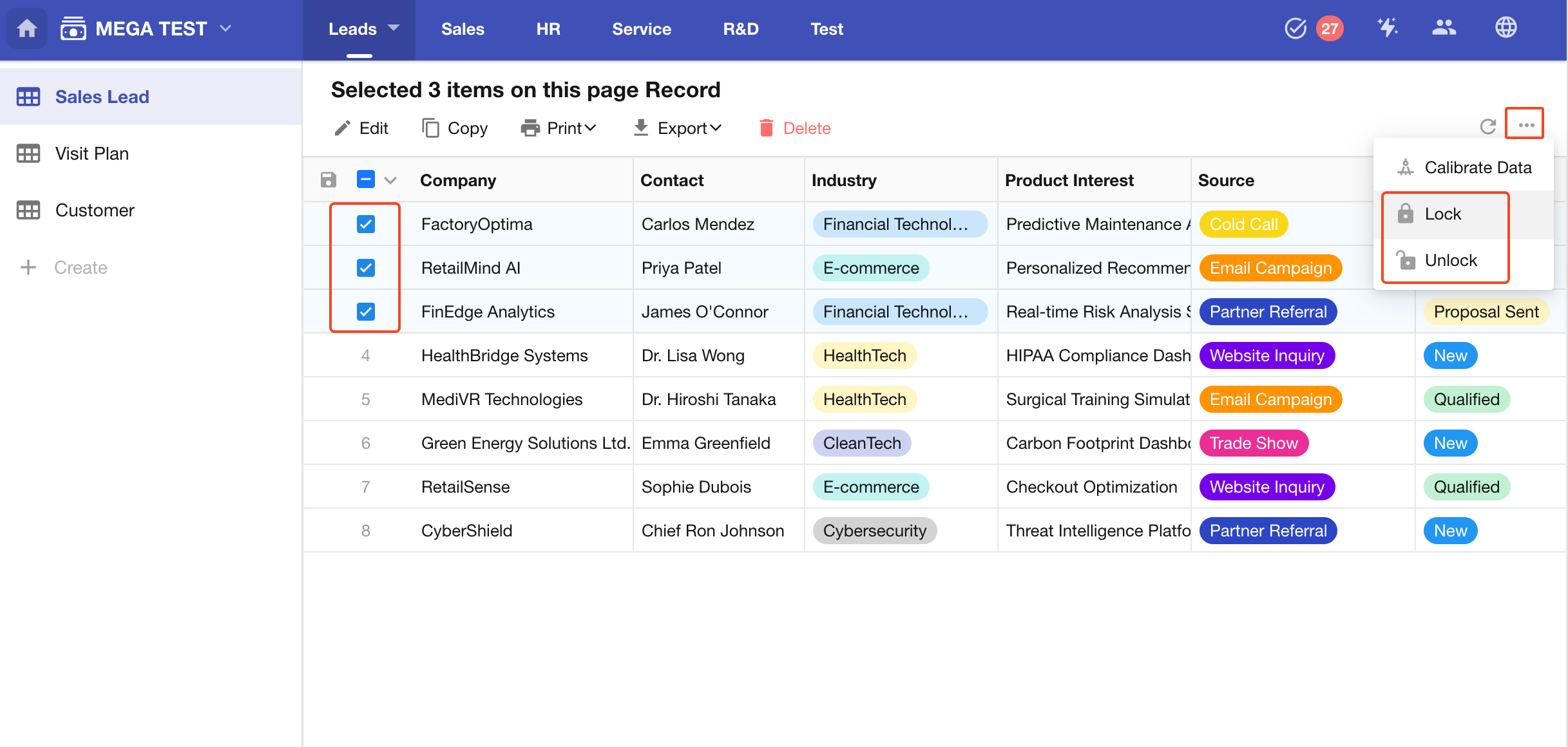 |
Lock Records via Business Rules
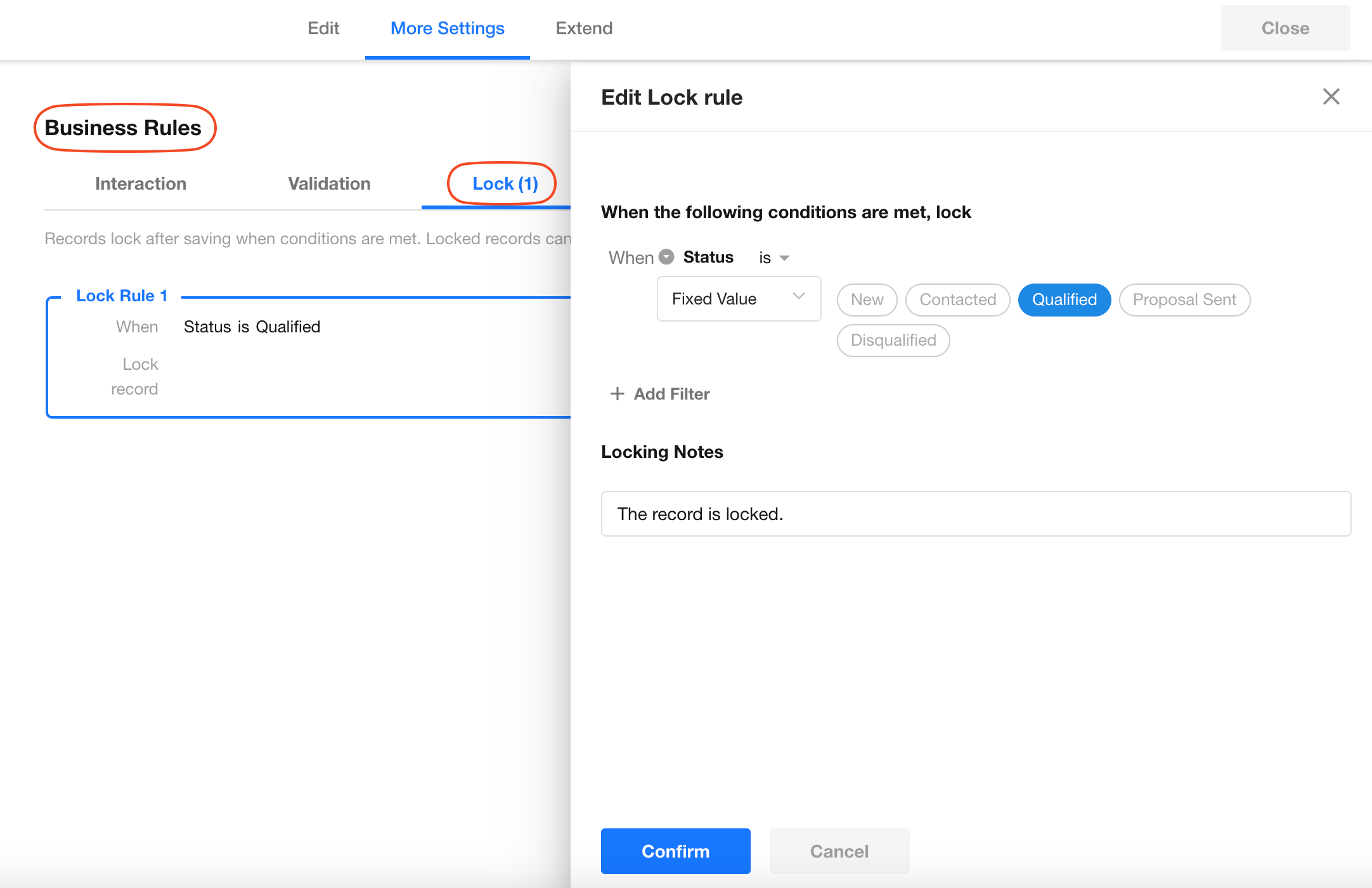
You can configure business rules to automatically lock records based on field values. Details include:
- Each worksheet can have only one locking rule
- Only the following field types can be used as filter criteria:
- Single-select, Multi-select, and Check items fields
- Condition groups are not supported
- A lock description can be defined and will appear next to the lock icon and in the lock prompt
- The lock takes effect after the record is saved
- Lock rules are evaluated only when relevant field values change:
- Historical records are not retroactively evaluated
- Any updates follow the business rule at the time of the change
Lock Rule Behaviors:
- Changing filter conditions does not trigger evaluation of historical records
- Disabling the lock rule does not affect already locked records
- If the rule is re-enabled, only records updated after reactivation will follow the new rule; historical data remains unchanged
Lock/Unlock Actions Logged
All lock and unlock actions will be recorded in the operation logs.
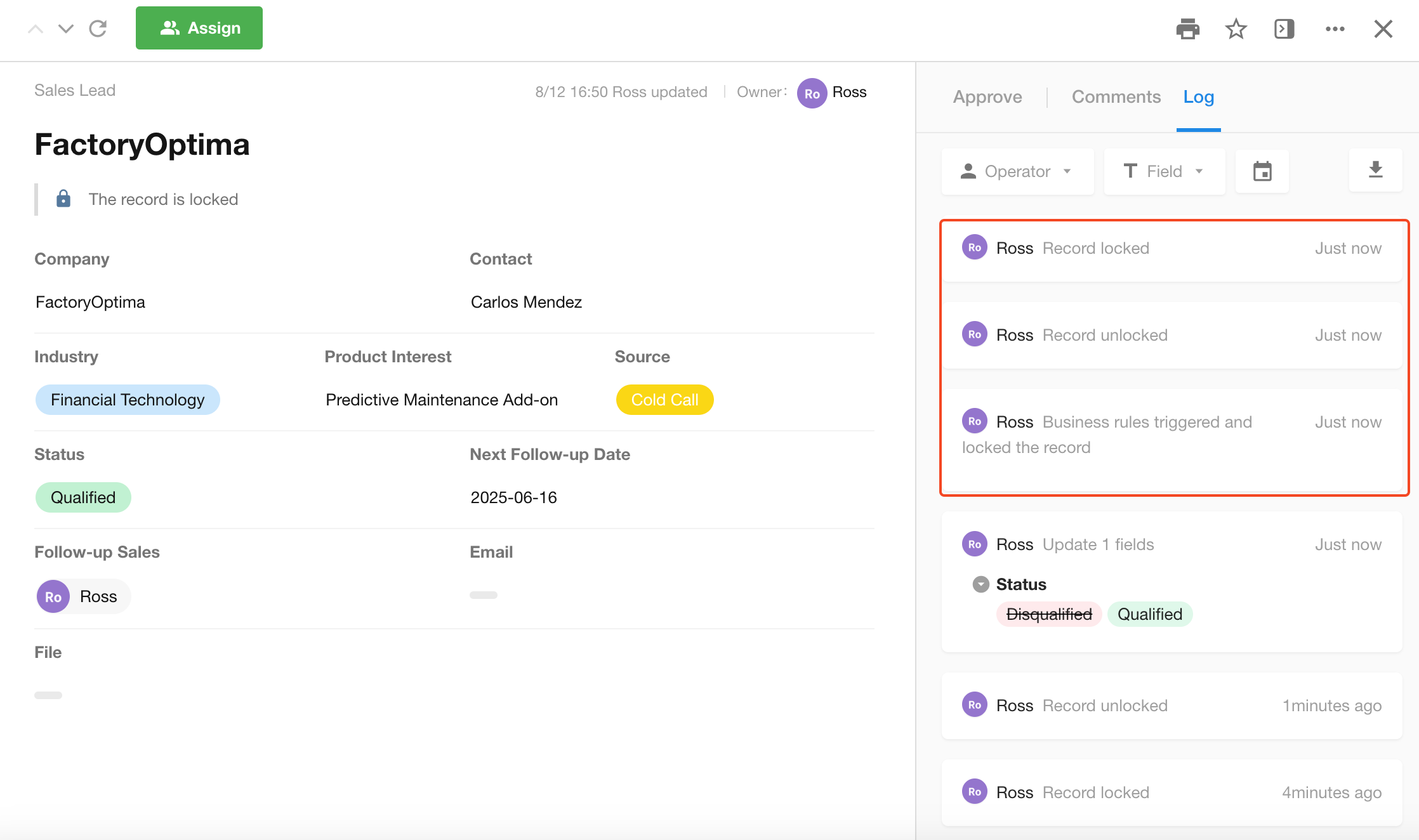
Business Rule: Granular Control for Subforms and Related Records
This update refines edit actions for subforms and related records via business rules.
Business rules now support configuring the following actions for subforms: Add new items, Delete existing items, Edit existing items.
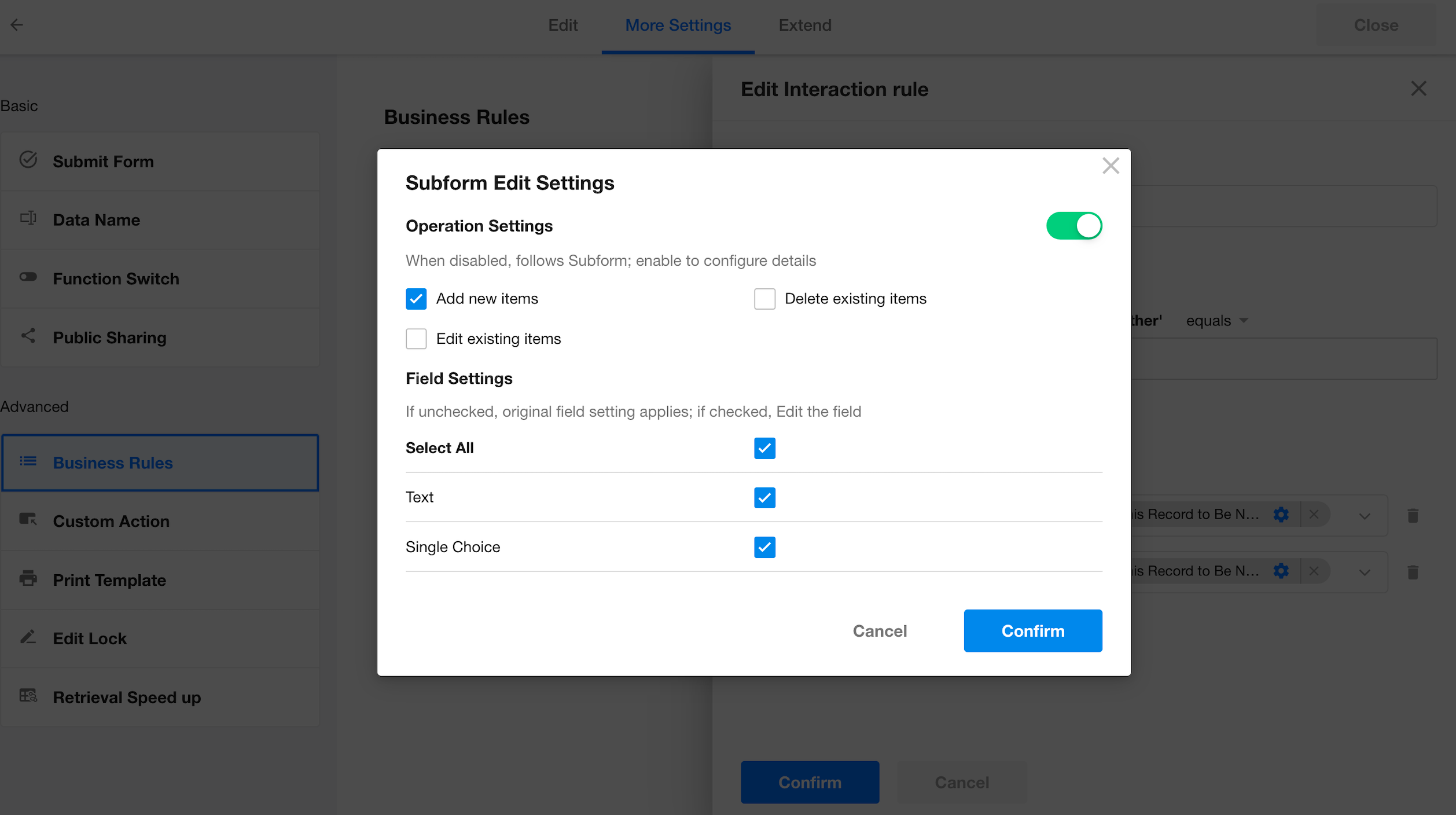
Business rules now support configuring the following actions for related records:
- Selecting existing records
- Unlink records
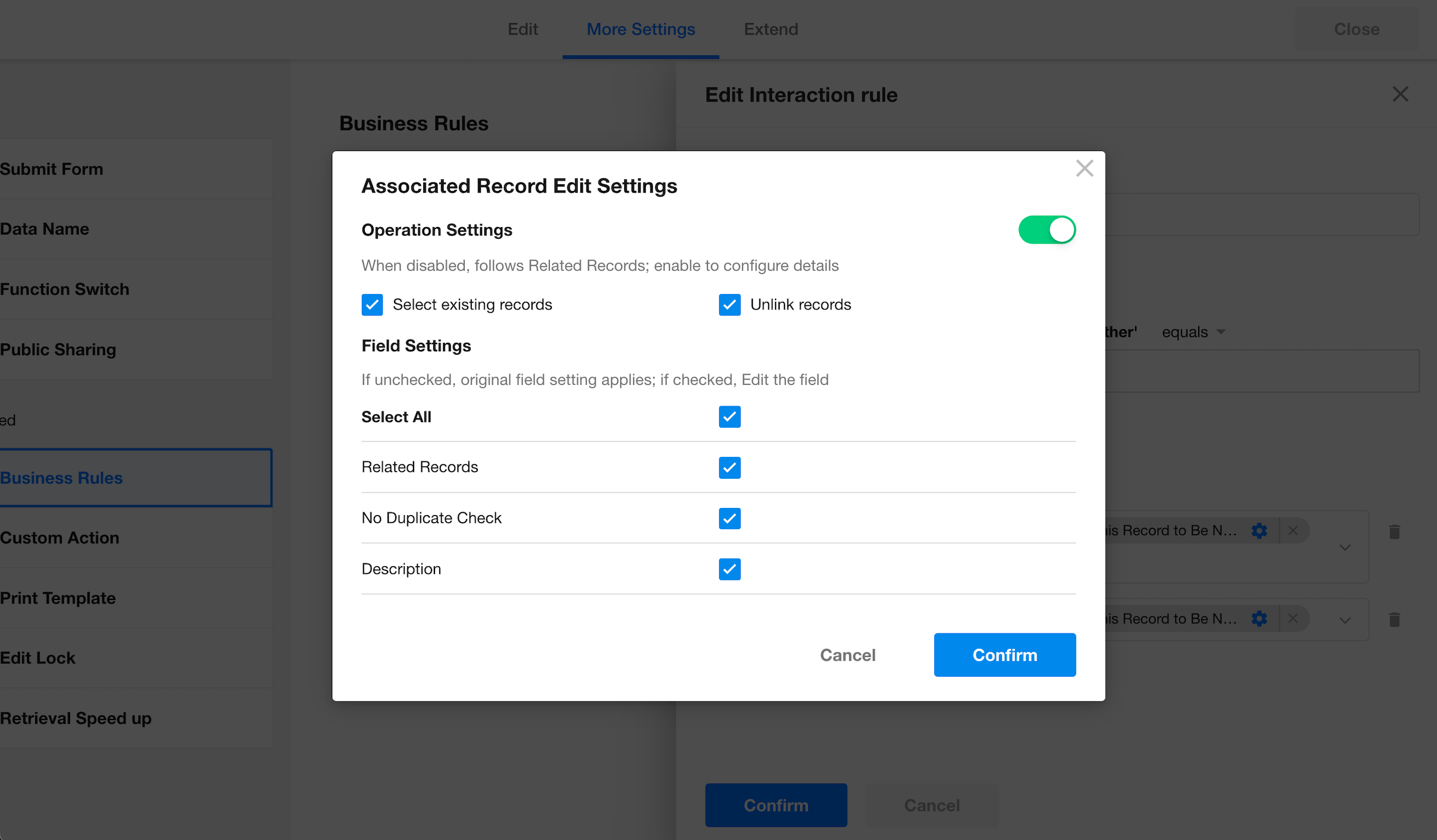
- If operation settings are not enabled in the business rule, the field will follow its original configuration.
- Rules for “Add new items” in Subforms
- When the “Add new items” option is enabled in business rules for subforms:
- No add method set in the original subform field
Users can add single-line record in the subform.
-
- Add method already set in the original subform field
The behavior will follow the original field configuration.
- When the “Add new items” option is not enabled in business rules for subforms:
- Adding records is fully disabled, including adding single-line record, copying records, adding through related record selection, or importing and adding records
3. If both business rules and workflows have operation settings enabled for a subform, the following priority applies: Business Rule > Workflow > Original Field Configuration
Business Rule – Validation Rule: Submit and Skip Error
When “Submit and skip error” is enabled, records can still be saved even when validation warnings are triggered.
- This setting cannot be used together with the “Re-check when saving to the server” option.
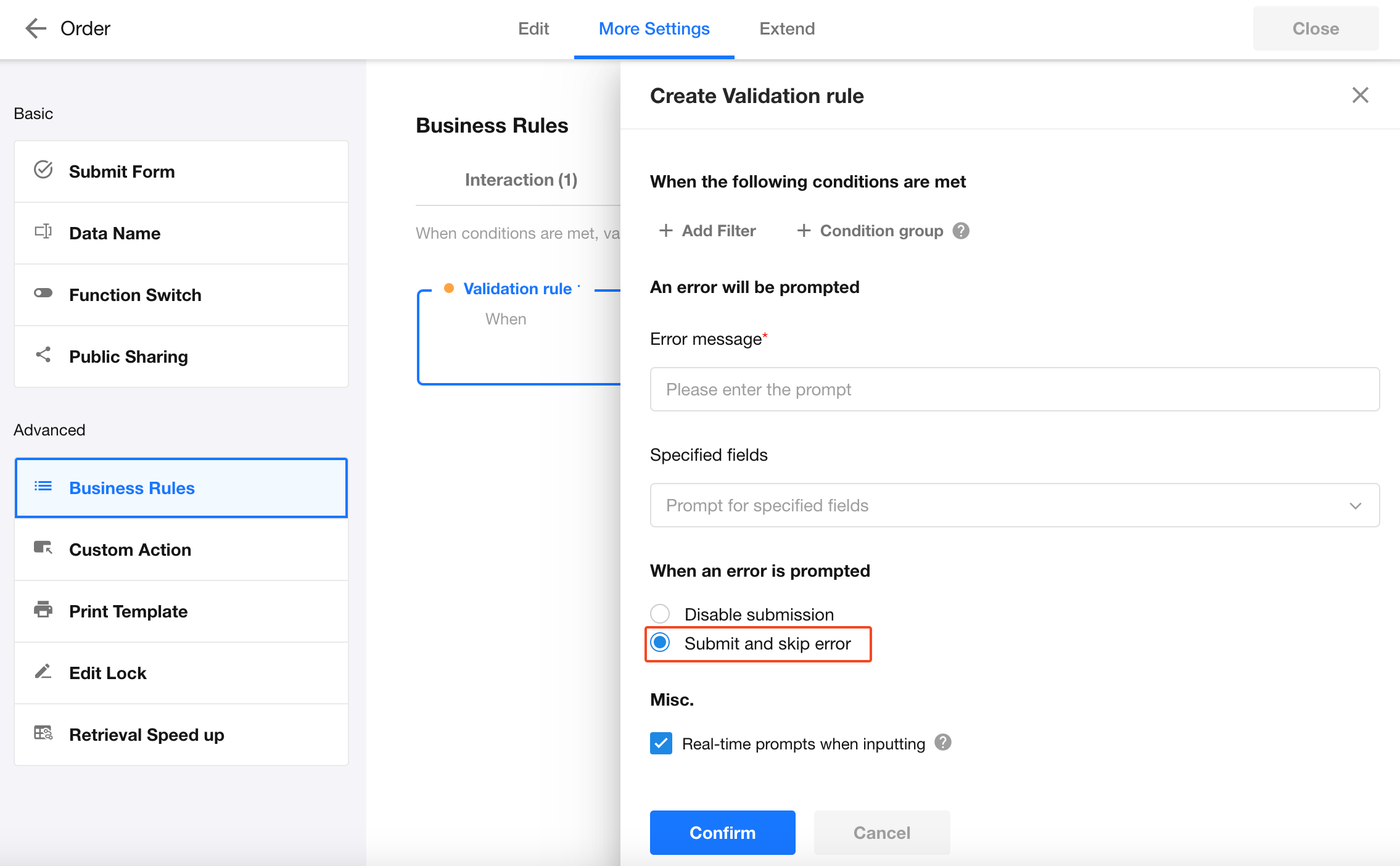
Business Rule – Filter Conditions: Dynamic Value for Members Fields
Members fields (for both External Portal and General) now support a new dynamic value: Current User.
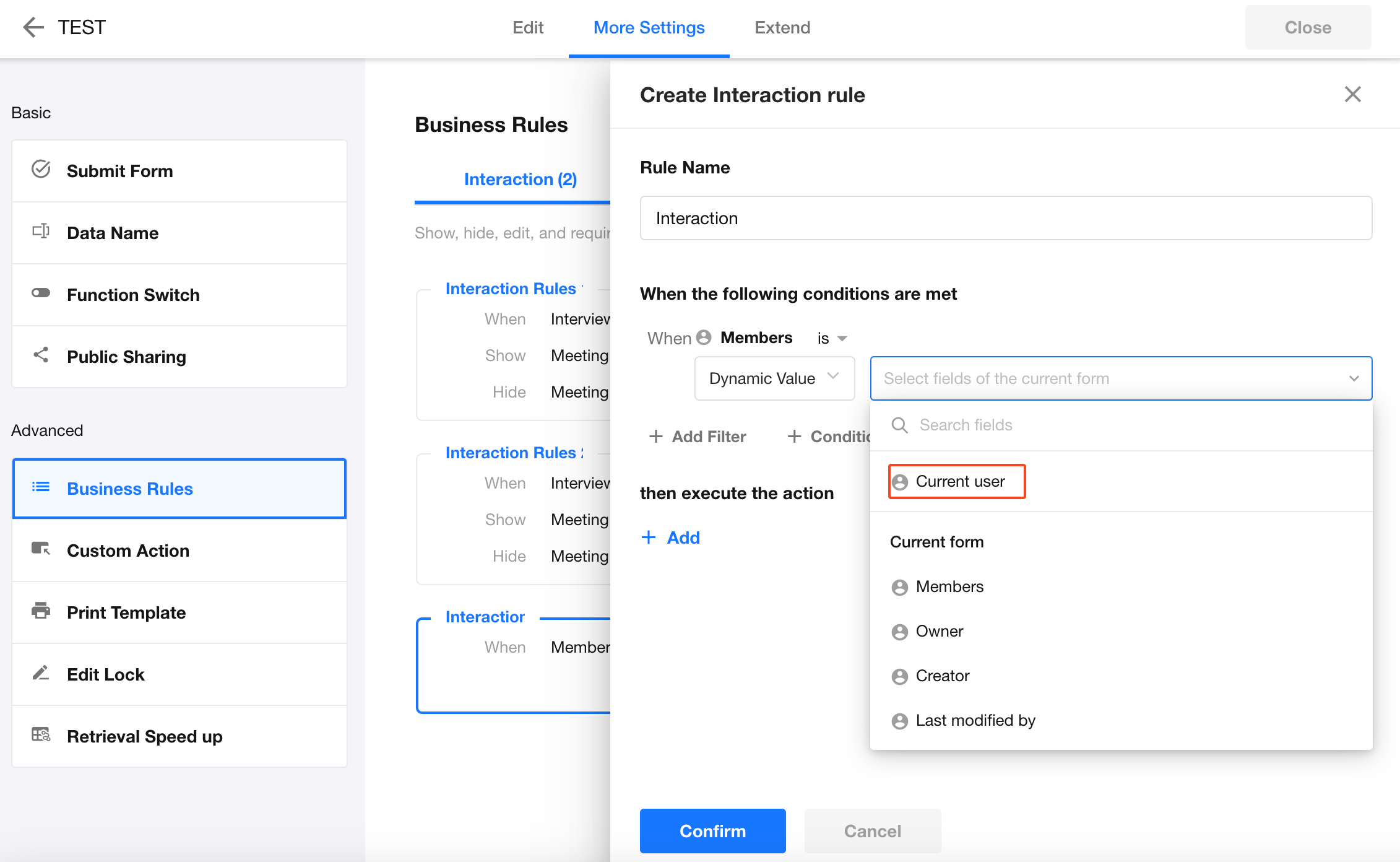
Business Rule – Tab Interactions
New configuration options are available to control tab behavior and field properties within tabs:
- Hide/Read-Only
- When the tab is selected, the tab and all fields within it are affected.
- All fields under the tab will be selected, and selection cannot be deselected.
- Show/Edit
- When the tab is selected, only the tab itself is affected.
- Fields within the tab are not selected.
- Required
- Tabs cannot be selected.
- Show/Hide/Read-Only/Edit/Required
- Allows selecting or deselecting all fields within the tab in one action.
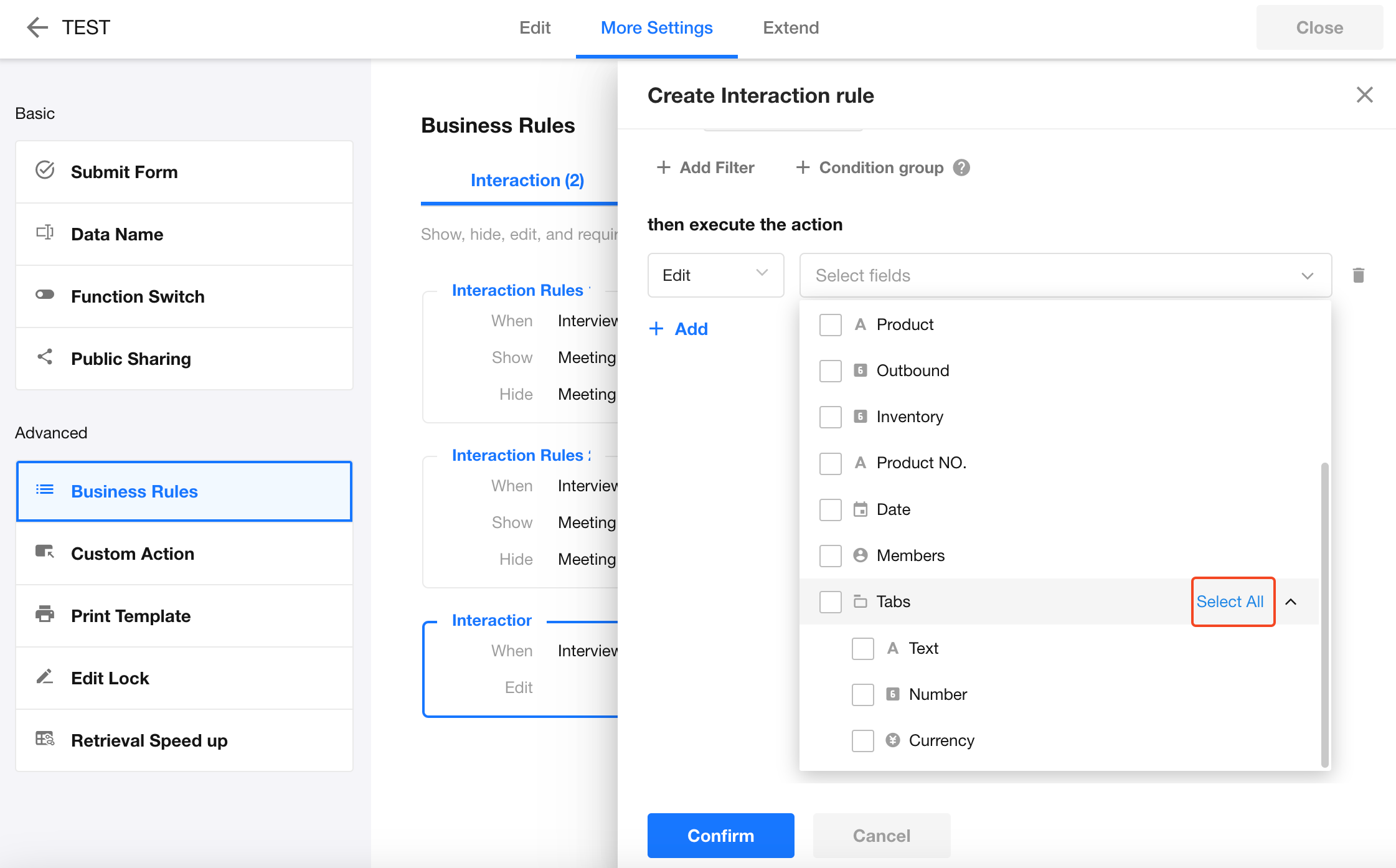 |
System Fields: New “Approved Time” Field
A new system field Approved Time has been added.
This field captures the timestamp when the approval workflow is completed.
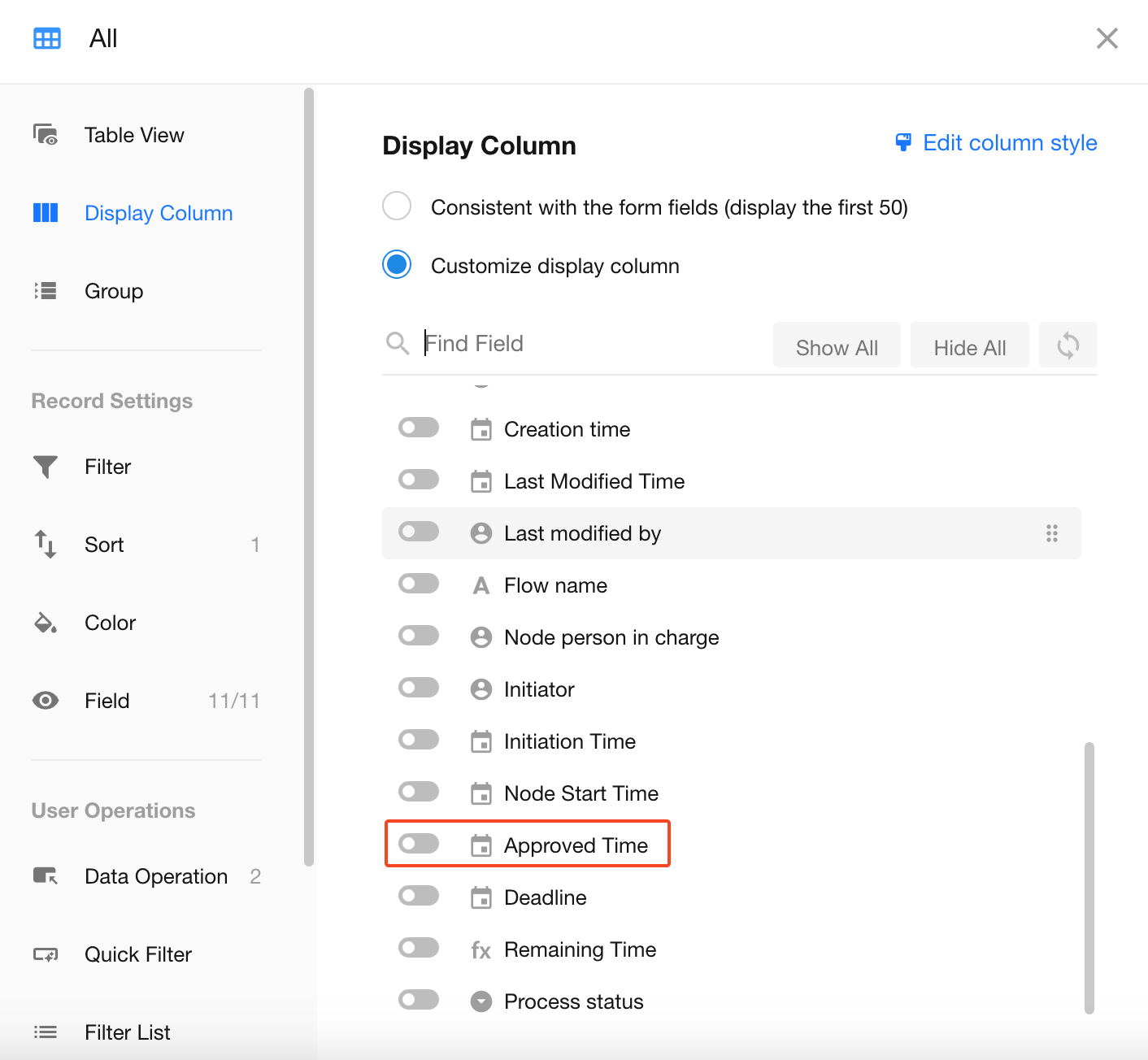
Form Editor Layout Optimization
The form editor has been updated with a more refined layout and interaction model:
- The left field list and right configuration panel are pinned by default on larger screens.
- When screen width is less than 1440px, the interface switches to a slide-out panel mode for better small-screen usability.
| Screen Width | Interaction Behavior |
| ≥1440px | Left and right panels are pinned by default; can be unpinned into slide-out |
| <1440px | Field settings panel slides in from the right when a field is selected; click “Close” to collapse |
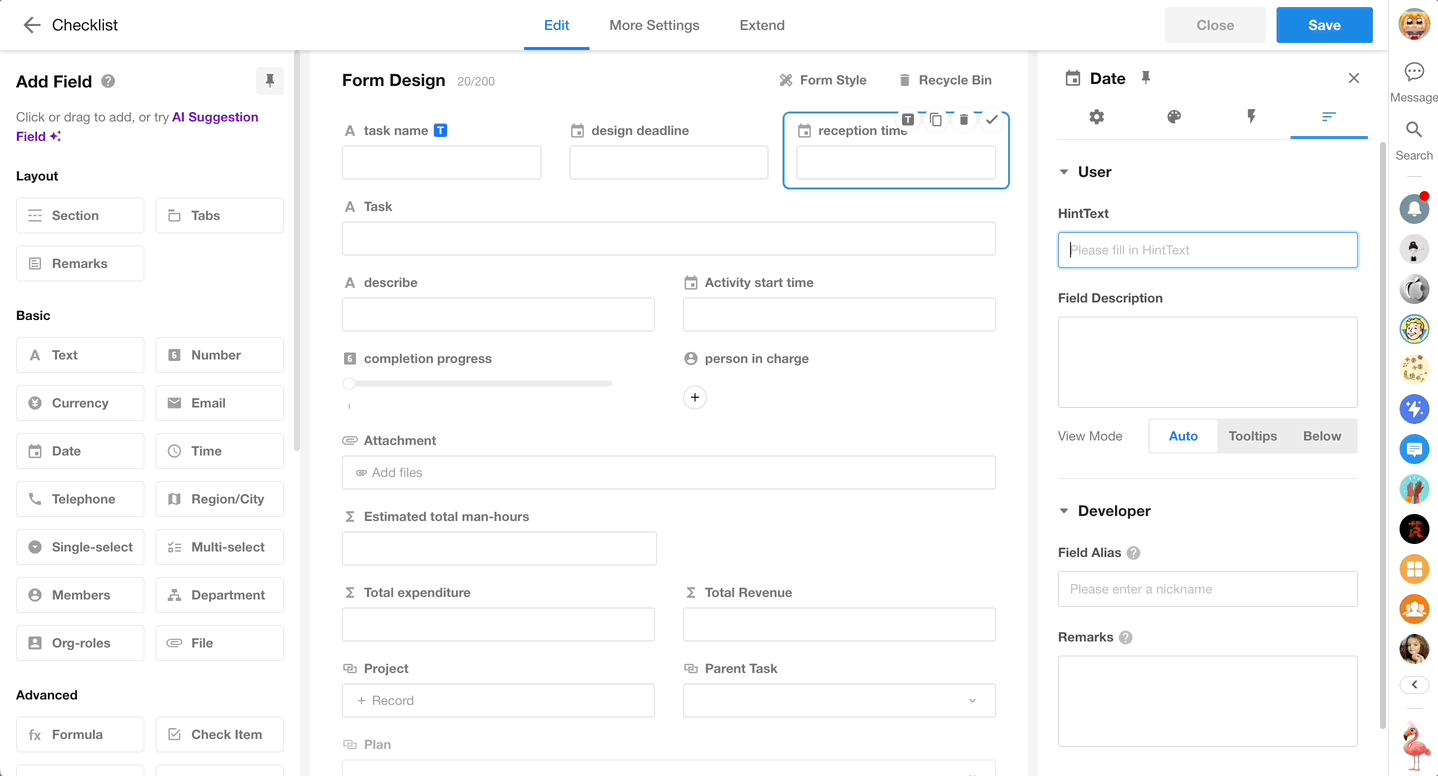
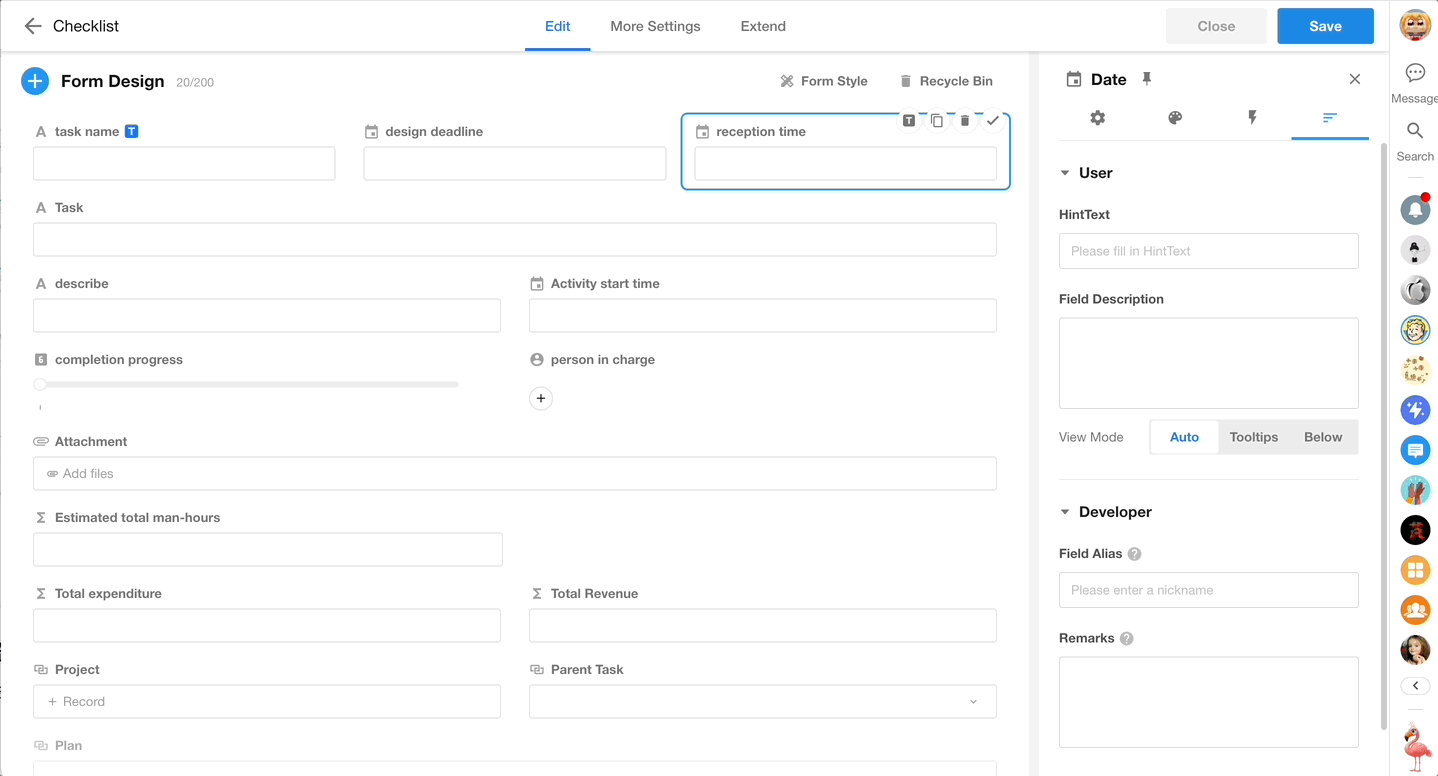
View
Table/Gallery/Kanban Views: Grouped Record Display
You can now group records by specific fields (such as option fields, members fields, or level fields) in Table, Gallery, and Kanban views to enhance structured data presentation.
Supported Grouping Field Types in Table & Gallery Views
| Field Type | Displayed Items | Sorting Options |
| Single-select, Multi-select, Level Fields | All/With Data/Specific Items | Ascending/Descending/Custom |
| Relationship Field (Dropdown/Card) | All/With Data/Specific Items/Filtered Items | Field-Based/Custom |
| Members, Department, Org-Roles Fields (Single & Multi Select) | With Data/Specific Items | Custom |
| Foreign Field (Data Storage) | Inherits Source Field | |
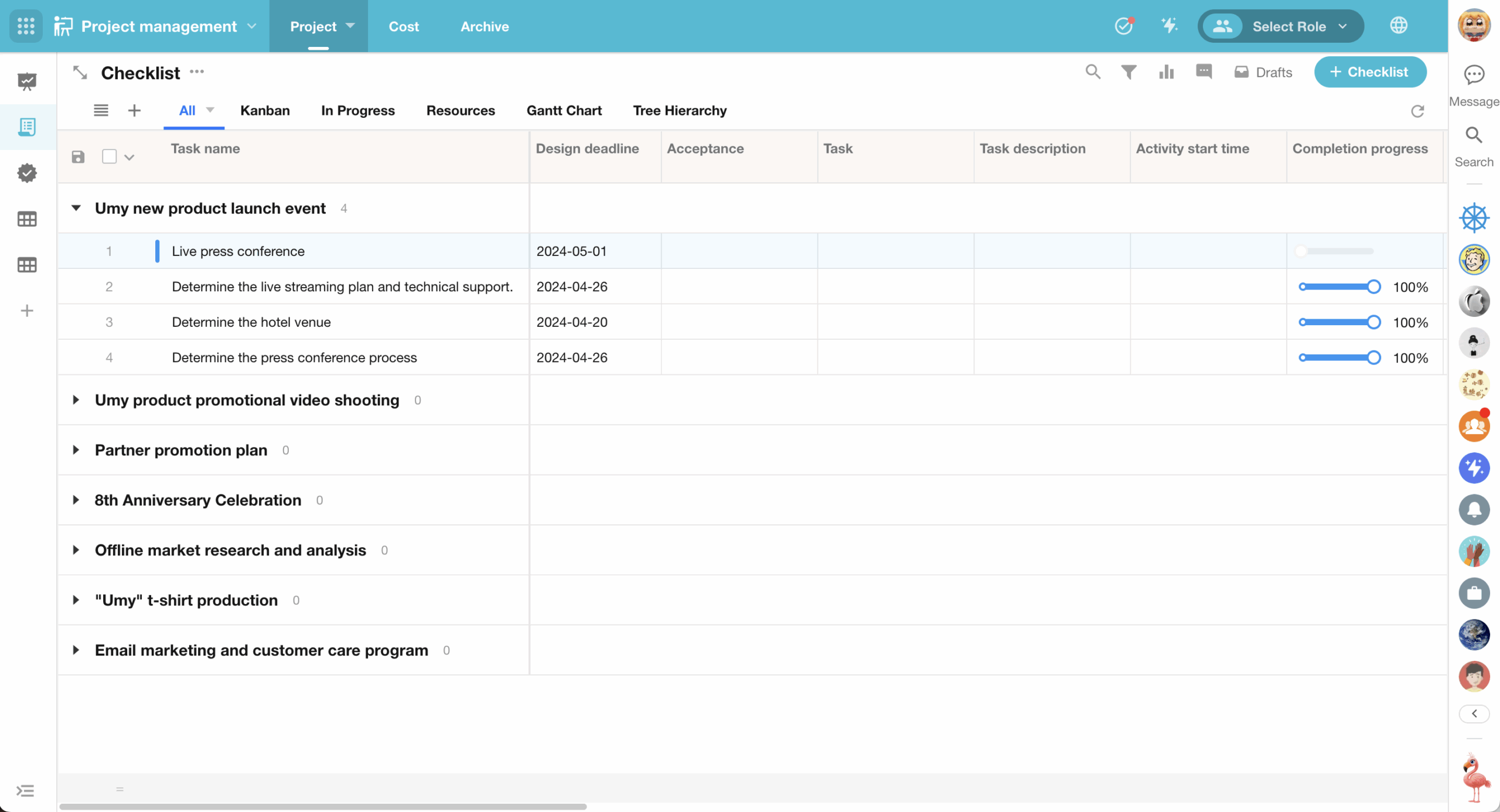
After grouping is configured, records can be moved to other groups.
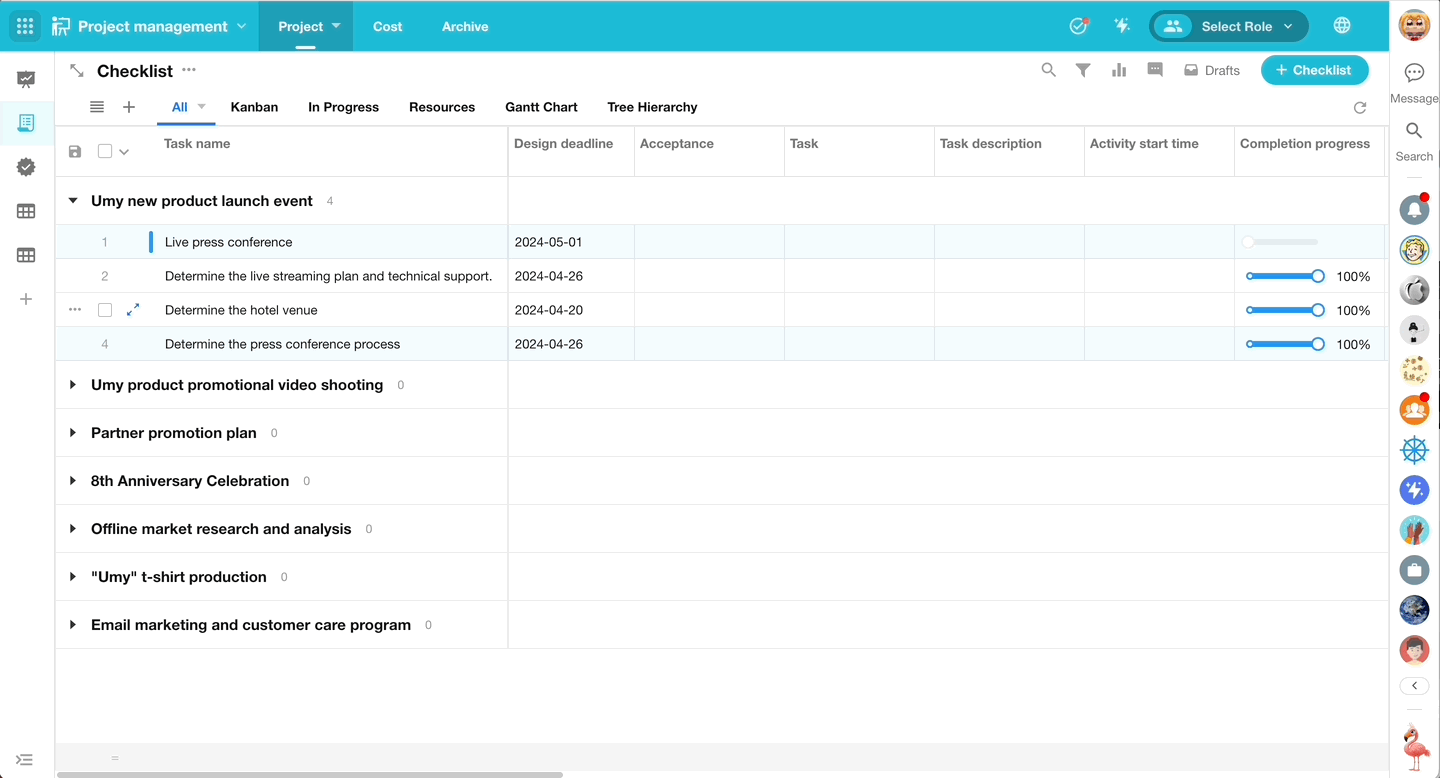
Supported Grouping Field Types in Kanban View
| Field Type | Displayed Items | Sorting Options |
| Single-select, Level Fields | All/With Data/Specific Items | Ascending/Descending/Custom |
| Relationship Field (Single record) | With Data/Specific Items | Custom |
| Members, Department, Org-Roles Field (Single select only) | With Data/Specific Items | Custom |
| Foreign Field (Data Storage) | Inherits Source Field | |
Group & Record Limits
| View Type | Record Limit | Group Limit |
| Table/Gallery | No special limit | 50 groups |
| Kanban | 1,000 records | No special limit |
Special Logic in Kanban View
- Switching Between Single and Multi Select Field Types:
- If a field is changed from multi select to single select, and a record contains multiple options:
- The record will appear only in the first valid option’s group
- It will not appear in other groups
- If a field is changed from single select to multi select:
- The existing grouping becomes invalid
- A new grouping field must be configured
- If a field is changed from multi select to single select, and a record contains multiple options:
Additional Notes
- Records with empty values are automatically placed in the “Not specified” section (you can configure whether to display it)
- Supports configuring the default group expansion state, which is preserved after refresh:
- Expand first group / Expand all groups / Collapse all groups
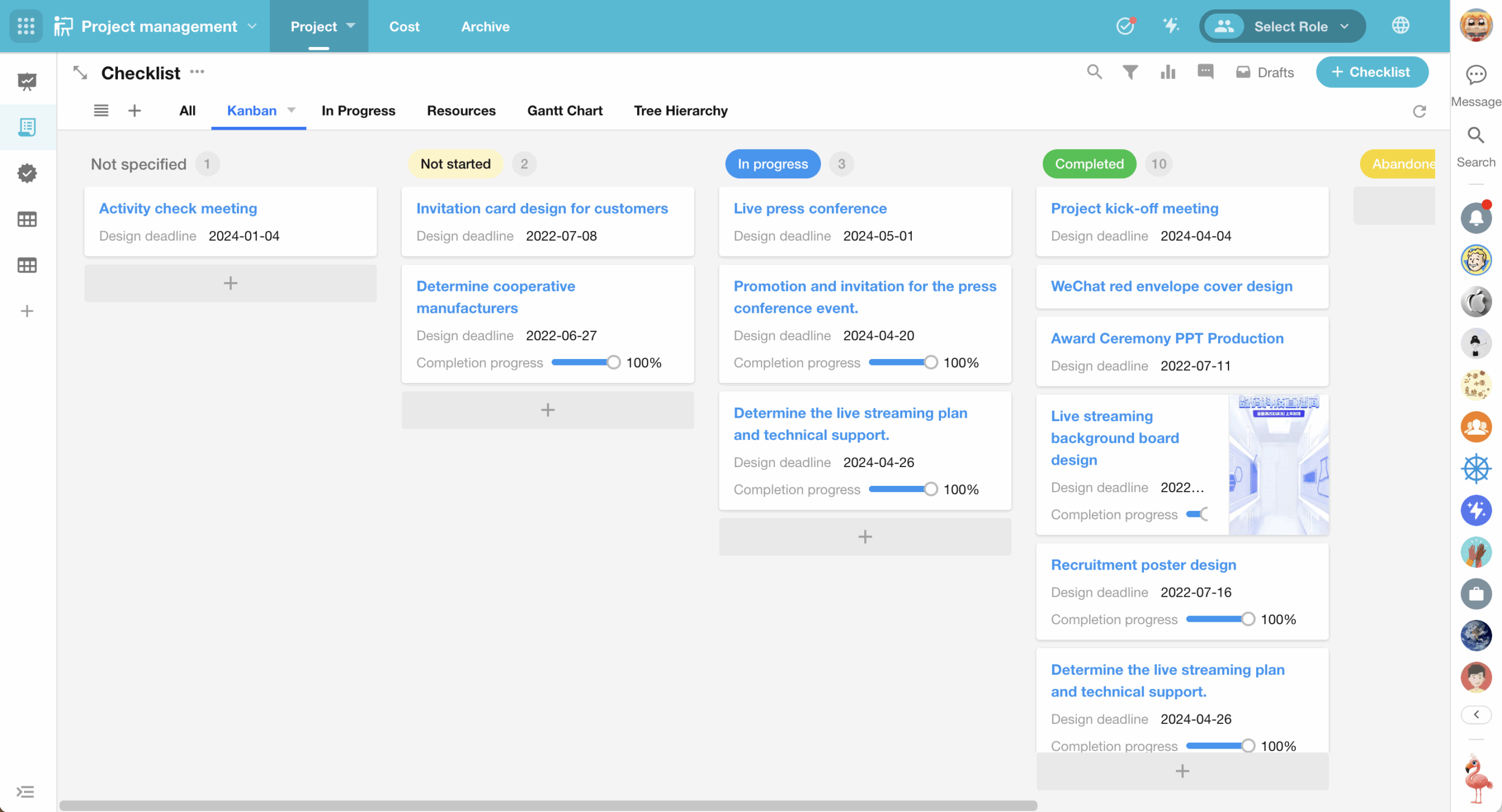
Filter List Enhancements
This update brings expanded functionality to the filter list in views, enhancing the flexibility and usability of data filtering. Users can now filter by region/city fields, benefit from improved department field hierarchy display, and configure default expansion levels for cascading and relationship fields.
Region/City Field as Filter
When a region/city field is selected as a filter, the system now supports hierarchical filtering by province, city, and county, allowing for more granular geographic data analysis.
- Hierarchy Display: Based on field configuration, up to three levels (province/city/county) are shown. For example, if the field is configured only to the city level, only two levels will be displayed.
- Filter Modes:
- Belong to (default): Includes records under the selected region and all its subregions (e.g., selecting “Guangdong Province” includes all its cities/counties).
- Is: Only matches records that exactly match the selected region (e.g., selecting “Guangzhou City” returns only records from that city).
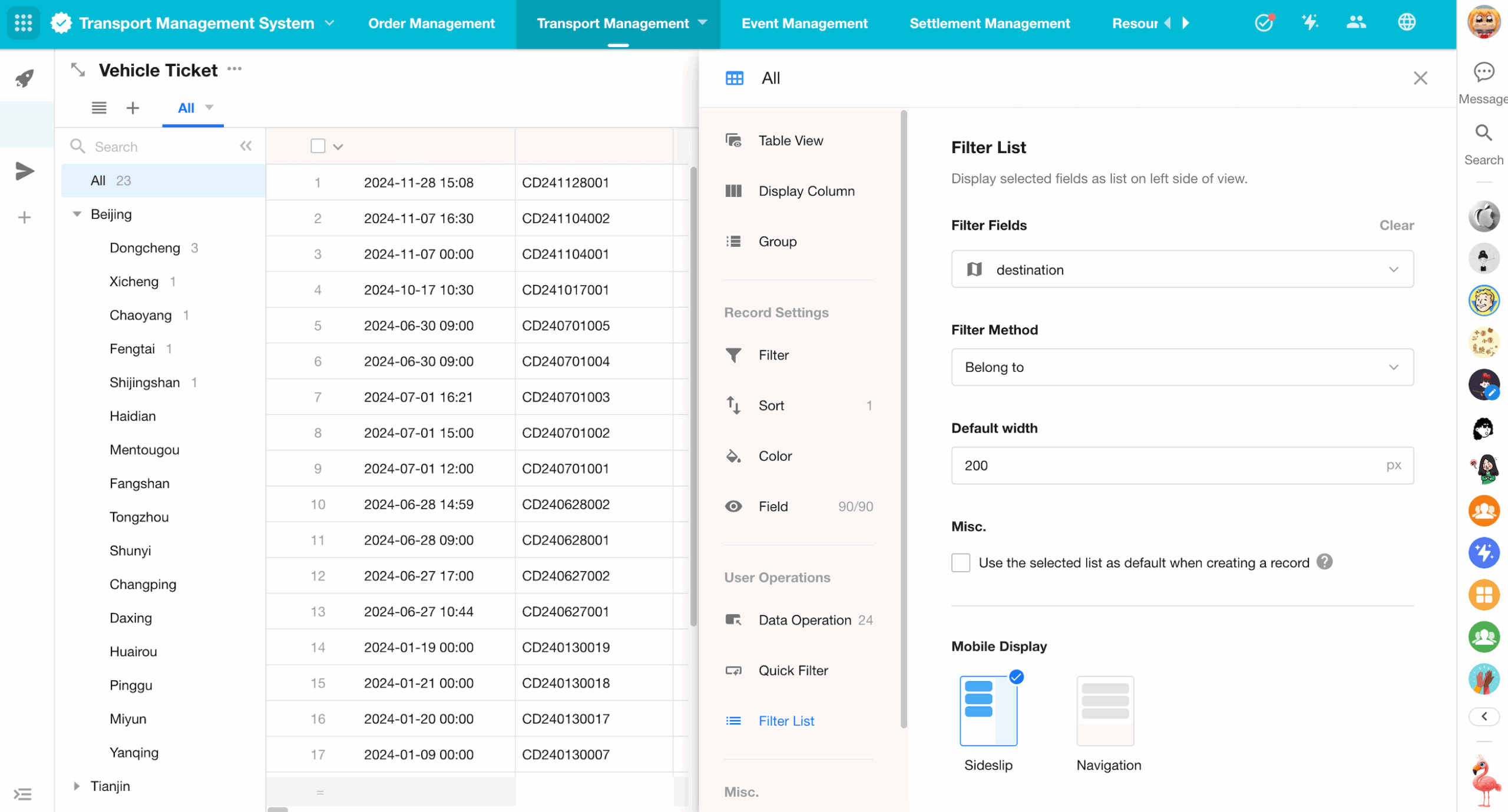
Department Field as Filter
When the department field is used as a filter, users can now view the full organizational hierarchy, making it easier to locate records by department level.
- Display Modes:
- Items with data (original logic): Displays departments with data in a flat list, without hierarchy.
- Specified items: Supports displaying specified departments in a hierarchical structure, including sub-departments (configurable).
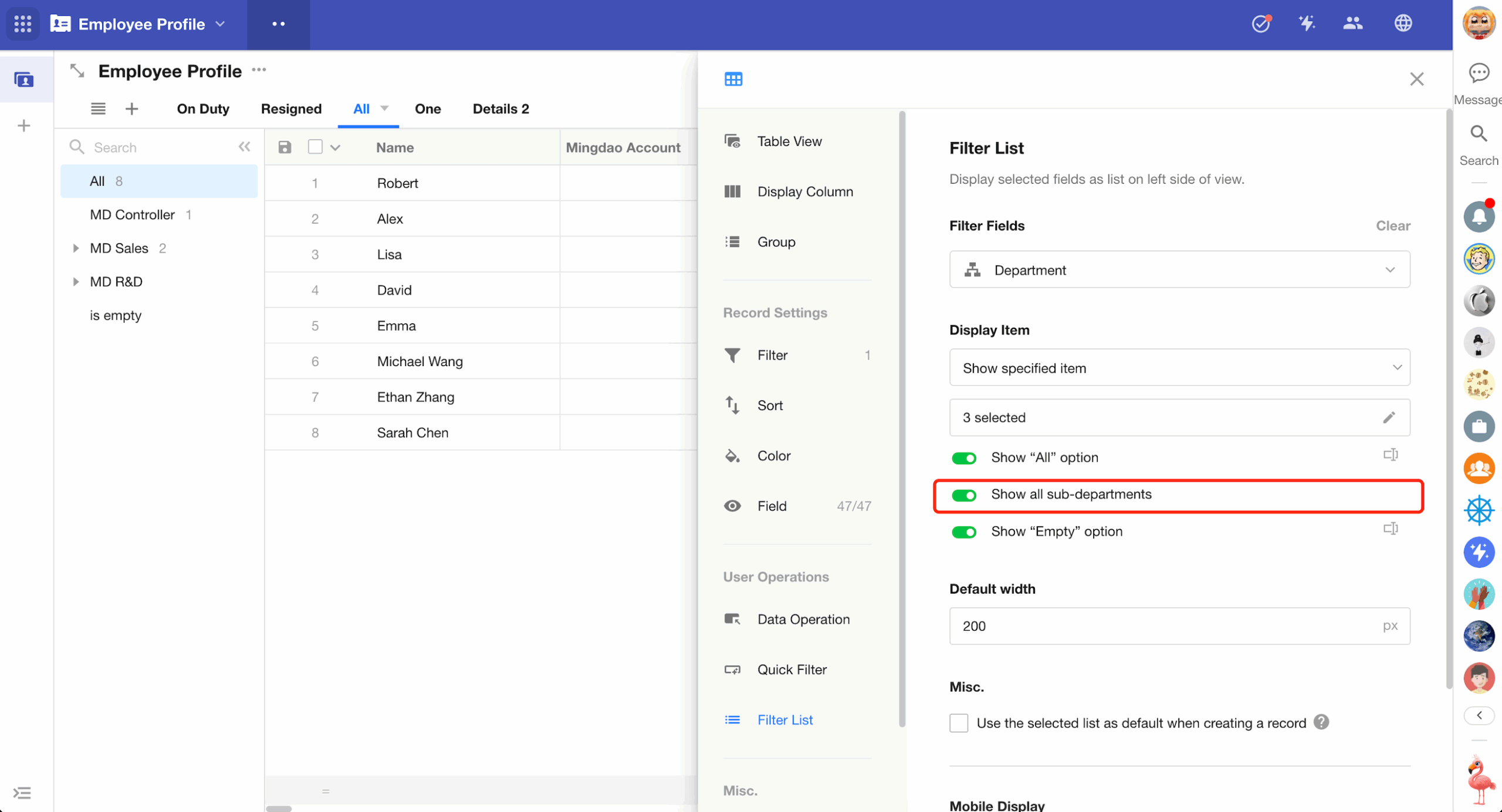
Cascading/Relationship Field as Filter
When using cascading fields or relationship fields (configured with an org view) as filters, you can now define a default expansion level.
- Default Expansion Level: Configurable from Level 1 to Level 5, allowing users to control how much of the hierarchy is expanded by default in the filter panel.
Field
Quick Actions for Members/Department/Org-Roles Fields
When creating or editing a worksheet record, clicking on a members, department, or org-roles field value will trigger a quick action menu. The following operations are supported for selected values: Remove, Replace, Move to, Add to.
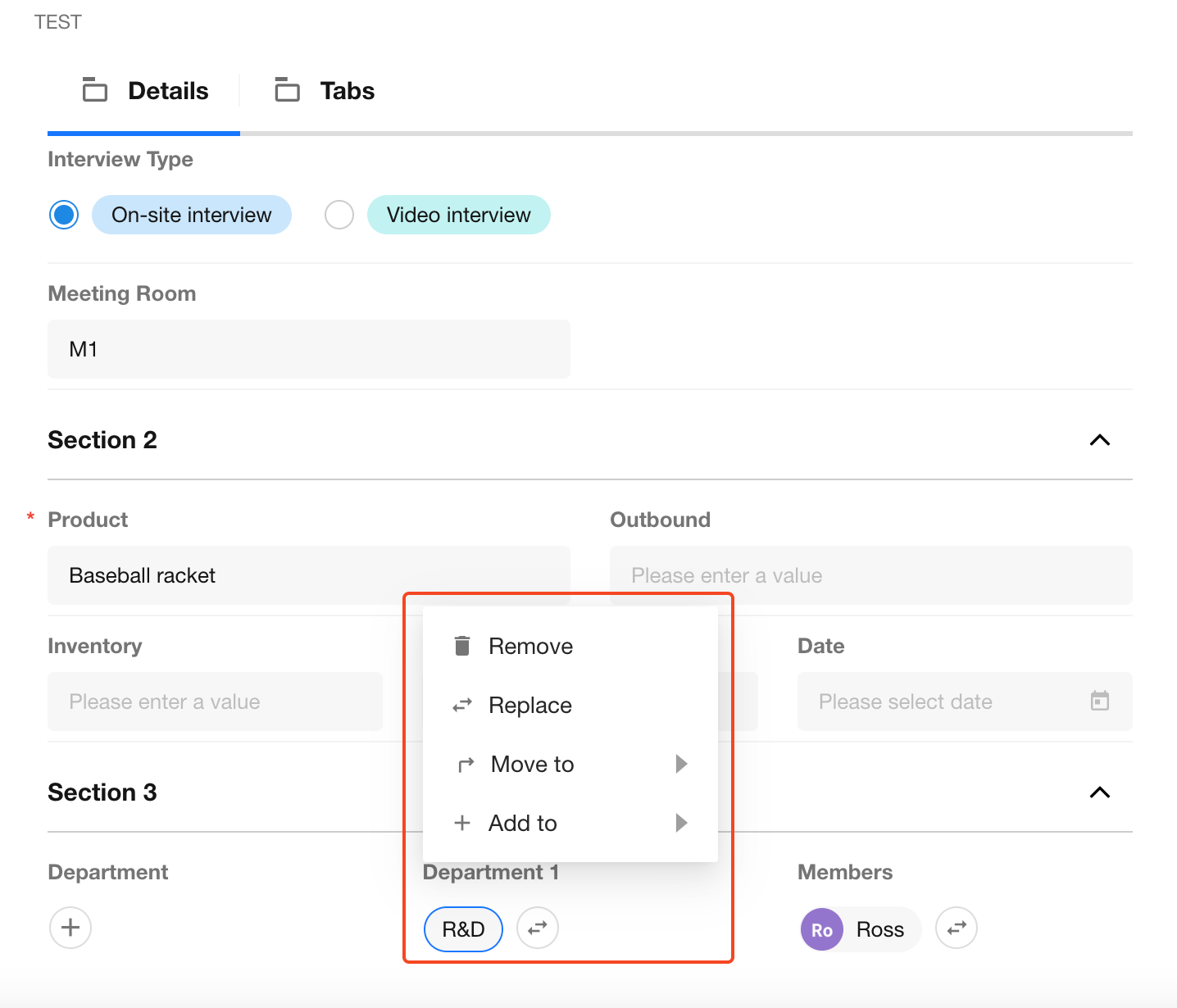
Tab Field: New “Read-Only” Attribute
A new “Read-Only” configuration option is now available for tab fields. When enabled:
- All fields within the tab become read-only.
- Note: If a business rule configures one of the fields inside the tab to be editable, the field will still remain read-only due to the tab’s restriction.
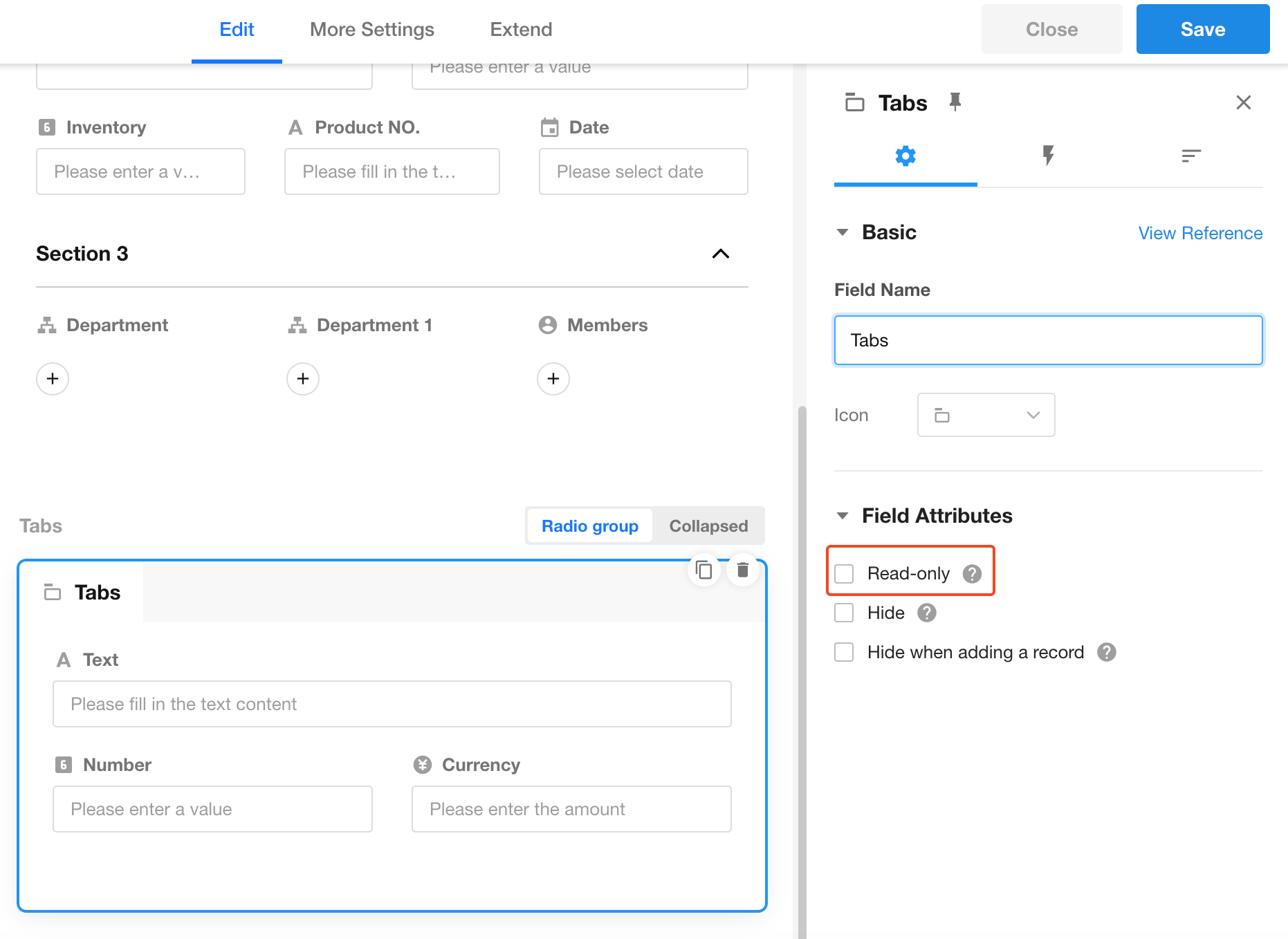 |
Subform Field – “Duplicate entries are not allowed in this record”: Now Supports Single-Select Fields
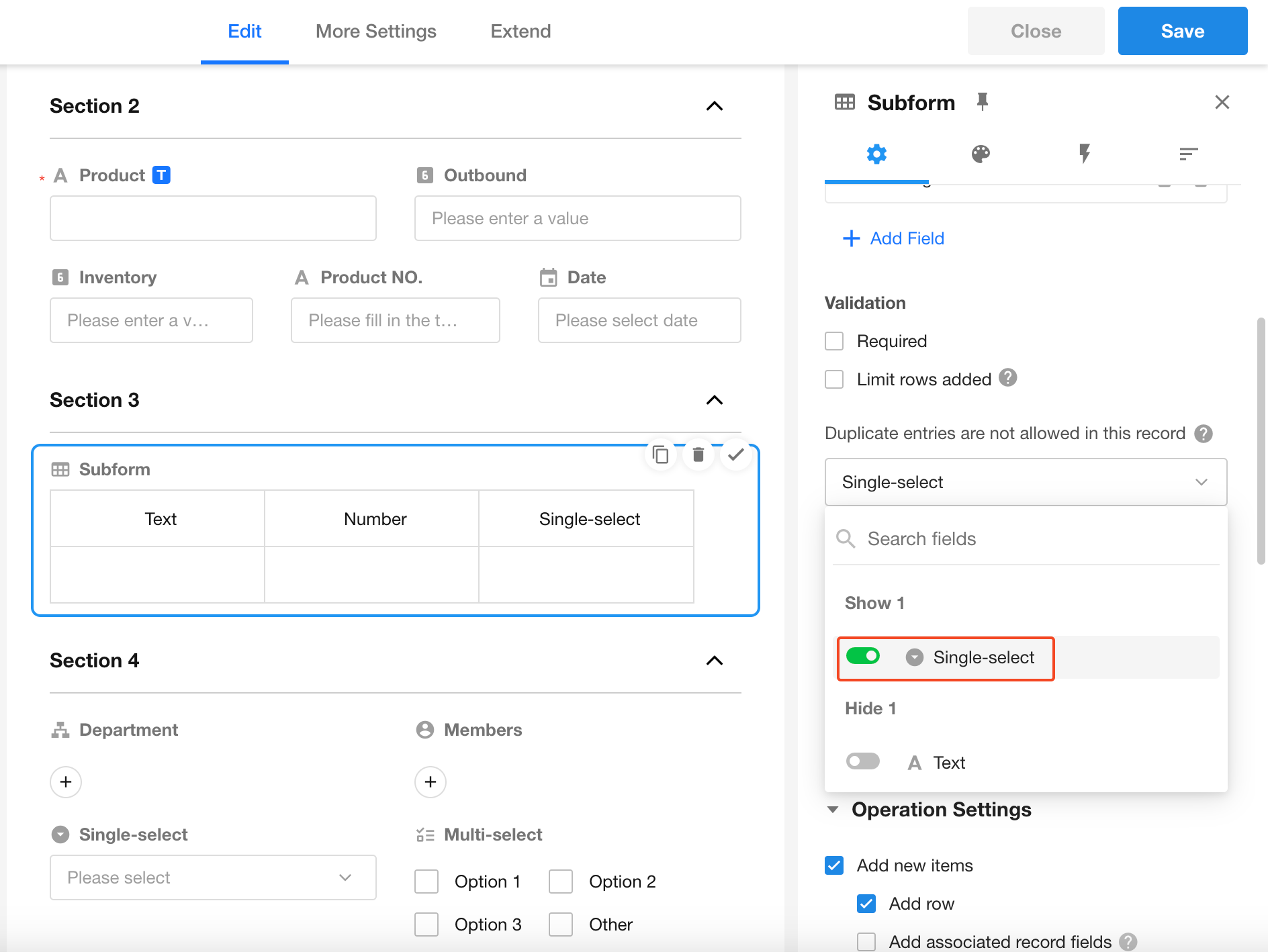
Single-Select/Multi-Select Fields – “Other” Option Can Be Used in Functions
The supplementary input associated with the “Other” option in option fields can now be referenced in functions, enabling more dynamic data processing and logic.
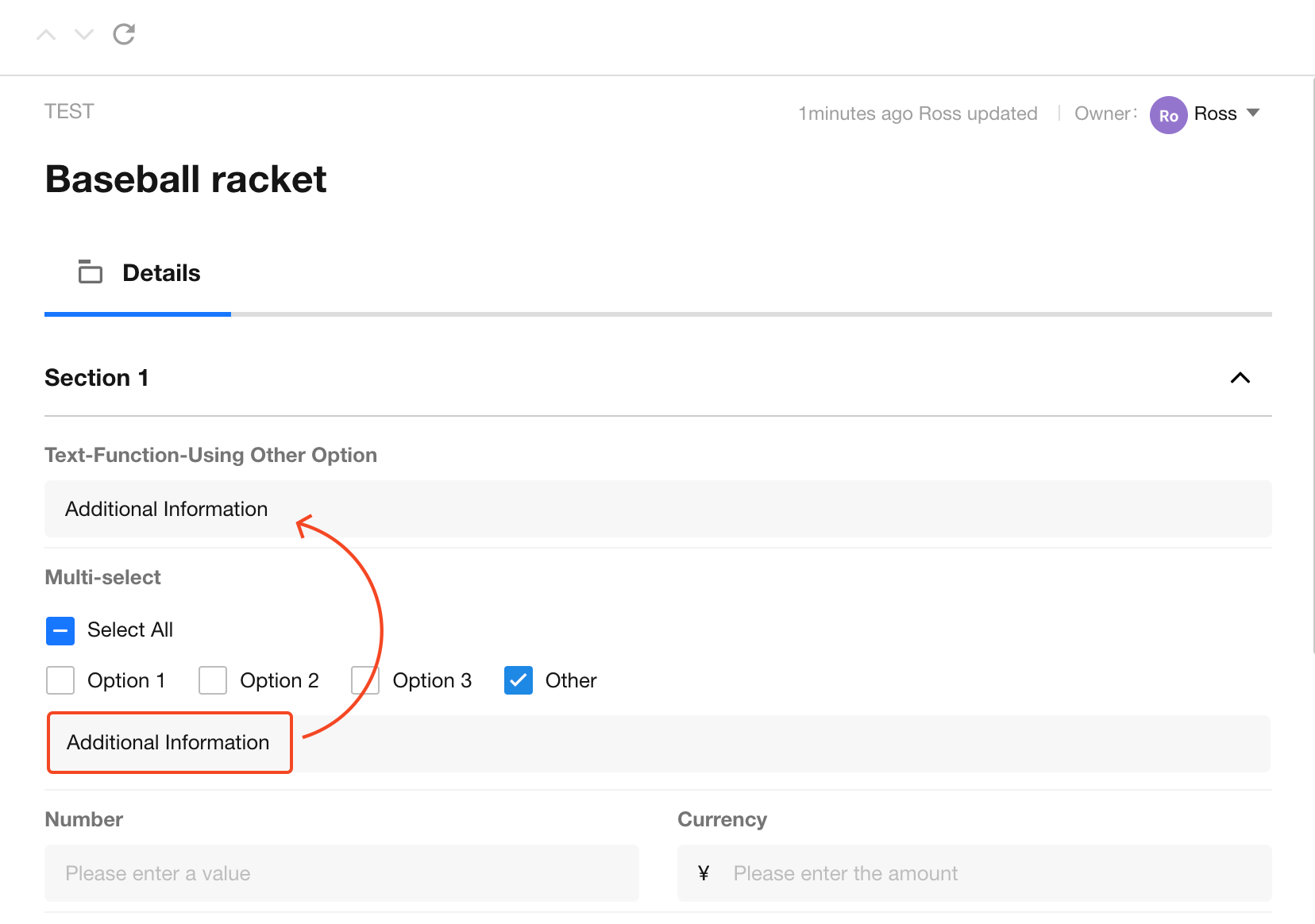 |
Multi-Select Fields: When Selecting “Other”, Regular Options Cannot Be Chosen
A new configuration is available for multi-select fields:
“When selecting “Other”, regular options cannot be chosen”
- When enabled, the “Other” option and regular options become mutually exclusive:
- Selecting “Other” will automatically clear all regular options
- Selecting any regular option(s) will clear the ‘Other’ option
- The “Select All” button only applies to regular options, not to the “Other” option.
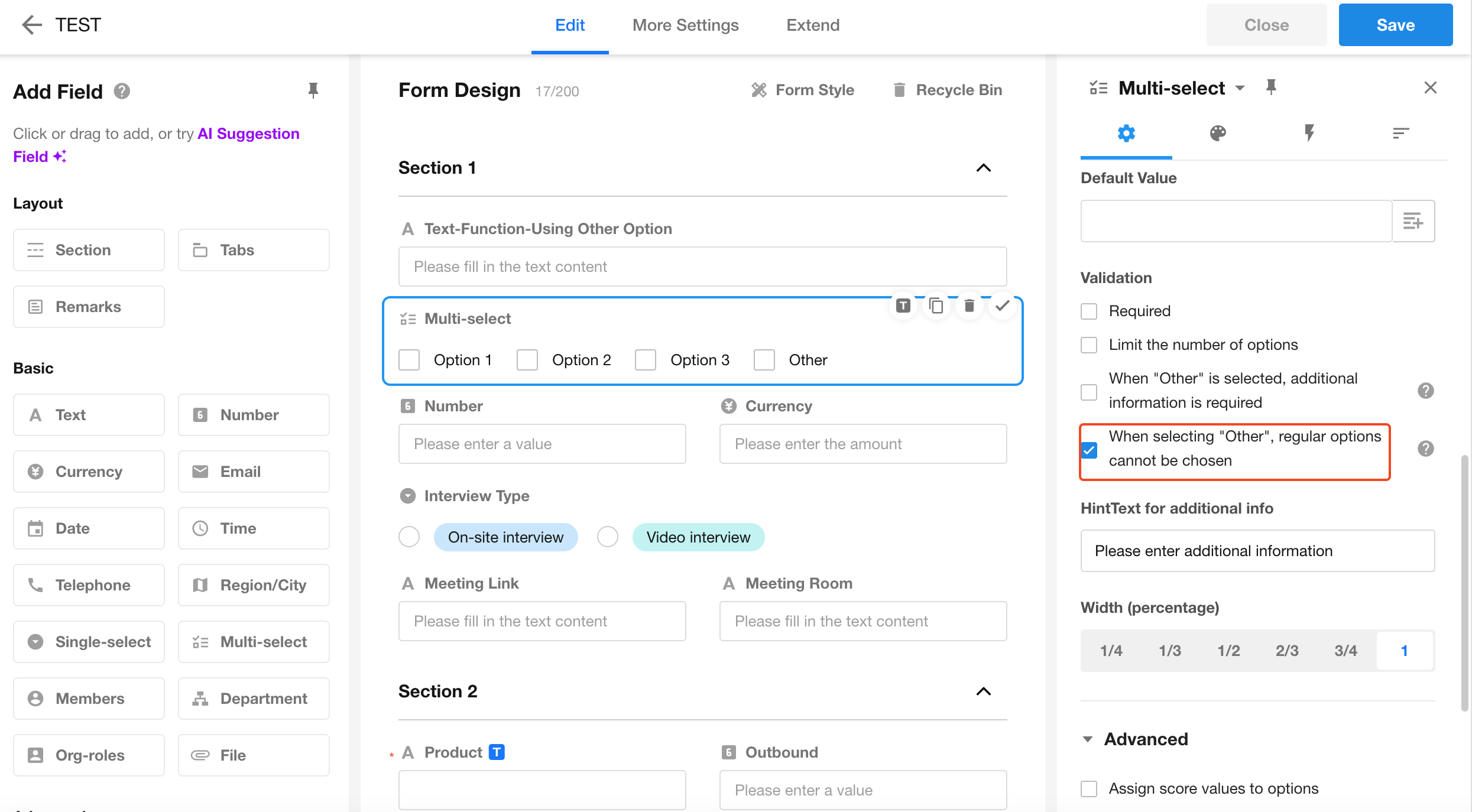
Enhanced Selection Settings for Related Records
- Reuse Quick Filters from Views in Related Record Selection
The related record selection now supports reusing quick filters configured in existing views, reducing redundant configuration effort.
- Access control: Only users with permission to access the target view will be able to see and use the associated quick filters.
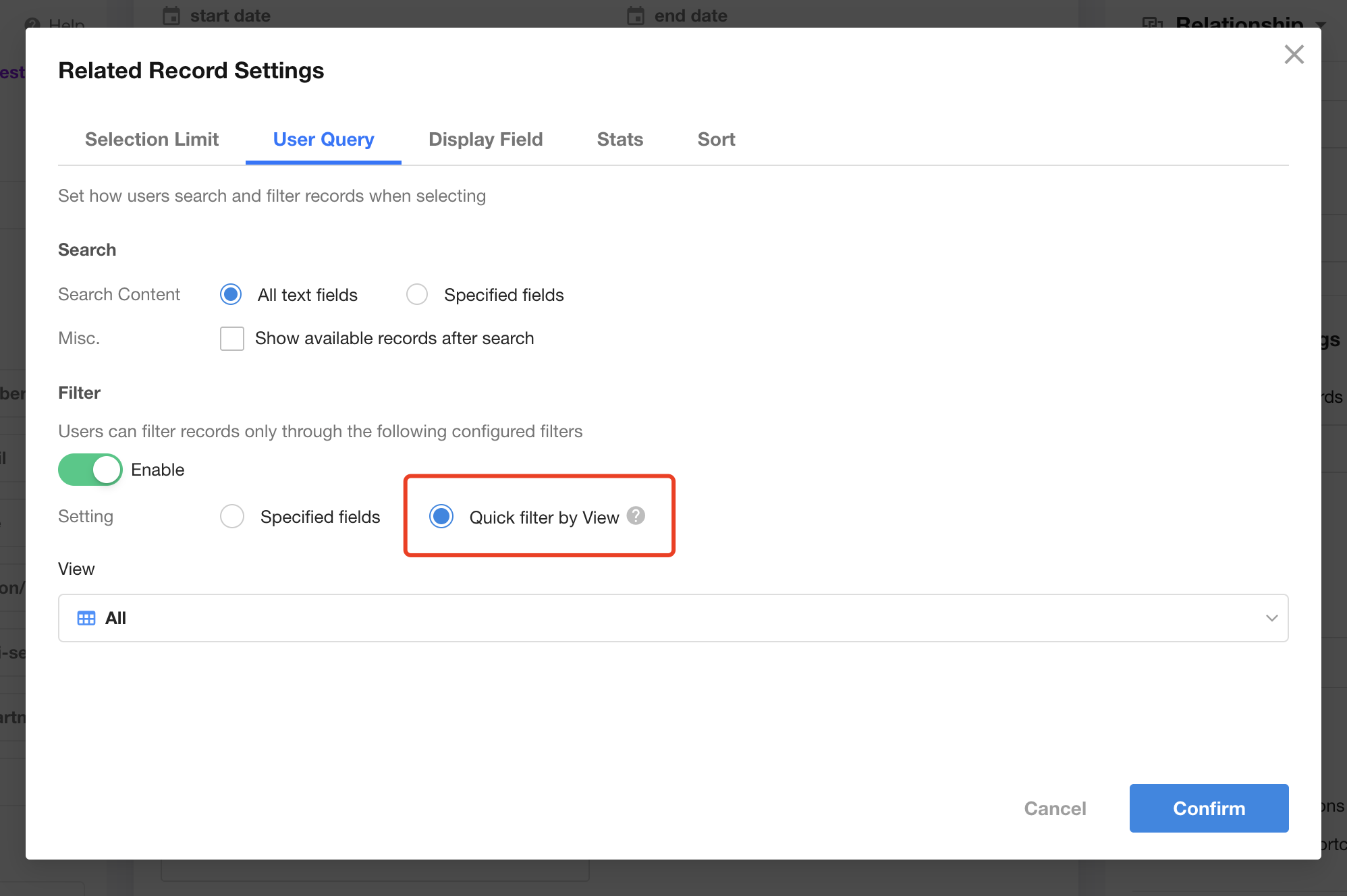
Filters can be displayed in a flat layout and will retain the expanded/collapsed state across sessions.
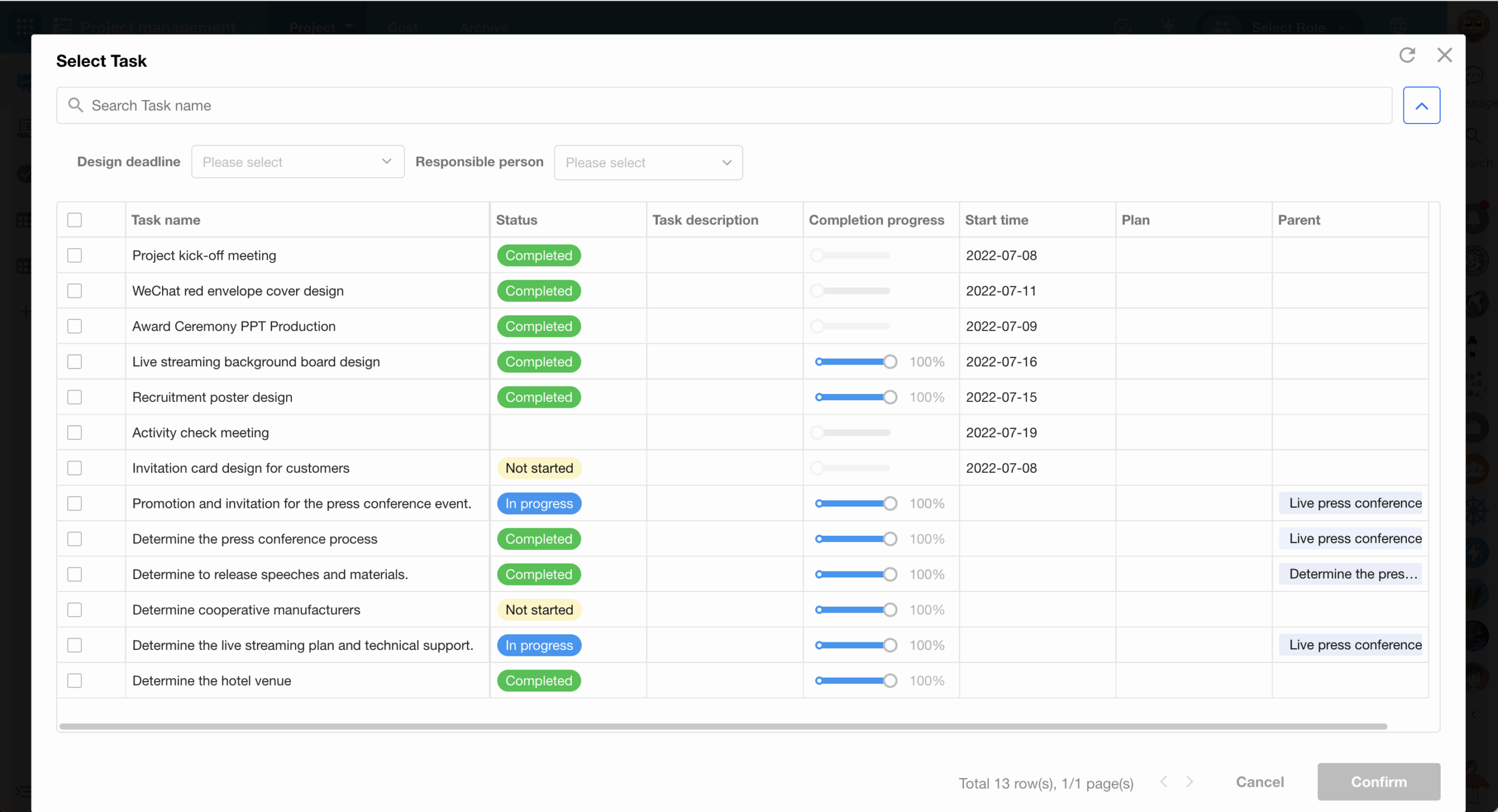
- Customize Record Sorting in the Related Record Selection Popup
Supported: Relstionship field (Table/Tab Table/Card)
Two sorting options are available:
- Inherit sort order from the relationship field settings
- Custom sorting: Add up to five sorting fields
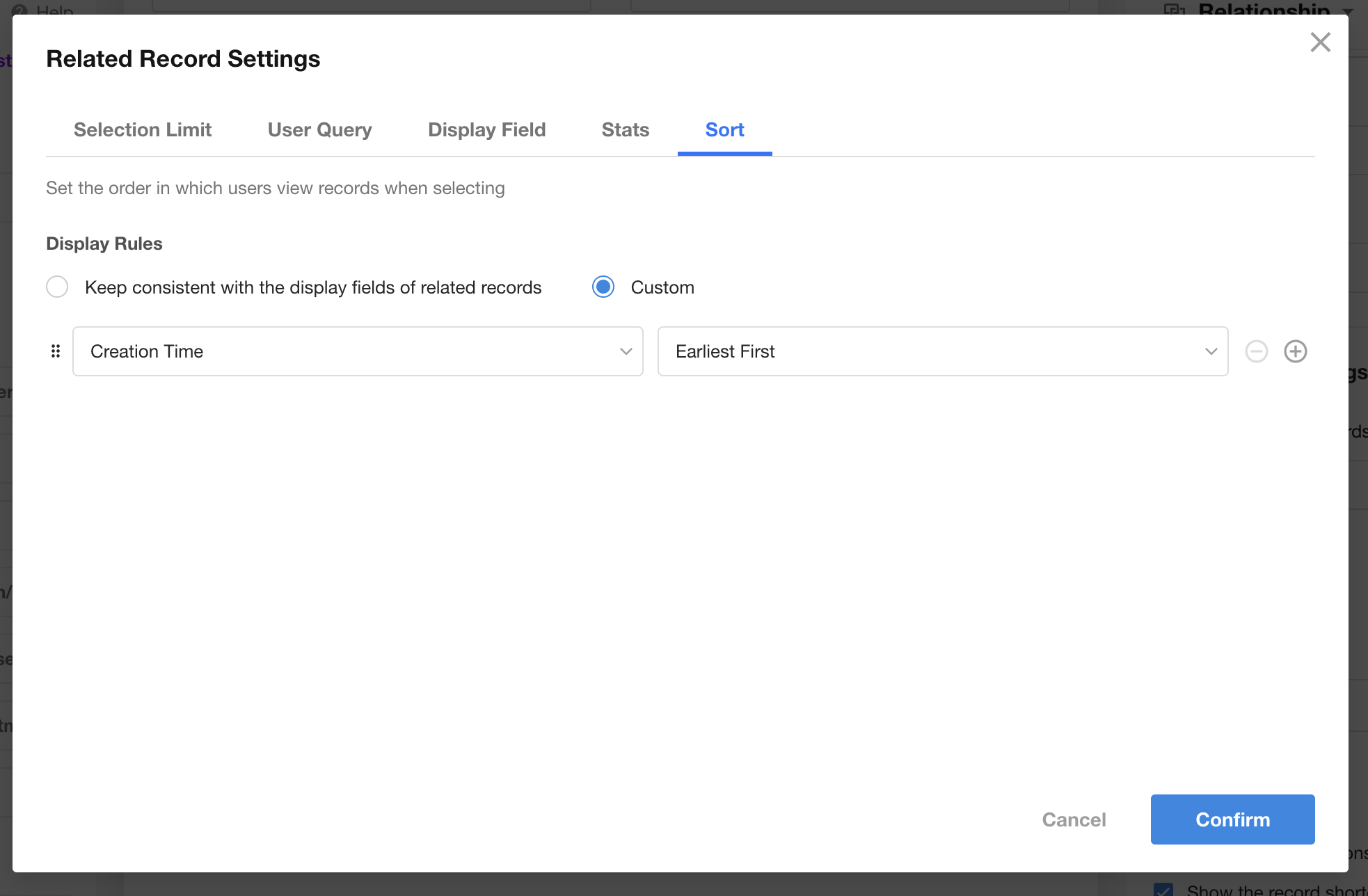
- Dropdown-Type Relationship Fields: Now Support Selection Popup with Filtering
Previously, relationship fields using the dropdown display mode only supported search and selection. This update adds support for popup-based selection, which includes filtering capabilities—ideal for handling records with similar field values.
Configuration path:
- In the relationship field settings, enable “Select existing records”
- Then click the gear icon to configure advanced options
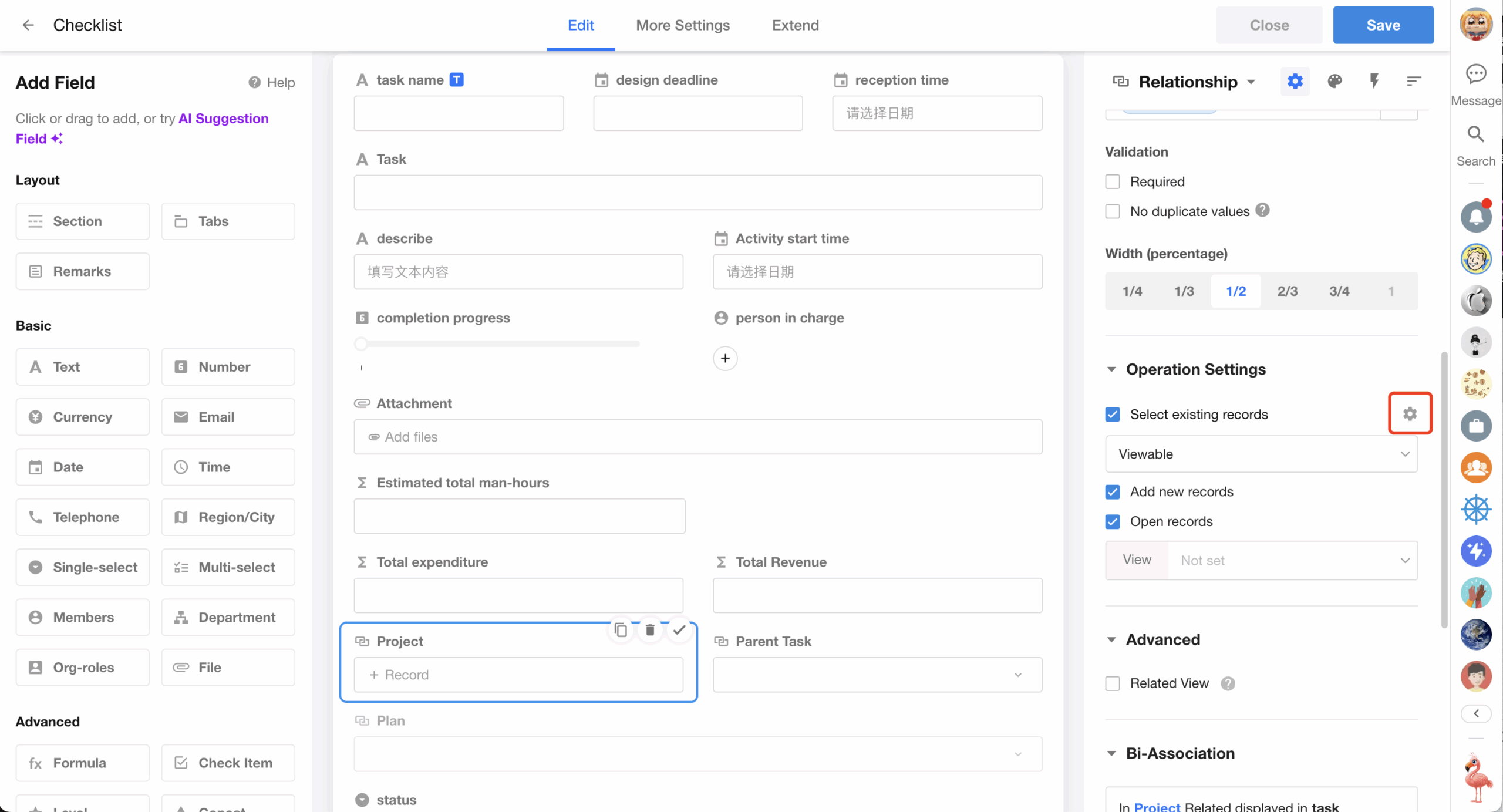
Once popup selection is enabled, you can:
- Configure filters to narrow down related records
- Define which fields are displayed in the selection list
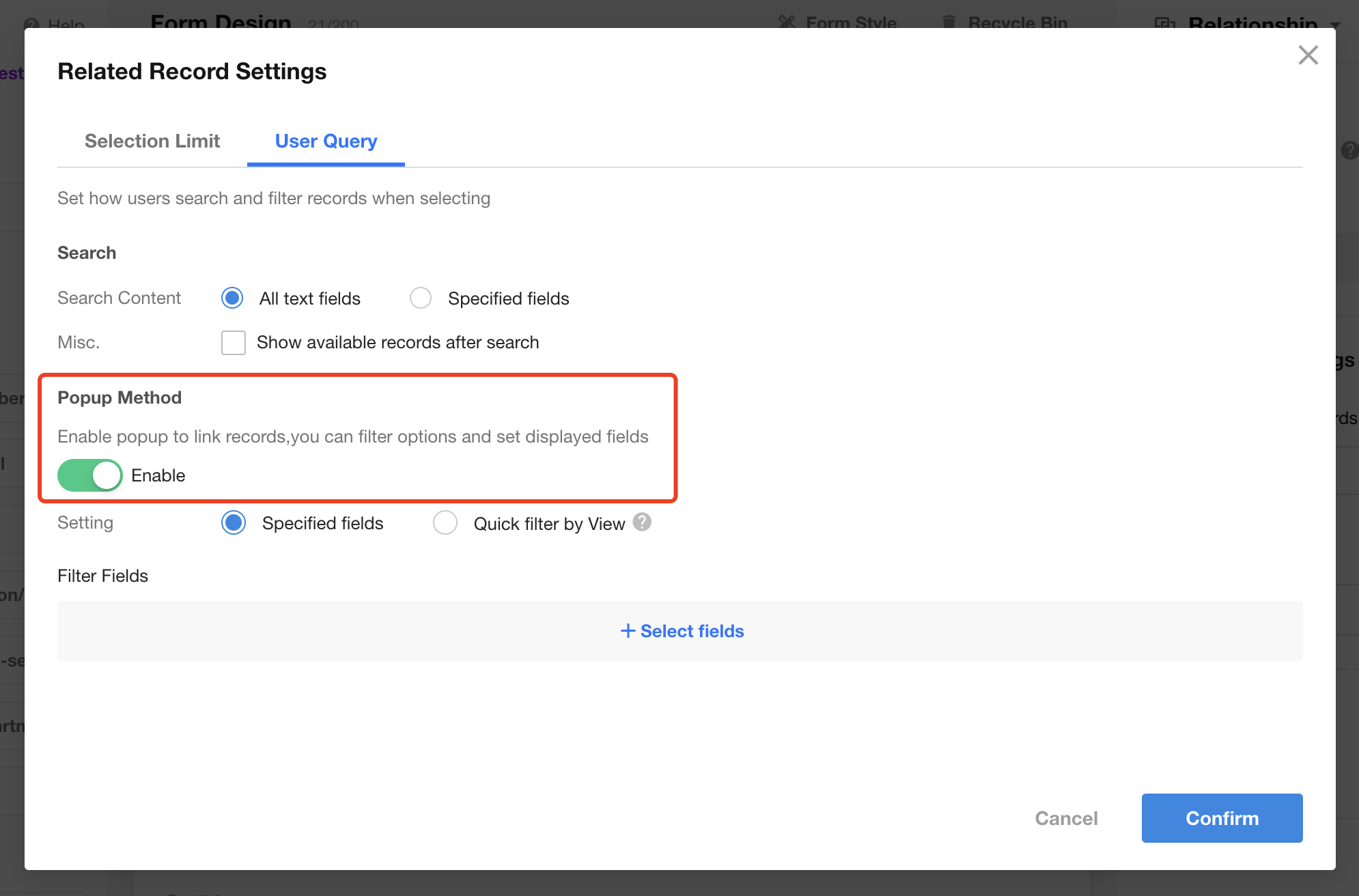
Date Fields: New Common Formats & 12-Hour Time Support
This update adds support for:
- Internationally common date formats
- Week-based date formats (e.g., including day of the week)
- 12-hour time display in date-time fields
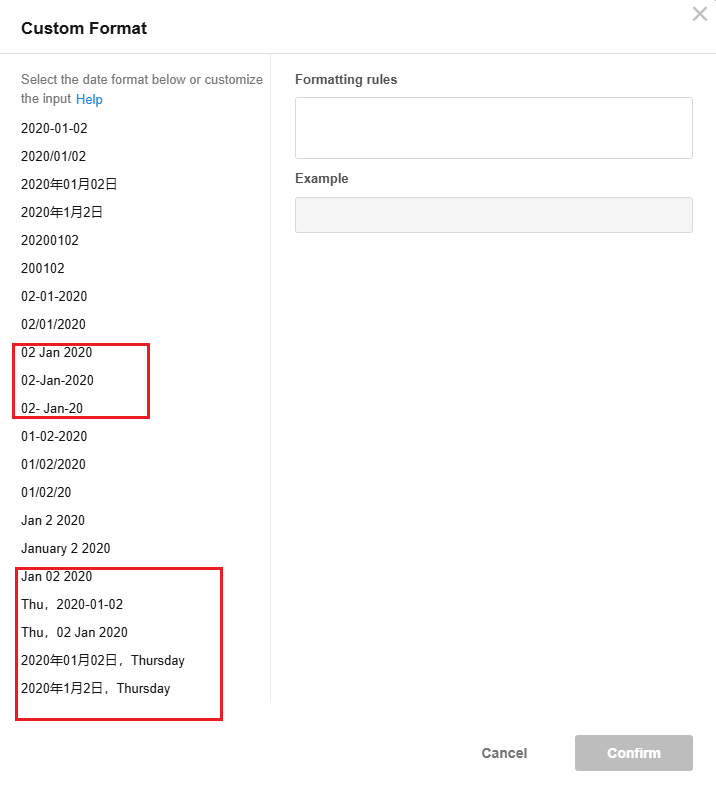
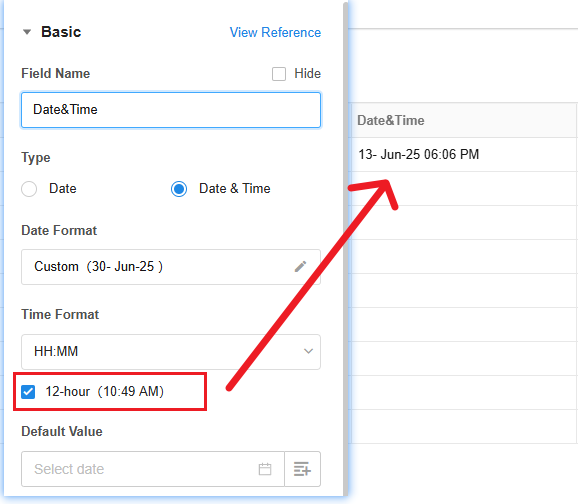 |
Rollup Fields: New Aggregation Methods & Support for Related Records
- Distinct Count (by Value Combination)
Supported by all aggregatable field types (excluding file and signature fields).
This method counts the number of unique value combinations across records.
For multi-select fields (e.g., multi-select fields, multi-select members/org-roles/department fields, multi-record relationship fields), the distinct count is based on the entire option set per record.
-
- Example:
Given field values: {a,b,c}, {a,b,c}, {c}
→ Rollup result: 2 (because {a,b,c} appears twice and {c} is unique)
- Distinct Count (by Individual Option)
Supported by option-type fields (single-select, multi-select, members, org-roles, department, and relationship fields).
This method deduplicates and counts individual option values across all records.
-
- Example:
Given field values: {a,b,c}, {a,c}, {c}
→ Result: 3 (distinct option values are a, b, and c)
Include Empty Values
Both of the above aggregation methods support an option to include empty values in the count.
When enabled, records with empty values will be treated as a distinct value and included in the count.
Note: If a relationship field is converted into a subform field, the above summary methods will be cleared automatically.
Aggregation on Related Records
Rollup fields now support aggregation based on related records, with the following methods available: Count of Filled Records, Count of Empty Records, Distinct Count (by Value Combination), Distinct Count (by Individual Option).
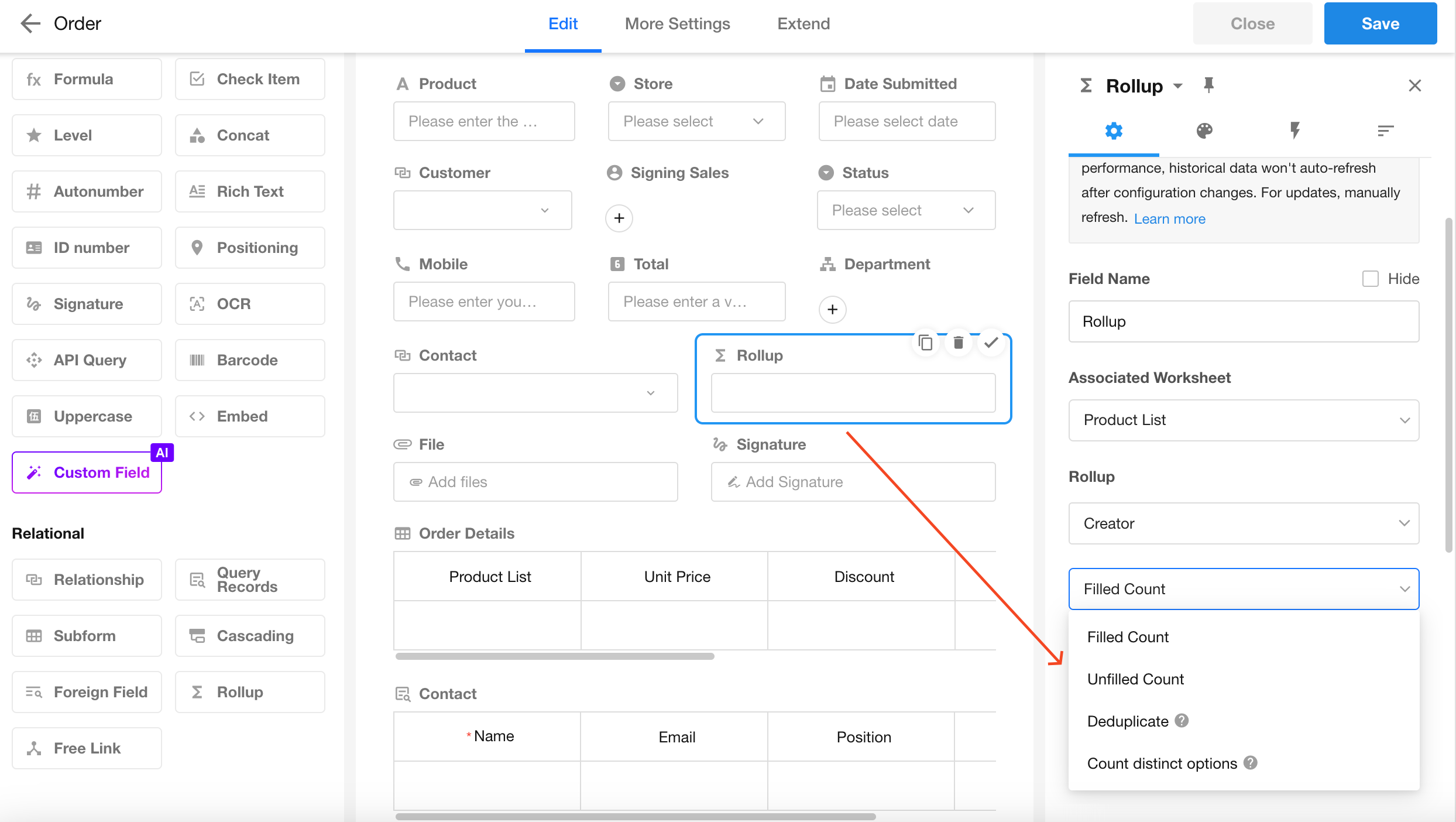
Update Subform Field Values Using Custom Functions
This feature is intended for users familiar with JavaScript. It allows for advanced logic to update fields within a subform by writing custom JS code to manipulate subform data.
Key Capabilities:
- New Front-End Events for Subform Fields: On Value Change, On Show, On Hide
- Functions can access subform field values as a two-dimensional object array.
- Within the front-end events, use custom functions to programmatically update subform field values.
- The function must return a data structure that exactly matches the current subform schema,
so the system can perform a full replacement update of the subform data.
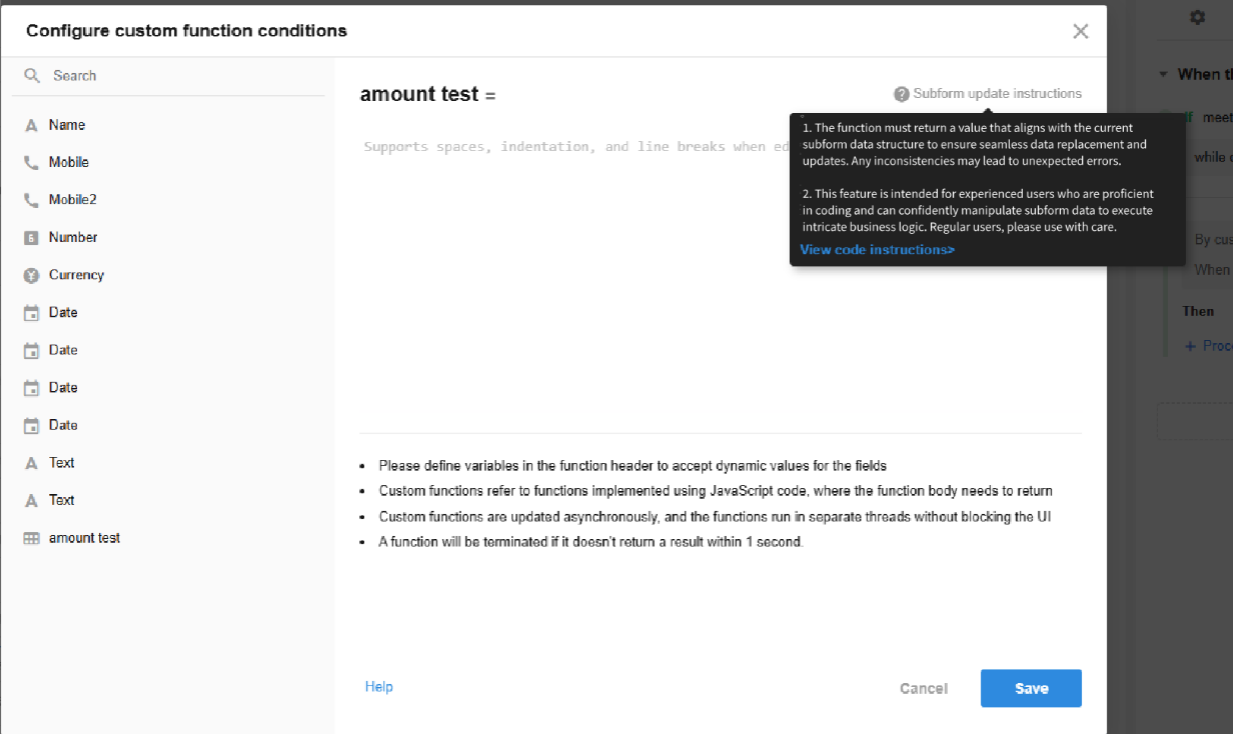
Custom Page & Chart
Image Component in Custom Pages: Click to Preview and Zoom
The image component now supports click-based interactions:
- Clicking an image opens a preview with zoom in/out functionality
- Optionally, clicking the image can redirect to a configured link
These enhancements improve flexibility and usability in interactive page design.
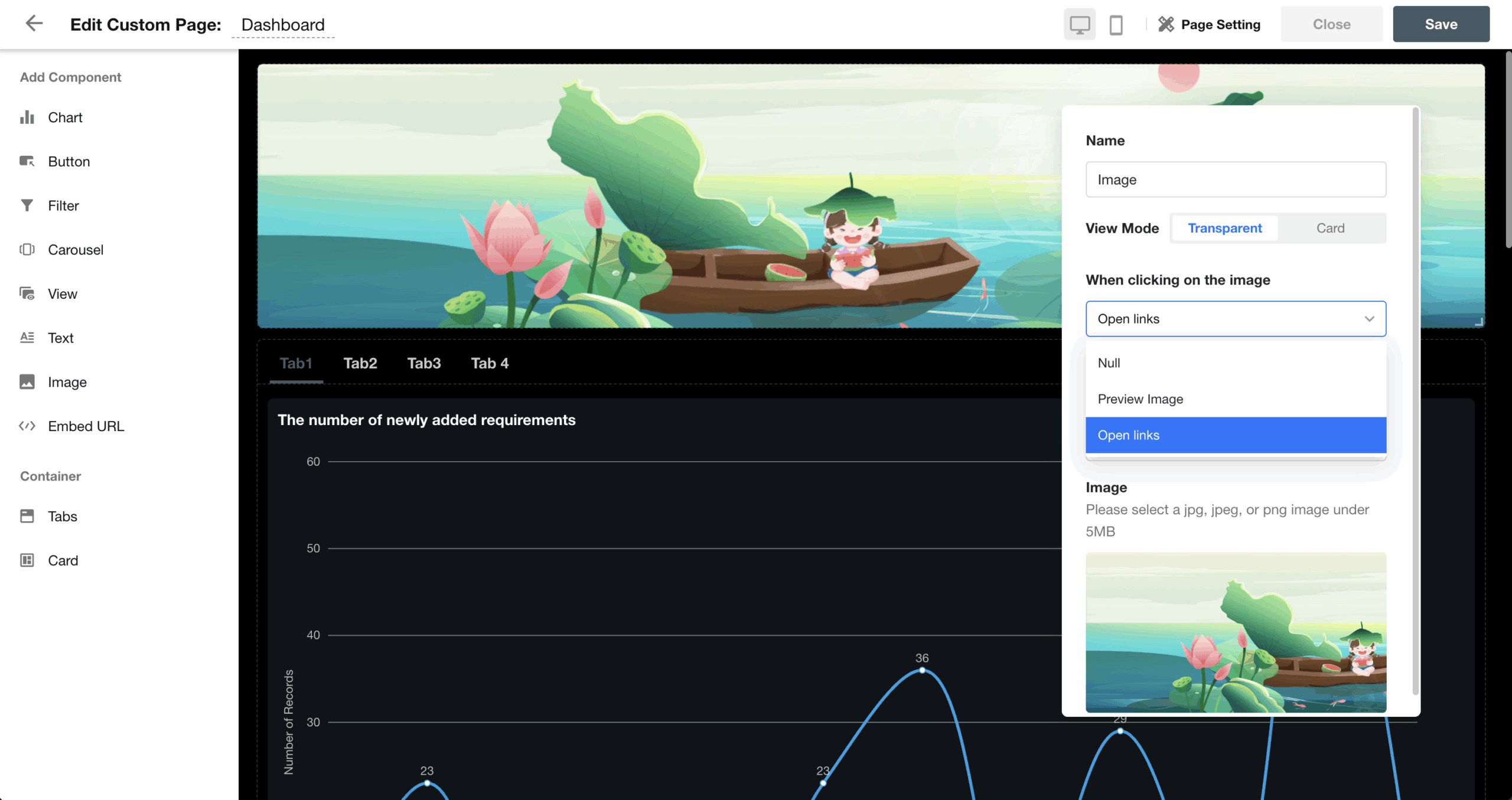
Number Charts: Custom Background Options
Single-value charts now support custom background settings, including:
- Solid color or gradient background
- Image background (upload supported)
This update not only enhances the visual appeal of charts, but also improves readability and presentation.
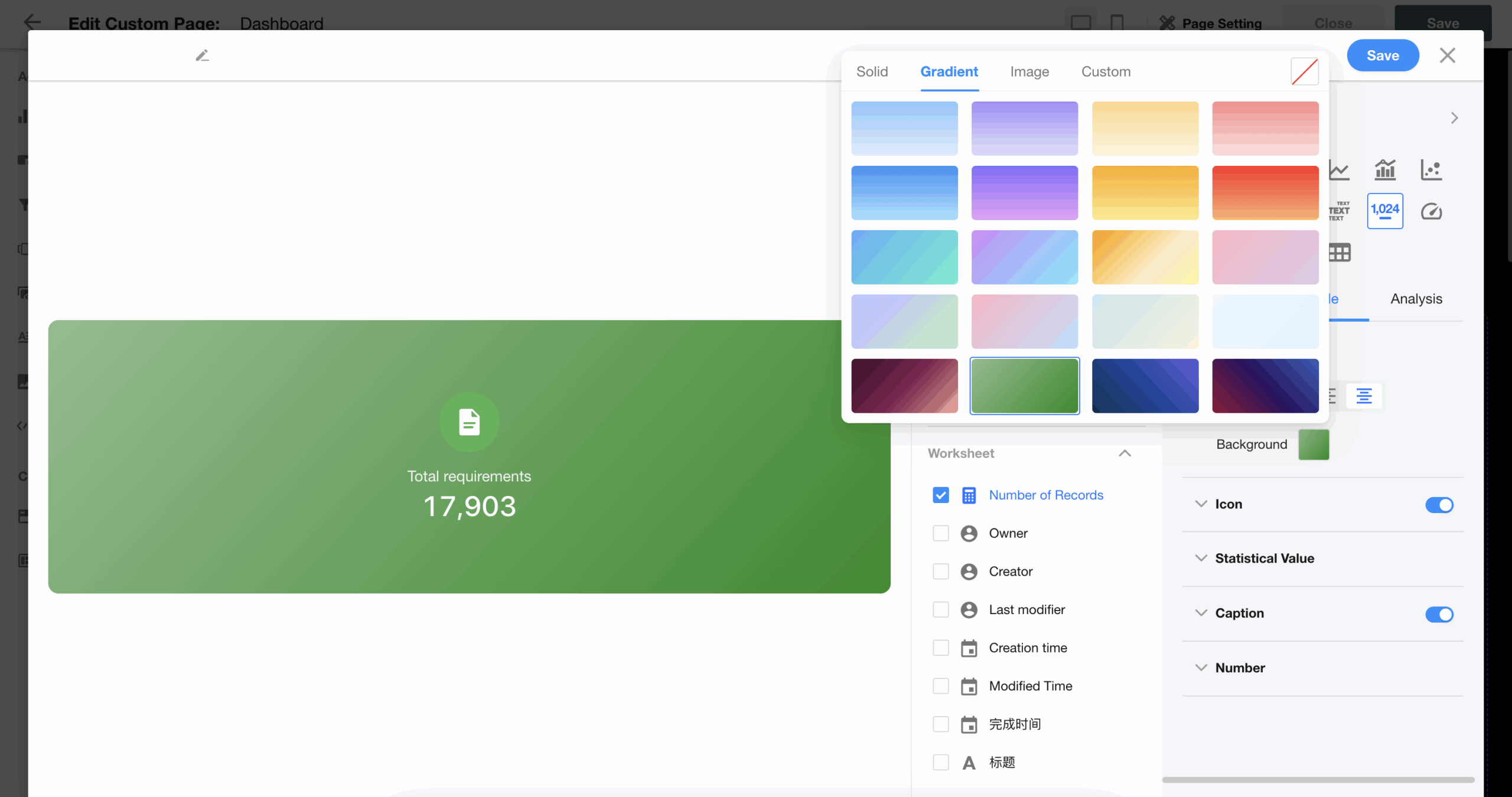
Integration Center
Added a “Test” Button for Basic Auth Authentication
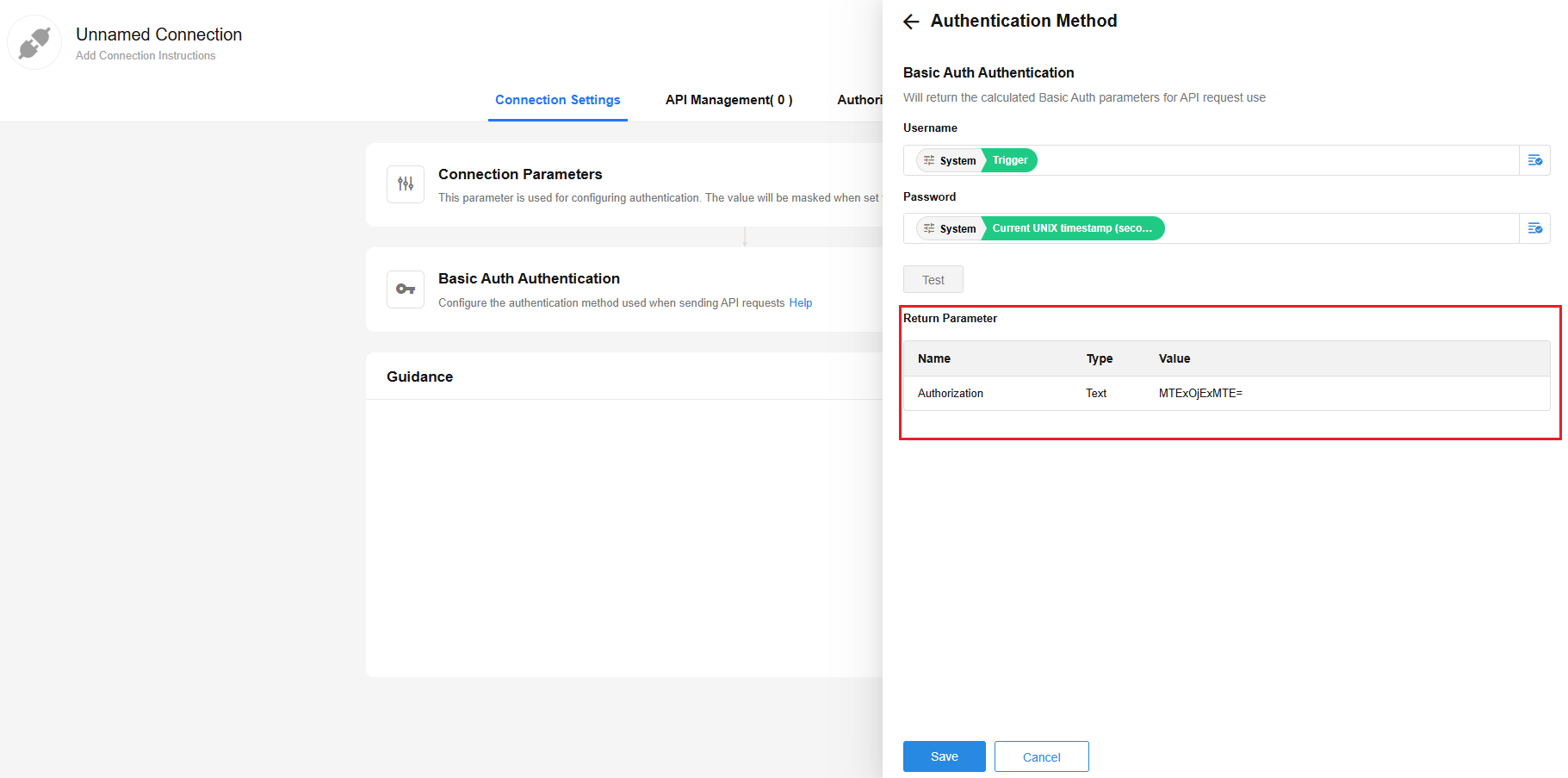
Authorization Code Authentication APIs: Support Conditional Account Queries
• Worksheet – API Query control, Call Integrated API event
- Workflow – Call Integrated API
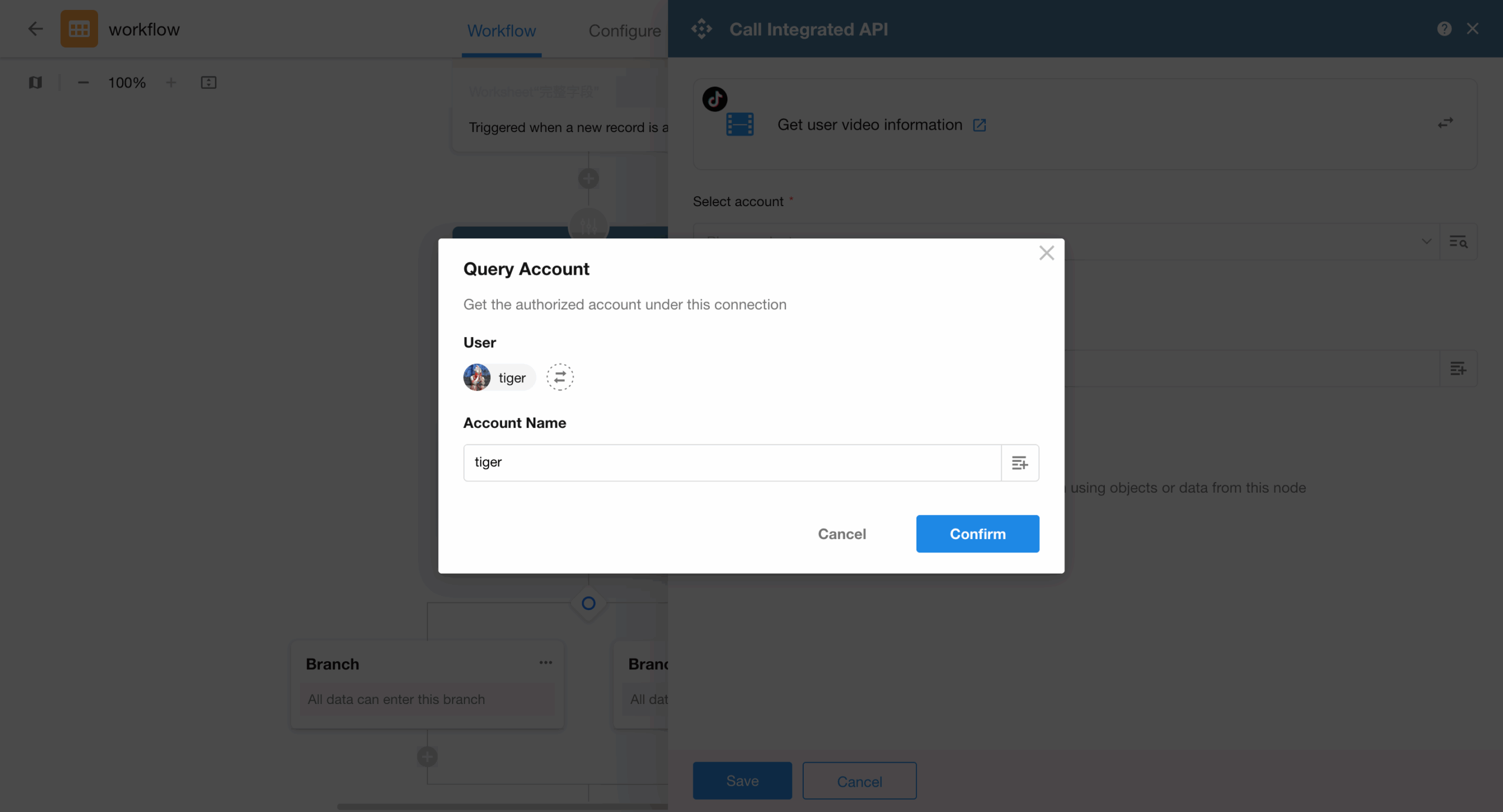
Plugin
View Plugin Enhancements
- Environment variables now support application-level configuration
• Plugin usage status can be stored and accessed via API
- “Relationship Field Selector” added as a new parameter type in plugin settings
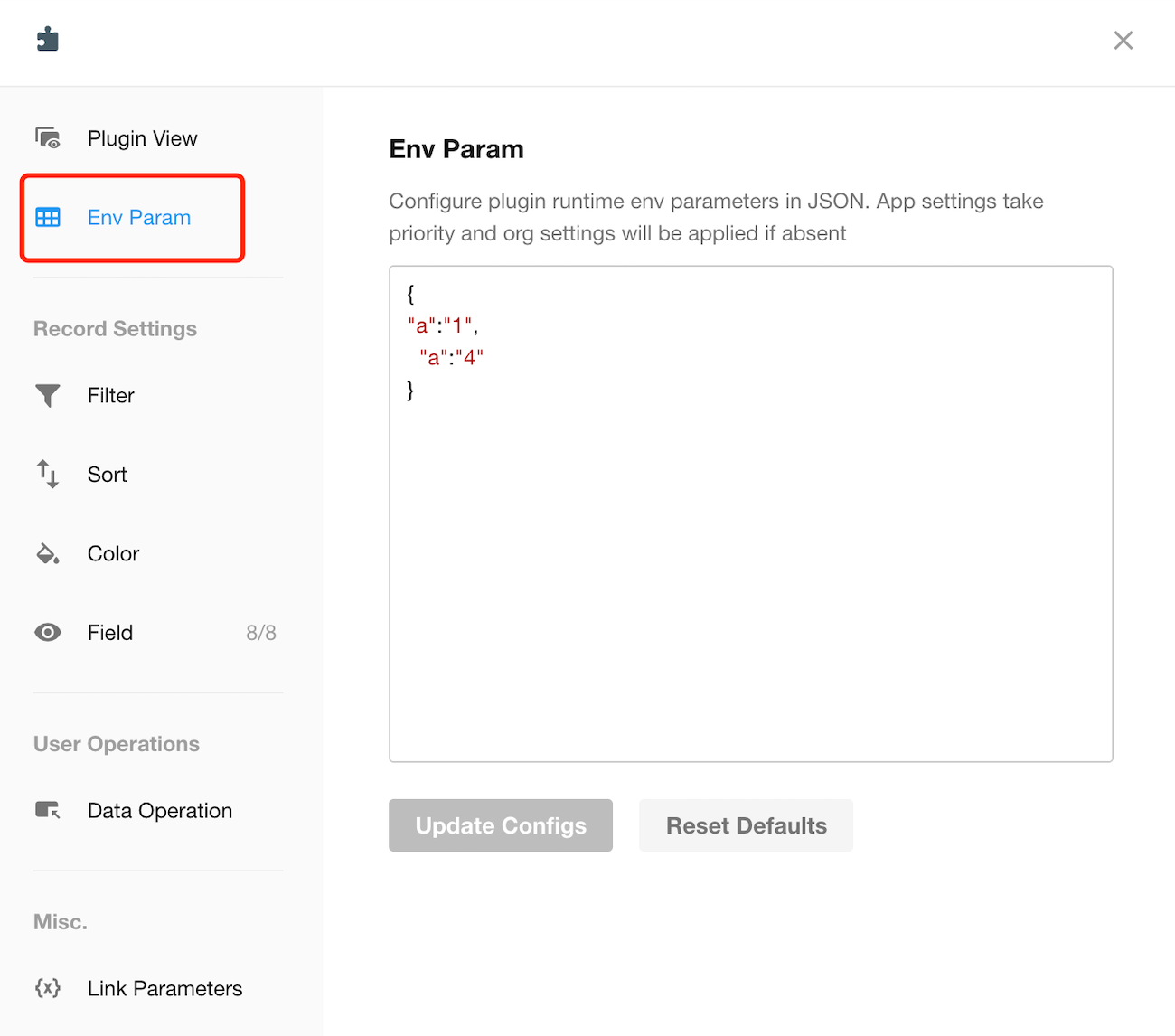
Workflow Plugin Export Support
Workflow plugins used within an application will now be exported along with the application.
Exported plugins are only available within the application and will not be created at the organization level.
Organization Management
Customizable Member Information Display
Organization administrators can now customize the information displayed in a member’s profile and business card, allowing for more relevant and flexible visibility of member details.
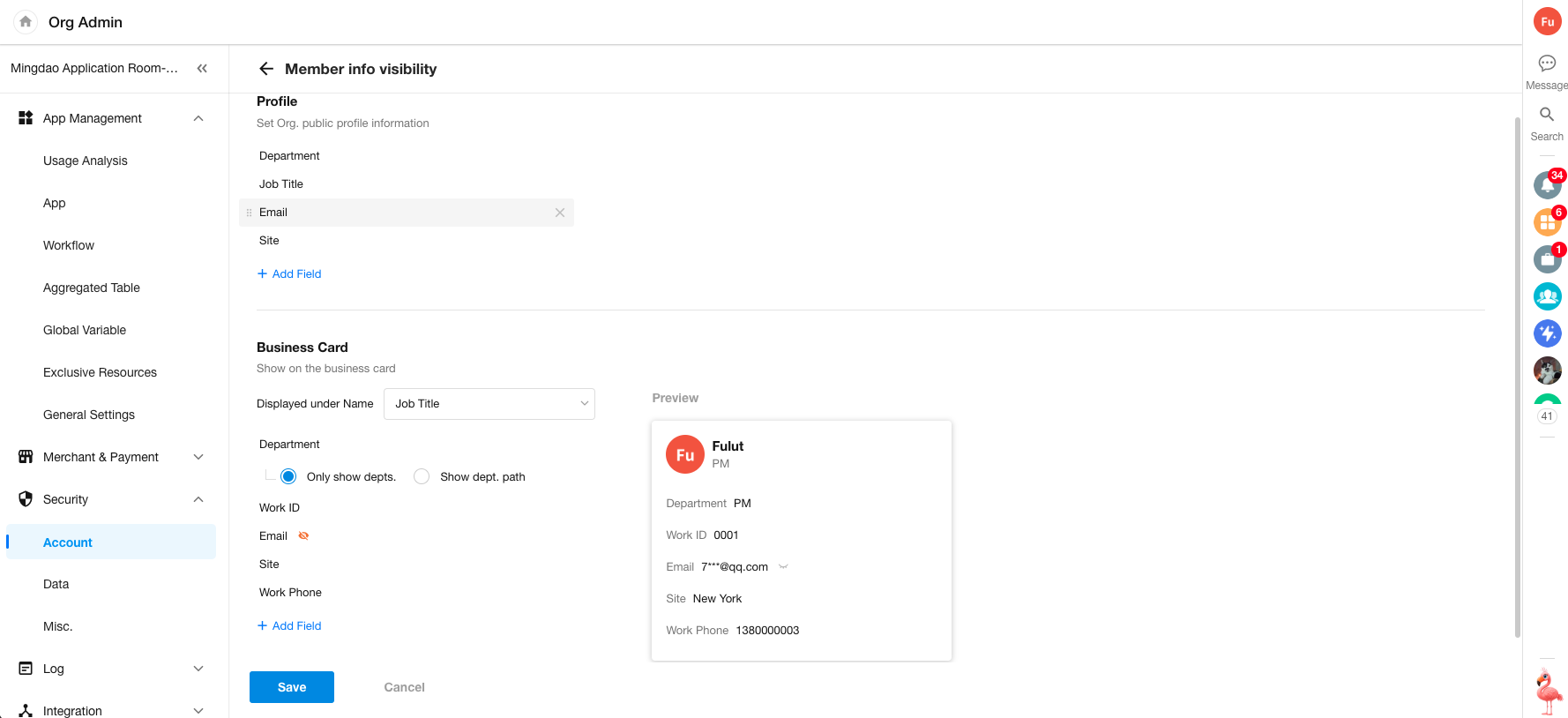
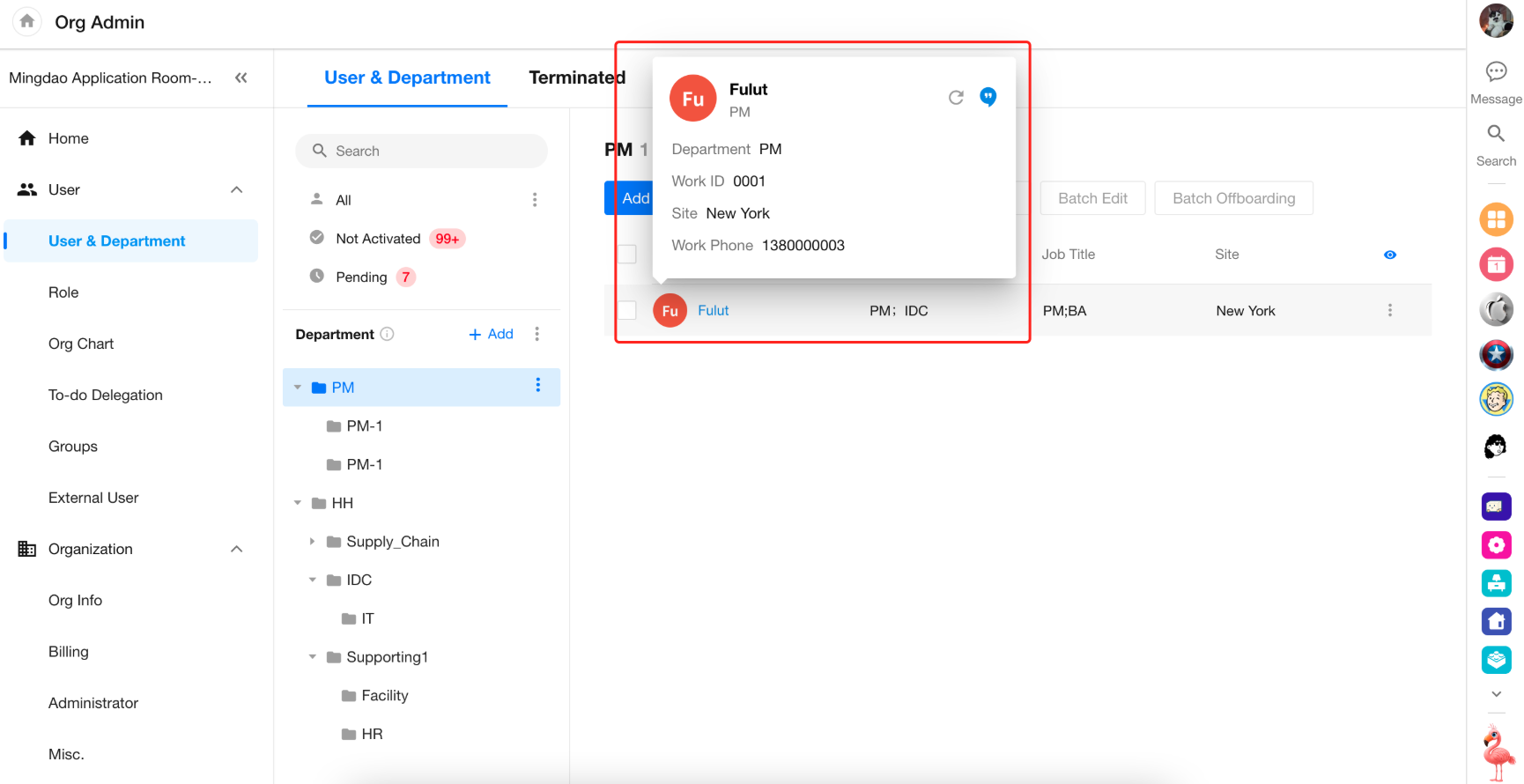 |
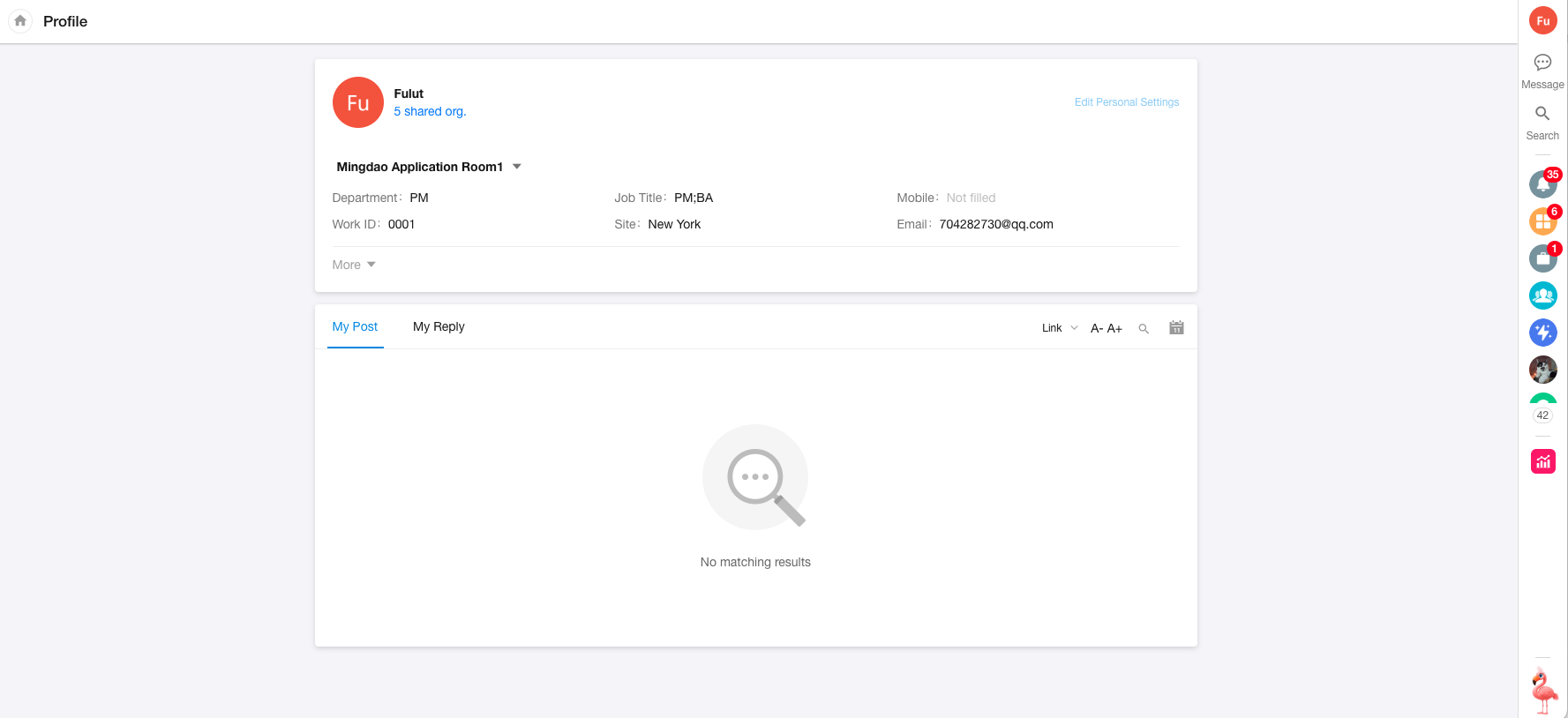 |
Multi-Position Support for Members
Organization administrators can now assign multiple positions to a member across different departments.
- These assignments are displayed in the member’s profile。
- When multiple positions are added, a new “All Positions” field is shown, listing all roles held by the member.
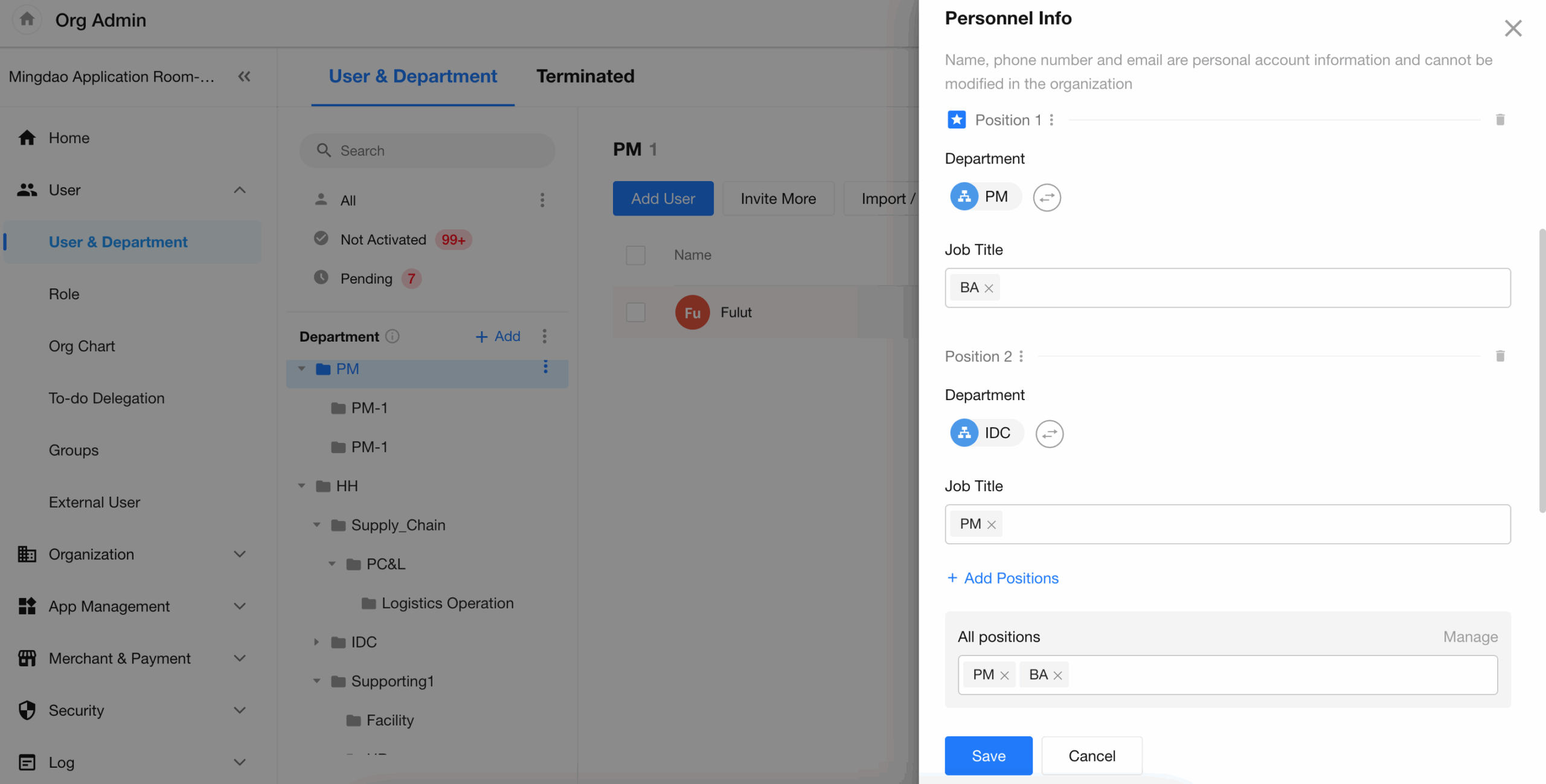
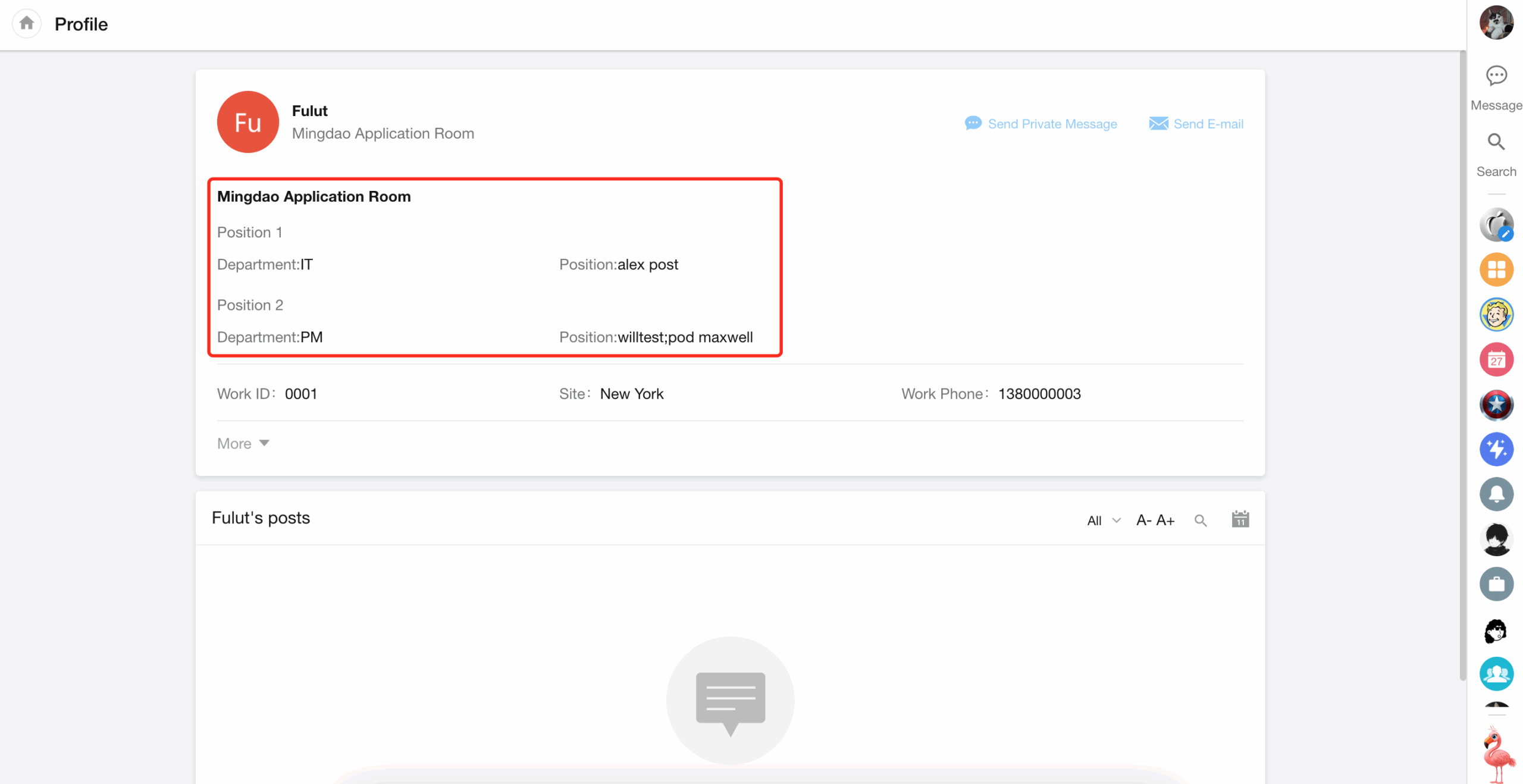 |
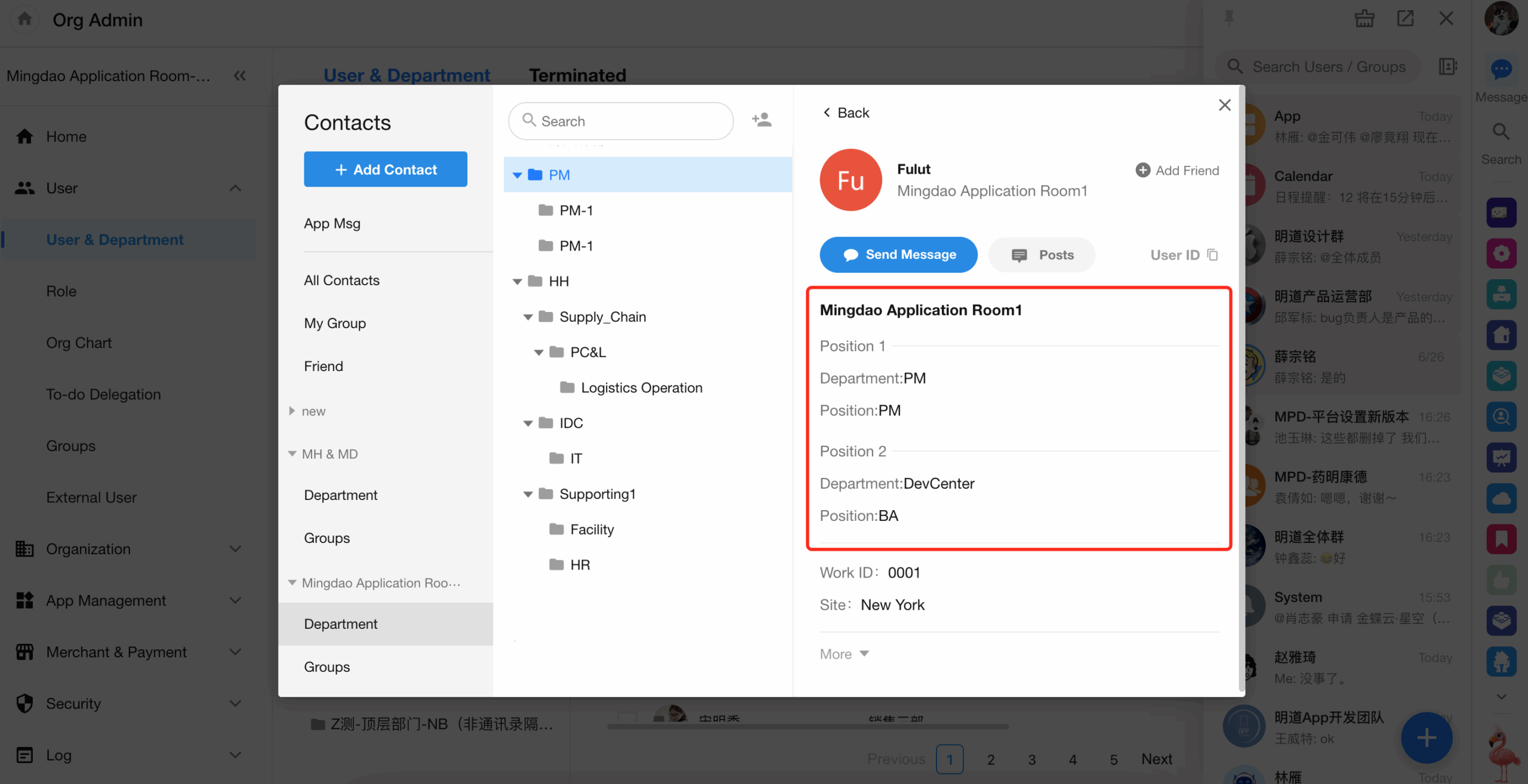 |
Enhanced Organization Management Logs
The operation logs in organization management have been expanded to include actions related to: members, departments, organizational roles, org charts, to-do, external users, organization information, billing, applications, workflows.
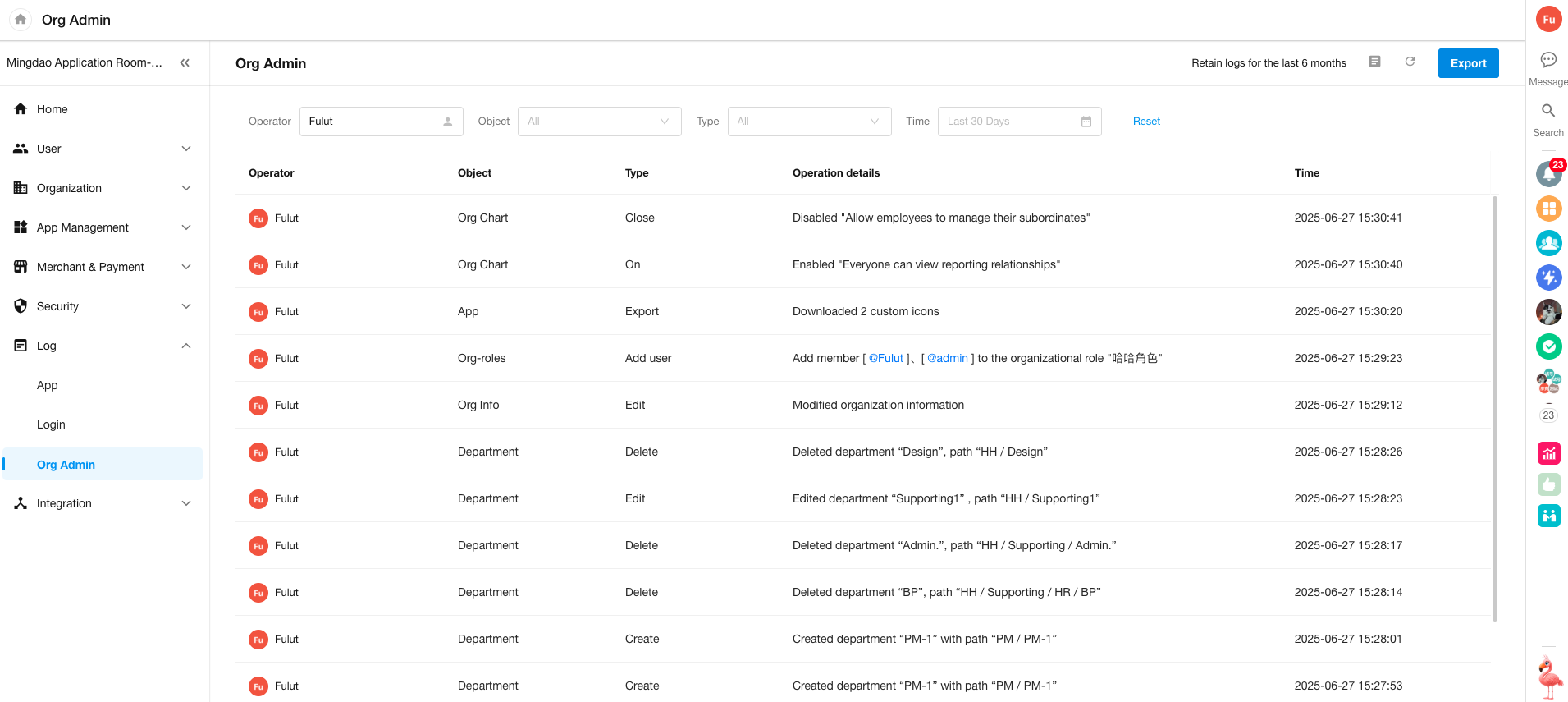
Data Export from Usage Analysis
In the Usage Analysis section, when viewing usage data by application or by member, you can now export the datafor further analysis or reporting.
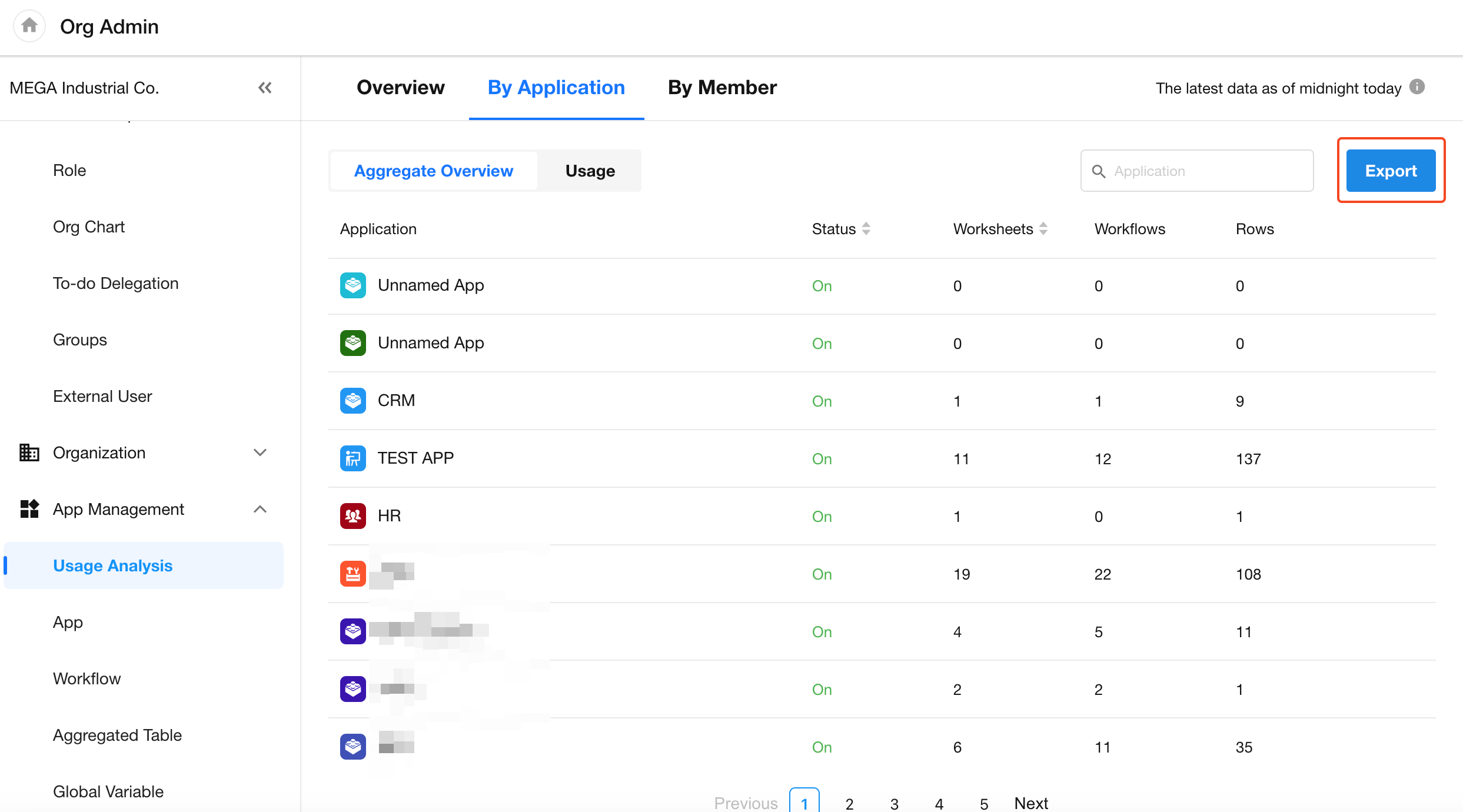
APP&H5
Record Printing
With this update, H5 users can now select a saved print template from the “More actions” menu on a record and export or download the record for printing.
- Supported template types: Excel print templates, Word print templates
- Supported platforms: H5 browser, WeCom, Lark
Cascading Fields Now Support Search Functionality
Other Improvements
Upgraded Administrative Division Chart
The administrative division chart has been upgraded to support adaptive rendering of geographic boundaries, along with improved data loading performance and smoother interactions.
Charts: View Raw Data from Aggregated Table
When using aggregated tables as the data source for charts, users can now view the underlying raw data.
Note: Raw data is read-only; users cannot open records or perform any actions on them.
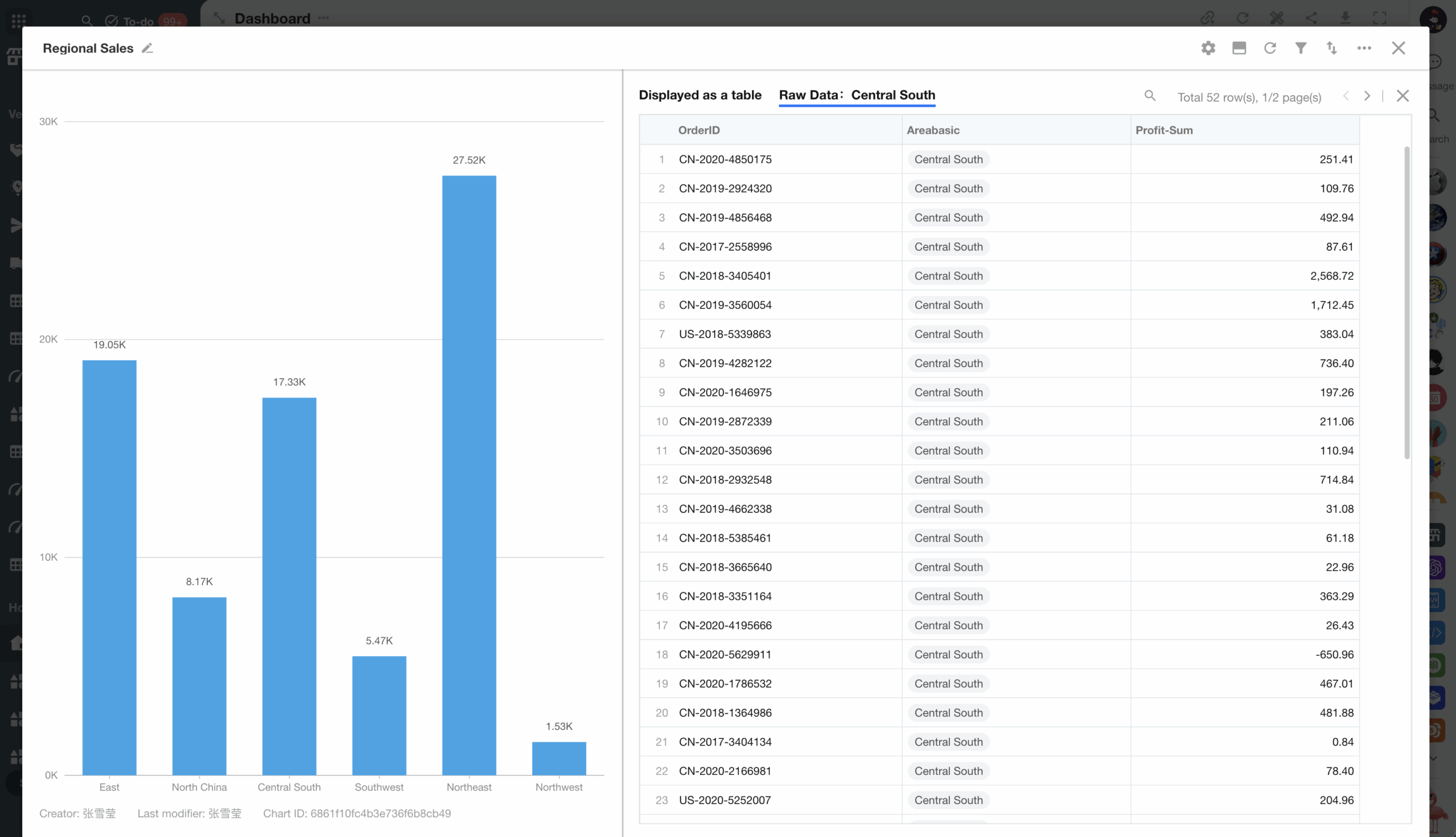
External Portal: Option to Bind Mobile Number/Email
A new setting has been added under login configuration, allowing users to bind their mobile number or email address after logging in.
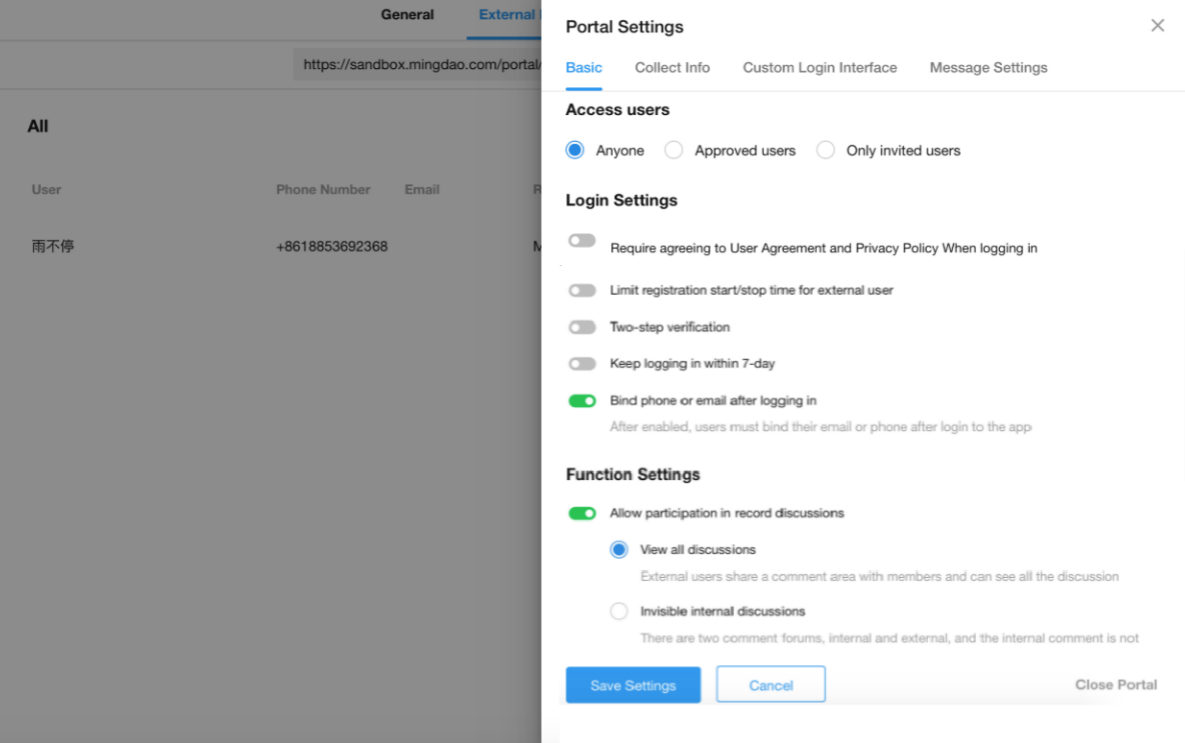
DingTalk Contacts Sync: Use Custom Field to Control Sync
A custom field has been added to the DingTalk user info management:
- Employees with a field value of 0 will be synced
- Employees with a field value of 1 will not be synced
Lark Contacts Sync: Use Custom Field to Control Sync
A custom field has been added to the Lark user info management:
- Employees with a field value of Sync will be synced
- Employees with a field value of Not Sync will not be synced
Word/Excel Print Templates: File Fields Can Display Filename Only
When configured in the field code, file fields in Word/Excel print templates can now be set to display only the file name during printing.
Control Record Access from Mention Notifications
You can now configure whether mentioned users in record discussions are allowed to view the record.
- When disabled, even if a user is mentioned in record discussions, they cannot access the record unless they have the required view or record permissions.
- This rule also applies to notifications triggered from members fields when a user is added with “send notification” enabled.
Business Rule – Relationship Fields: New Filter Conditions
For multi-record relationship fields (card/dropdown), new filter conditions are available “Is any of/Is none of”.
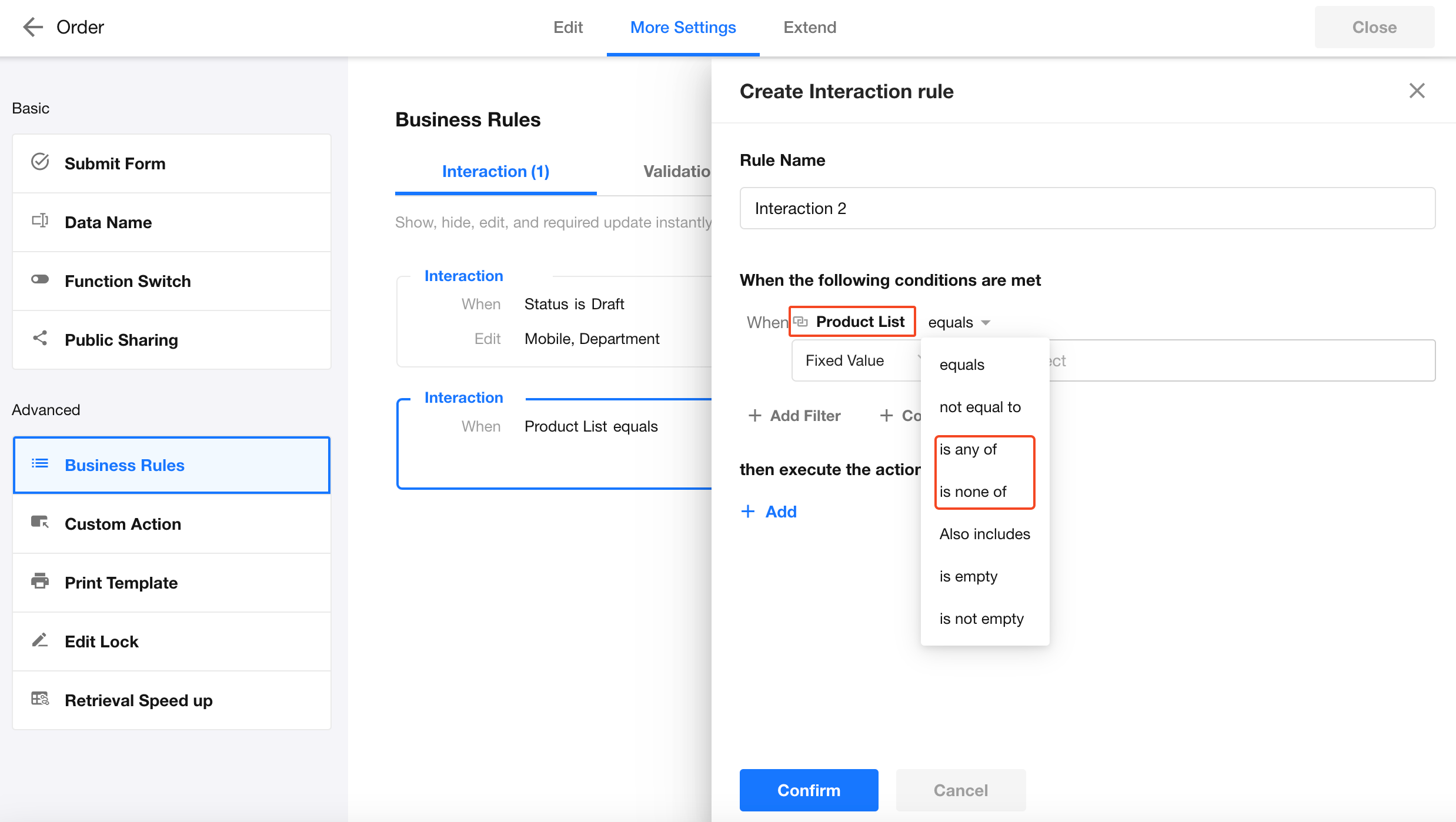
Field Decoding Actions Are Now Recorded in Application Logs
When a user decodes and views a field in a view or record, a field decode log will be generated.
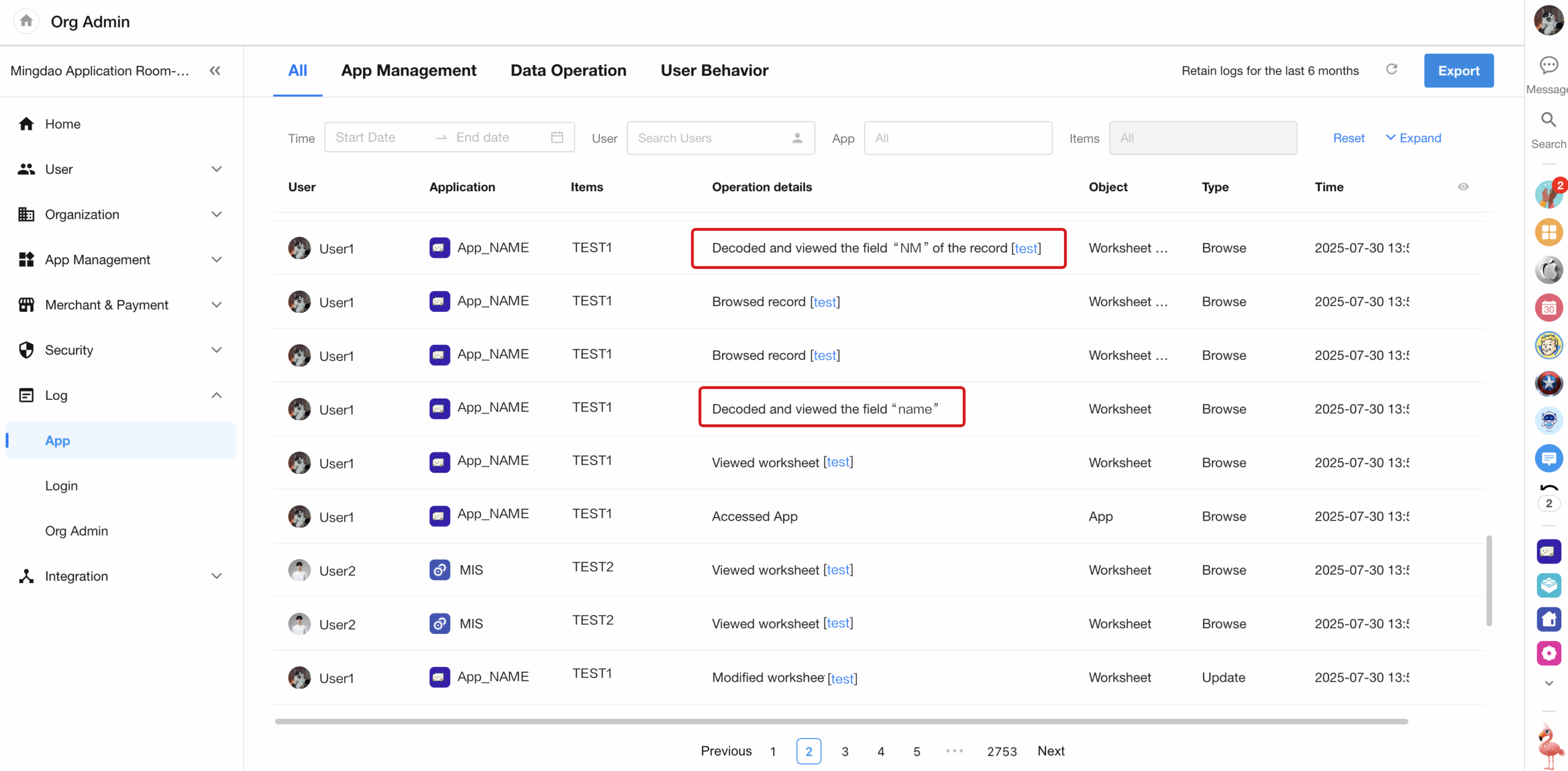
Print Template Duplication
Template duplication is now supported when configuring print templates.
Supported template types: System print templates, Excel print templates, Word print templates, QR code/barcode print templates.
The following configurations will be copied: Usage scope, Filter conditions, Template settings; Original print file.
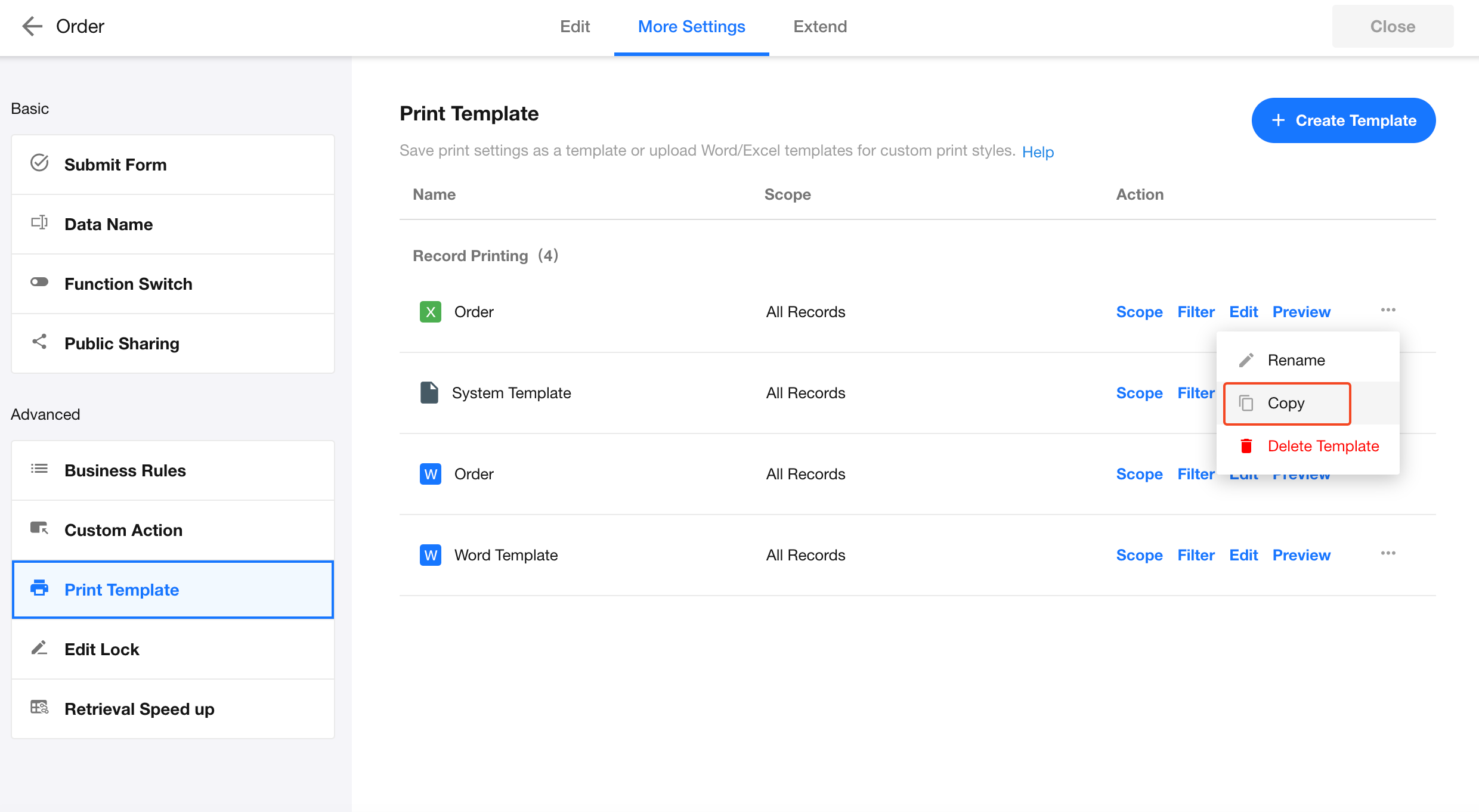
Autonumber Fields: Date/Time Values Follow Application Time Zone
When referencing date/time fields (e.g., Created Time, Date/Time fields) in autonumber fields, the values can now be displayed based on the application’s time zone. This option is unchecked by default.
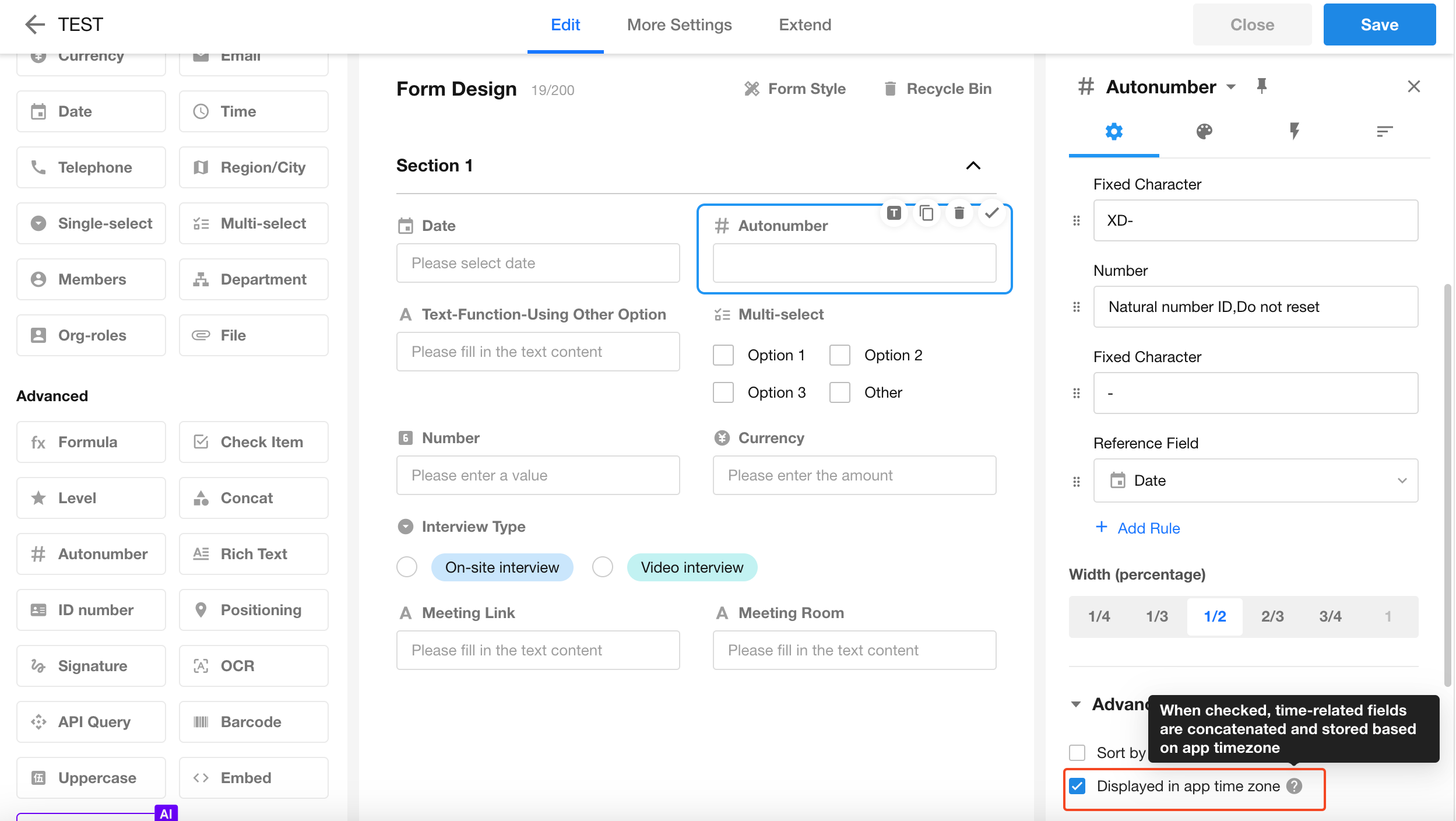
 |
Approval Nodes: Field Decode Configuration
When fields in a worksheet are configured to be masked, the following workflow nodes now support “Data Masking” label and “Decode” settings: Initiate Approval Flow, Approval, Fill in, CC nodes.
